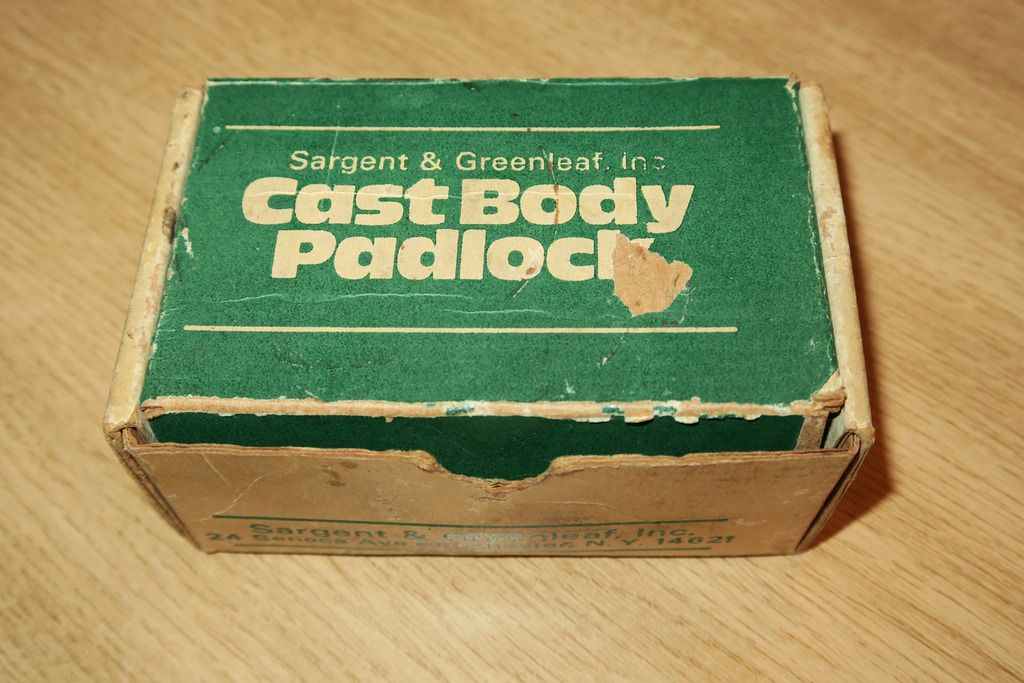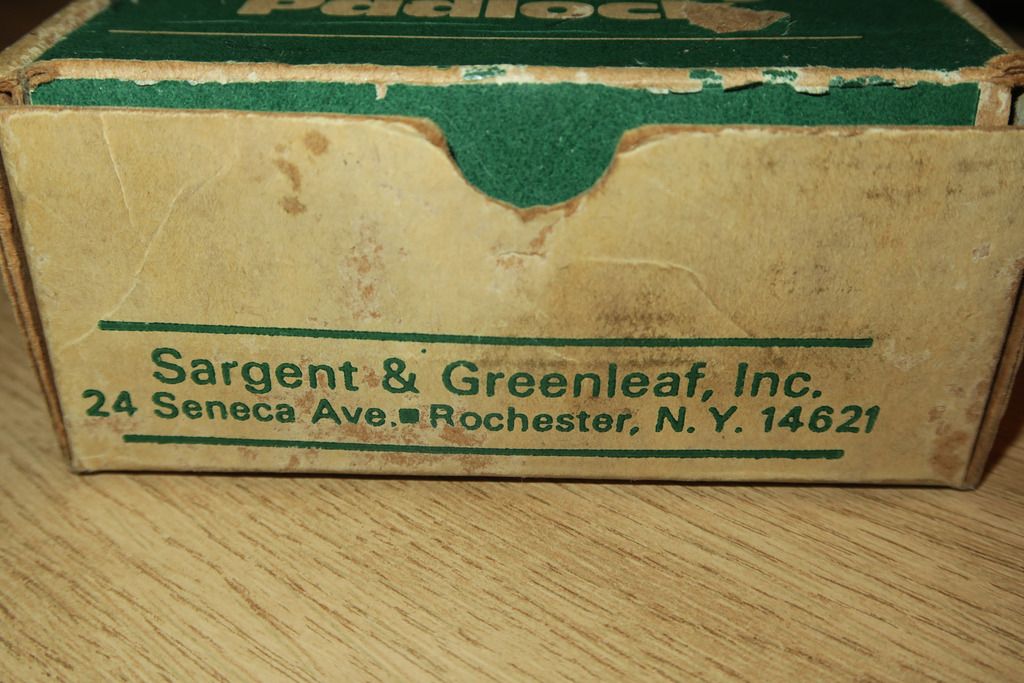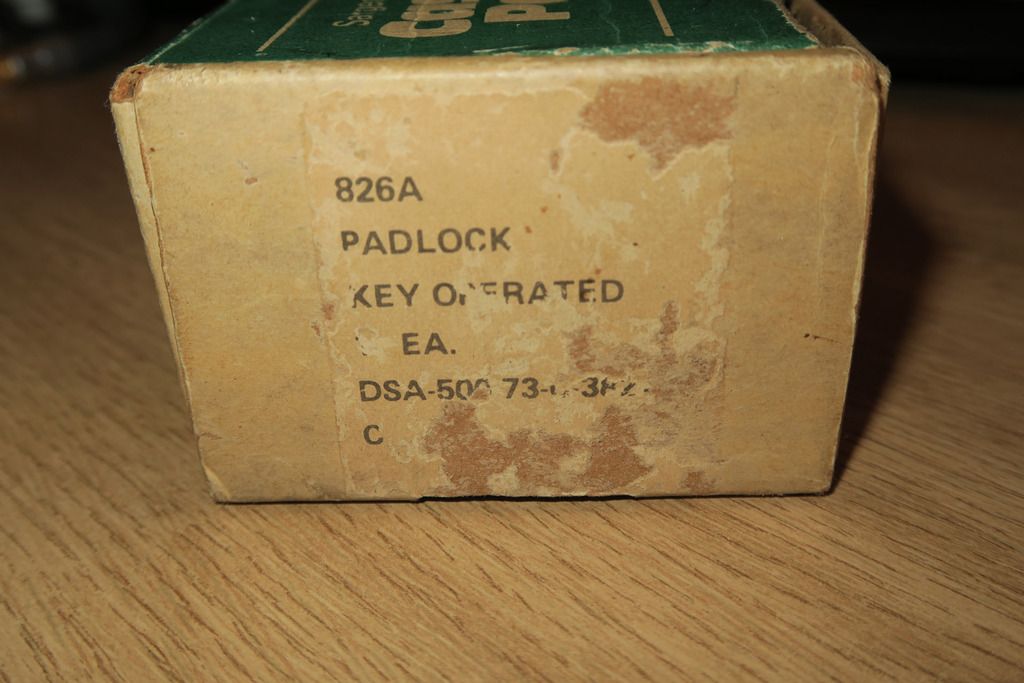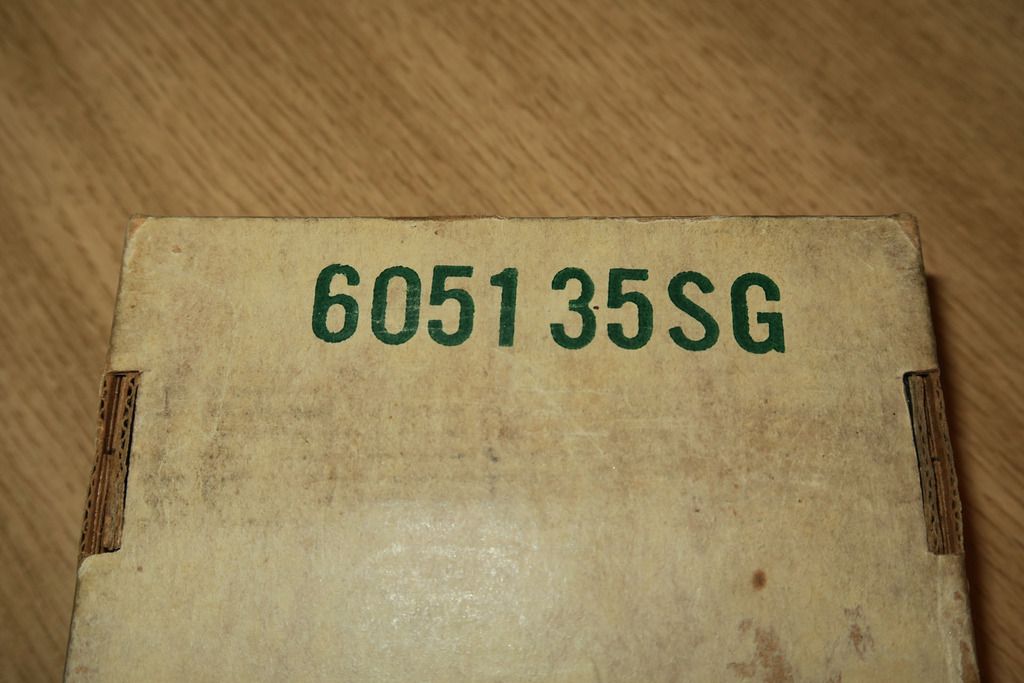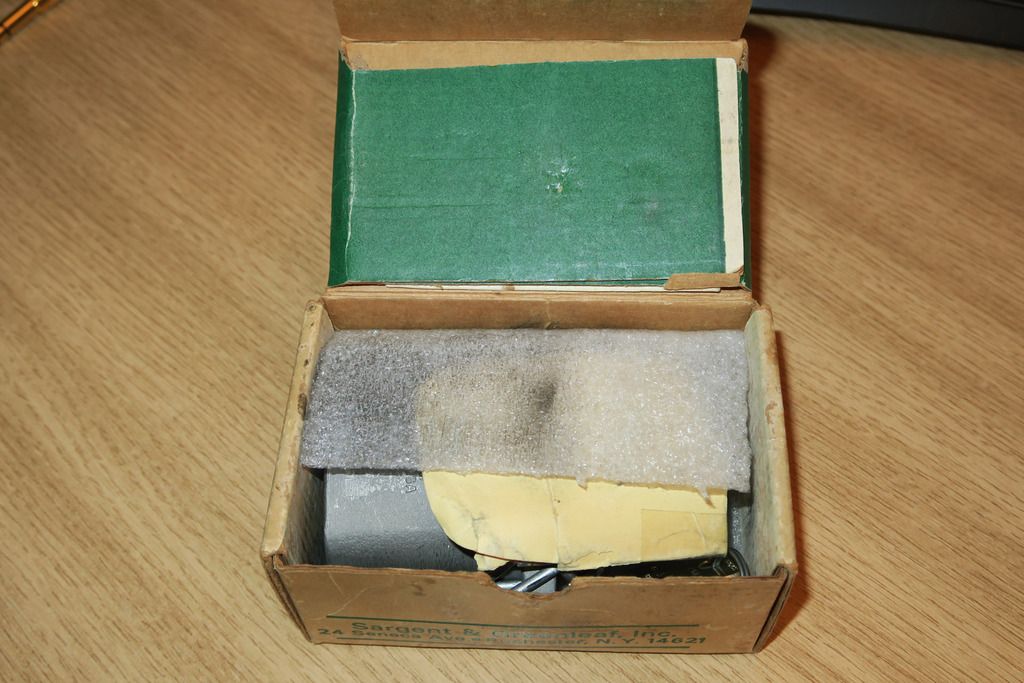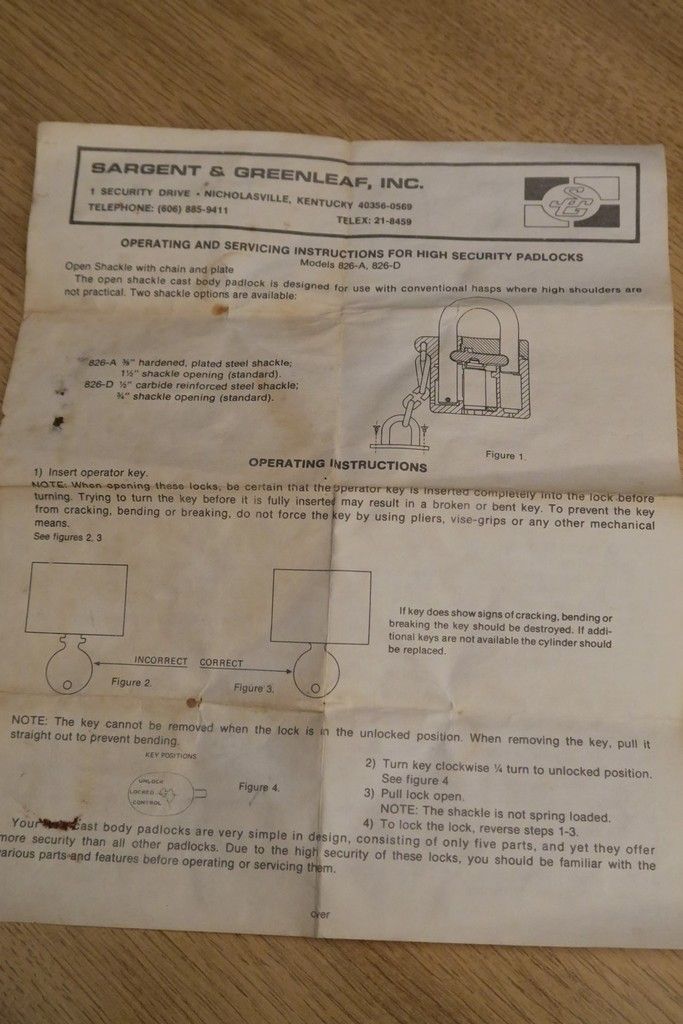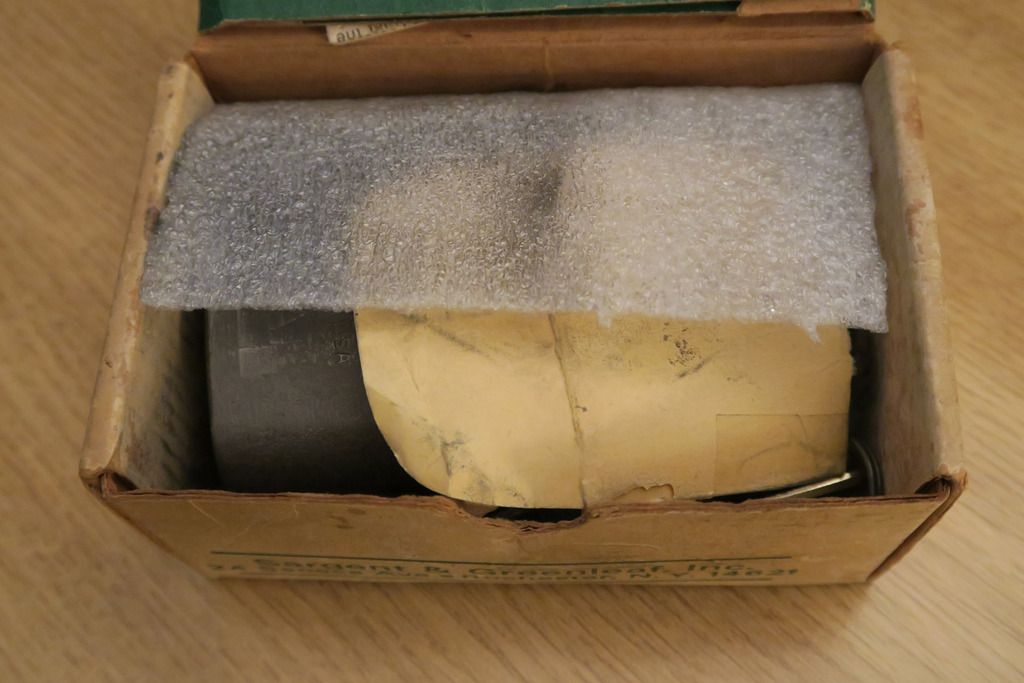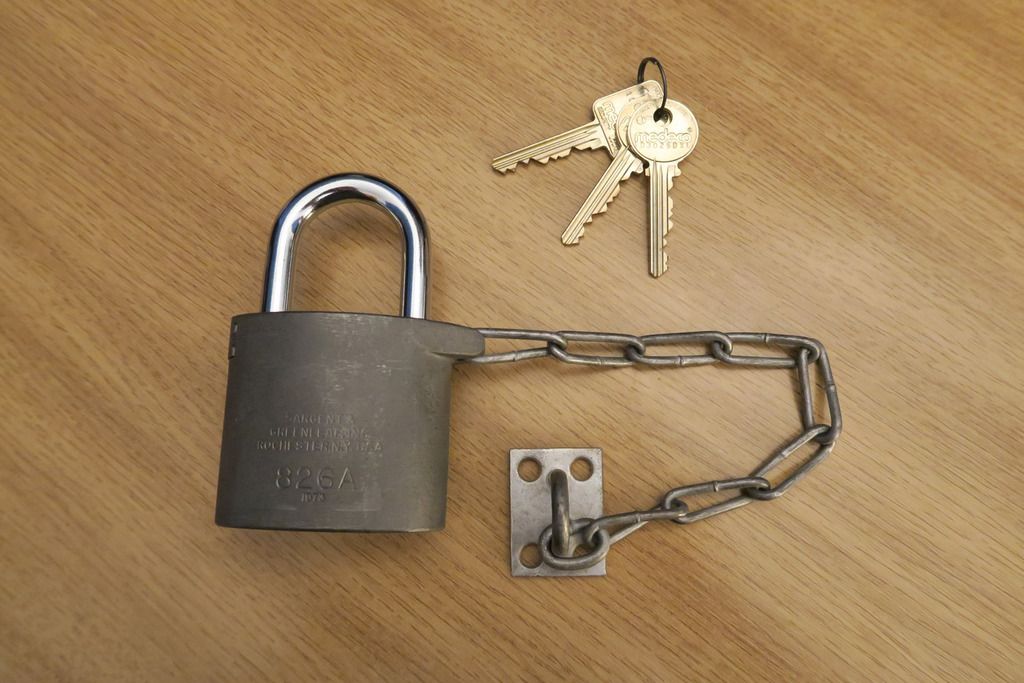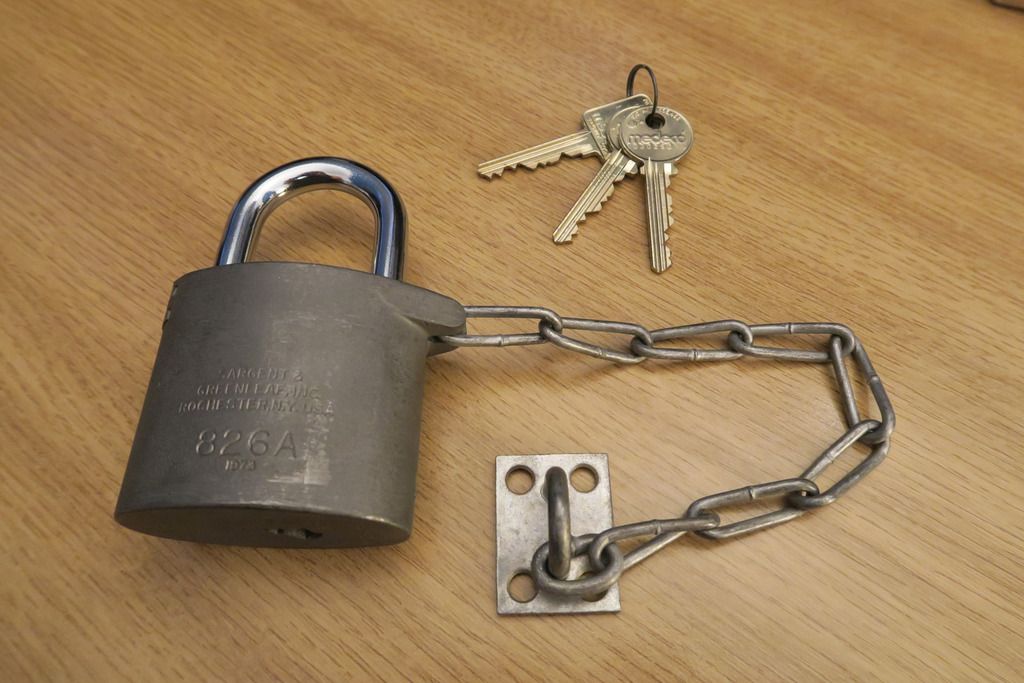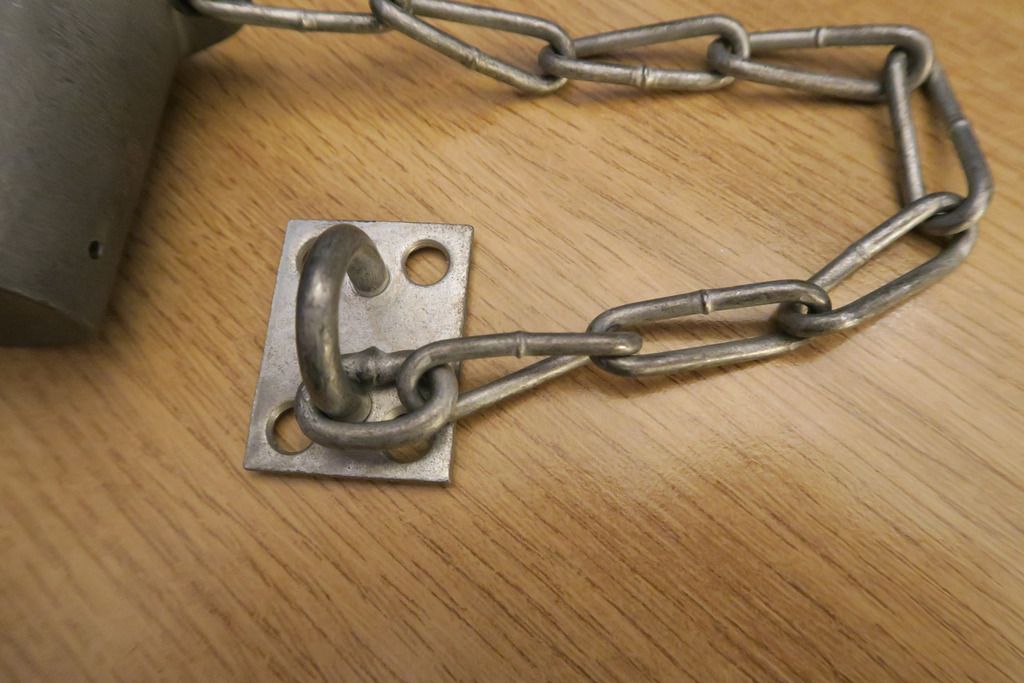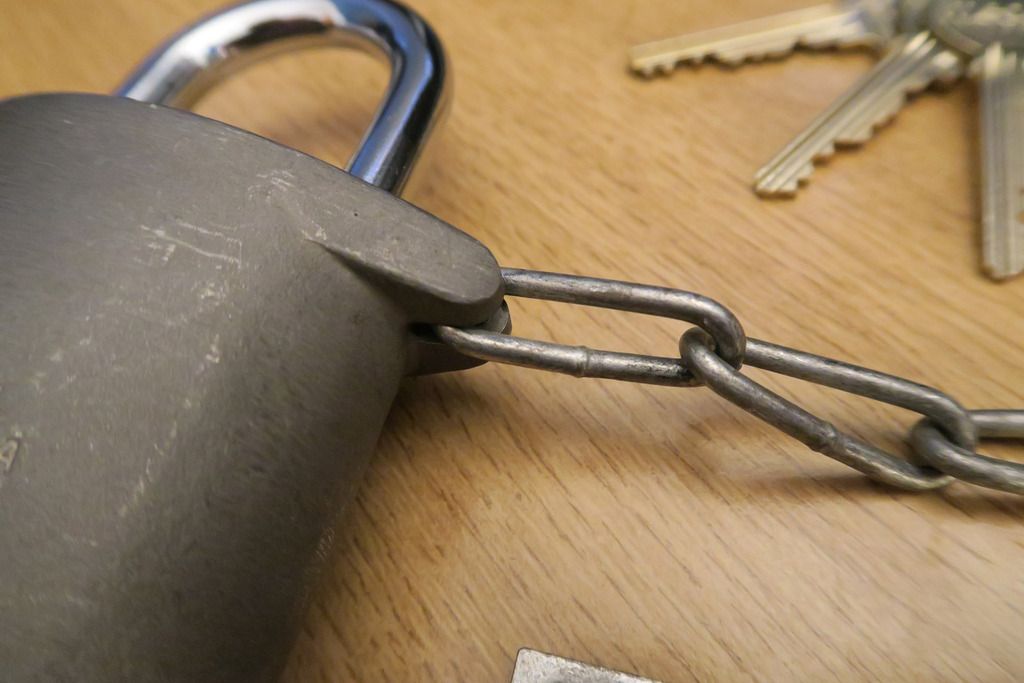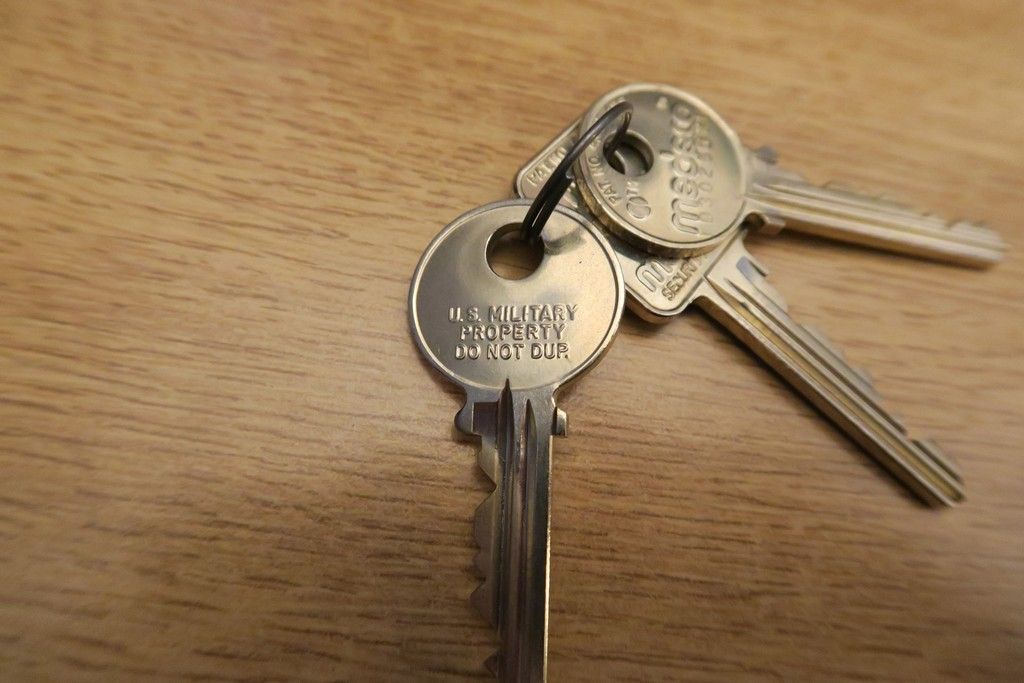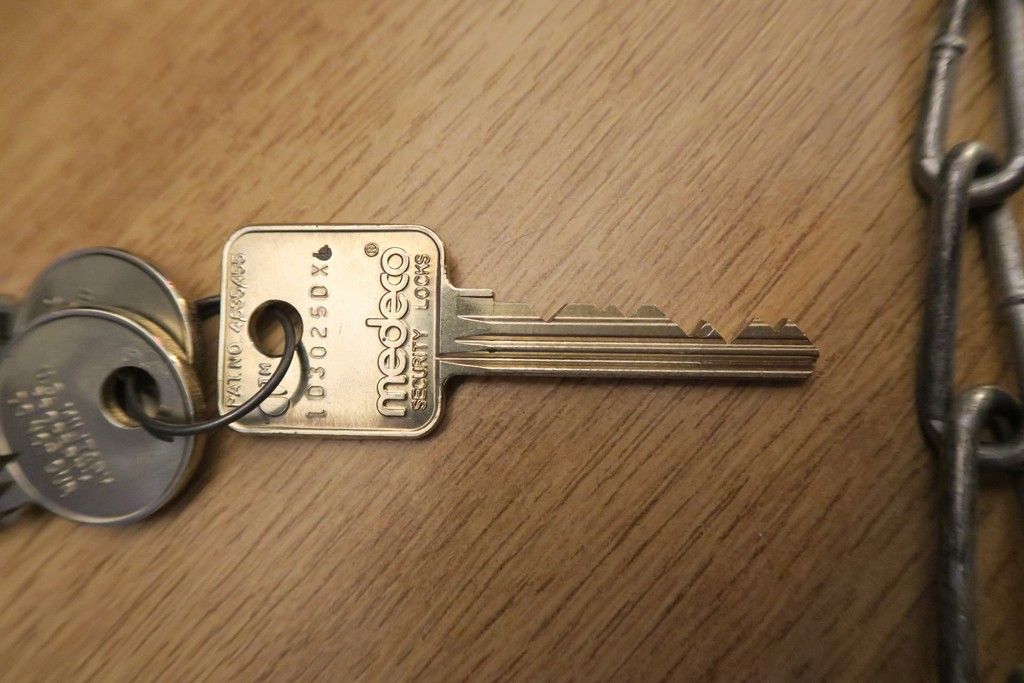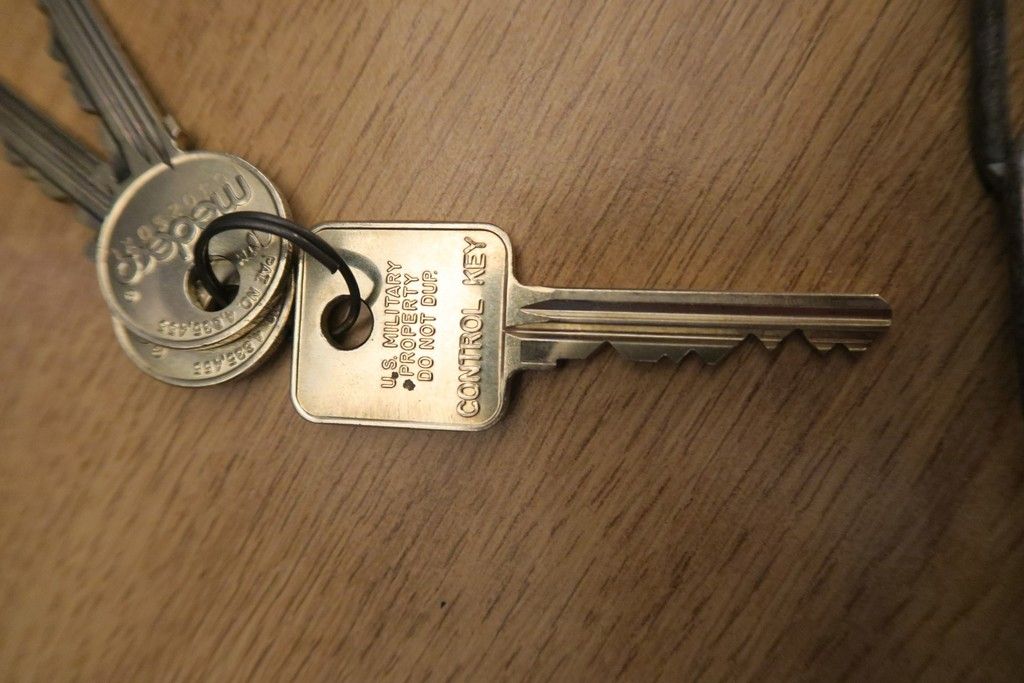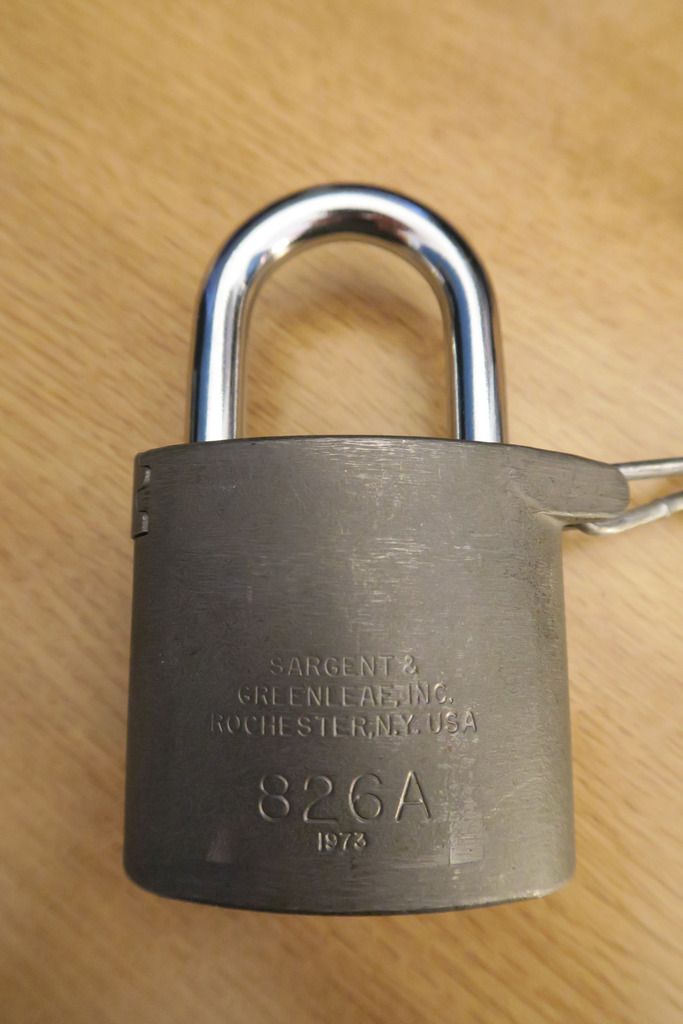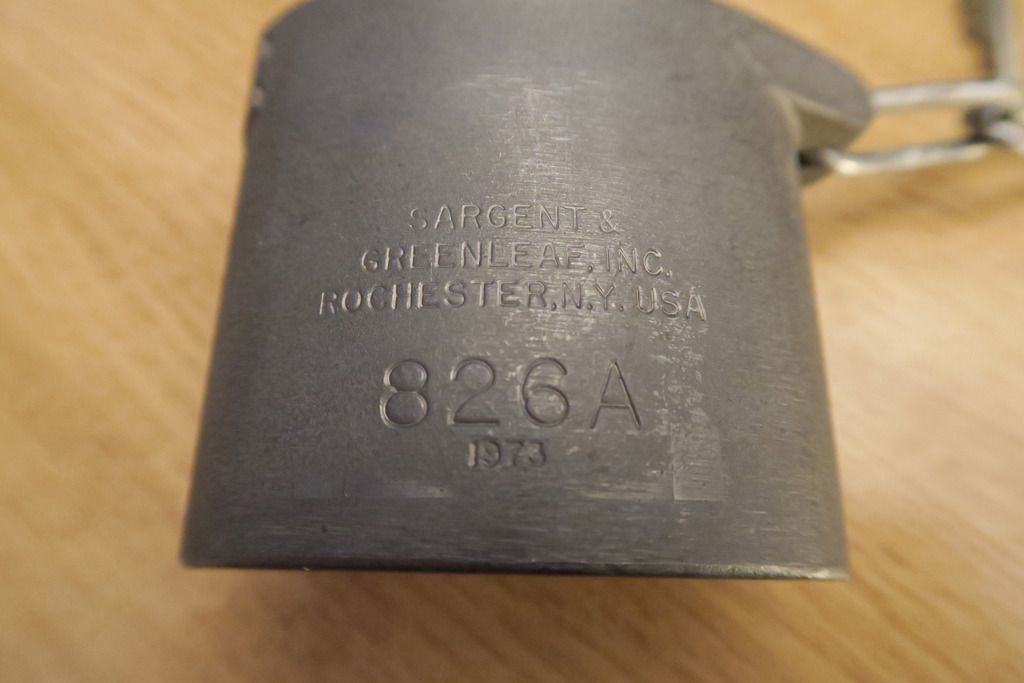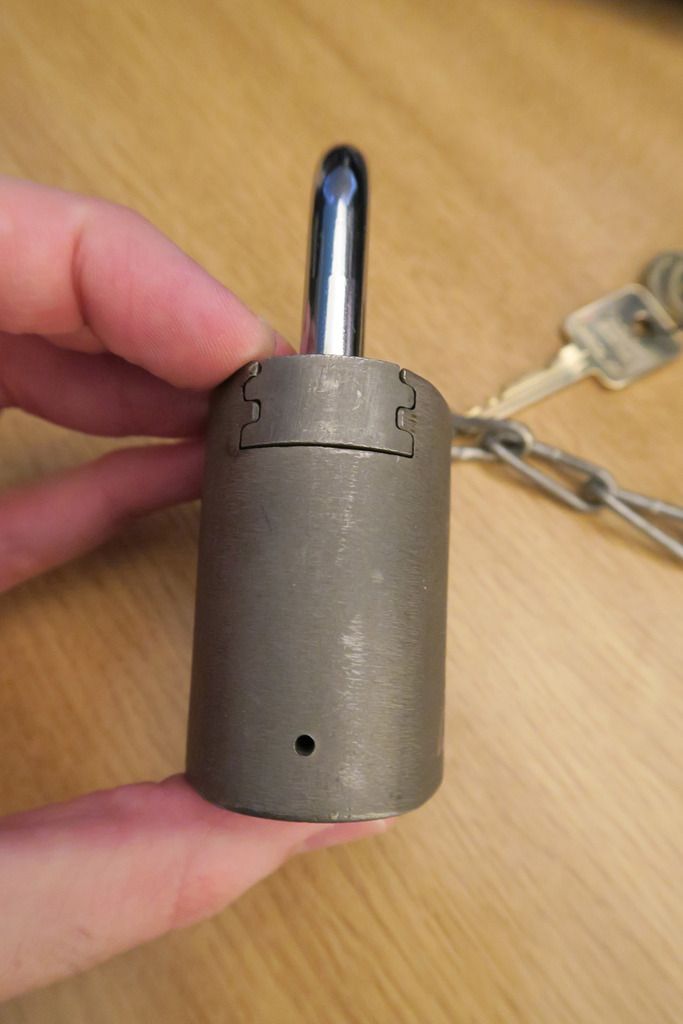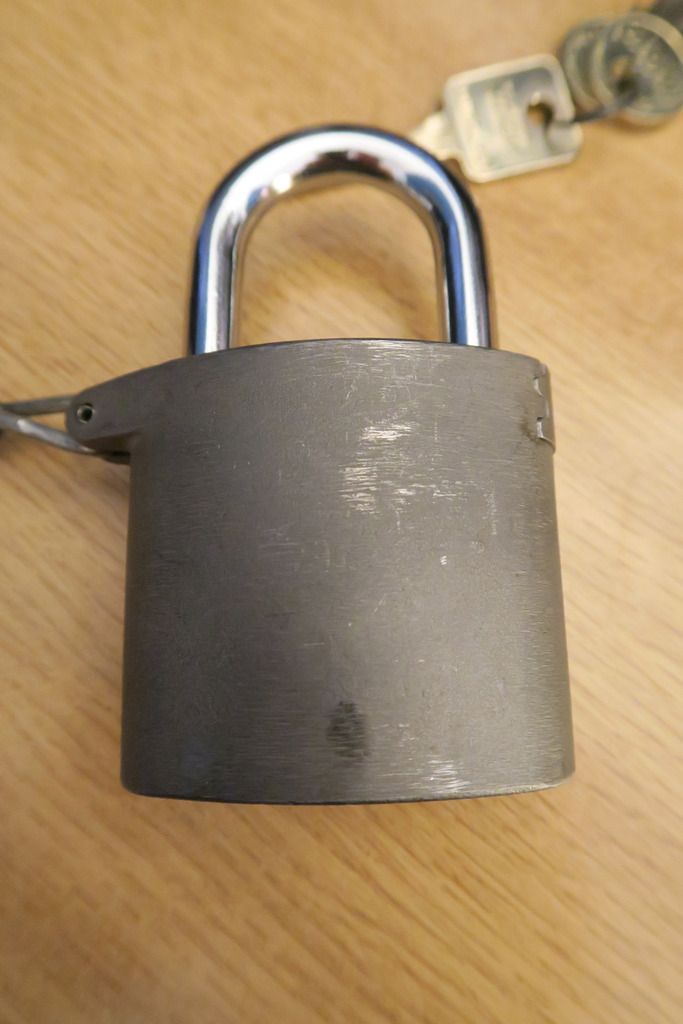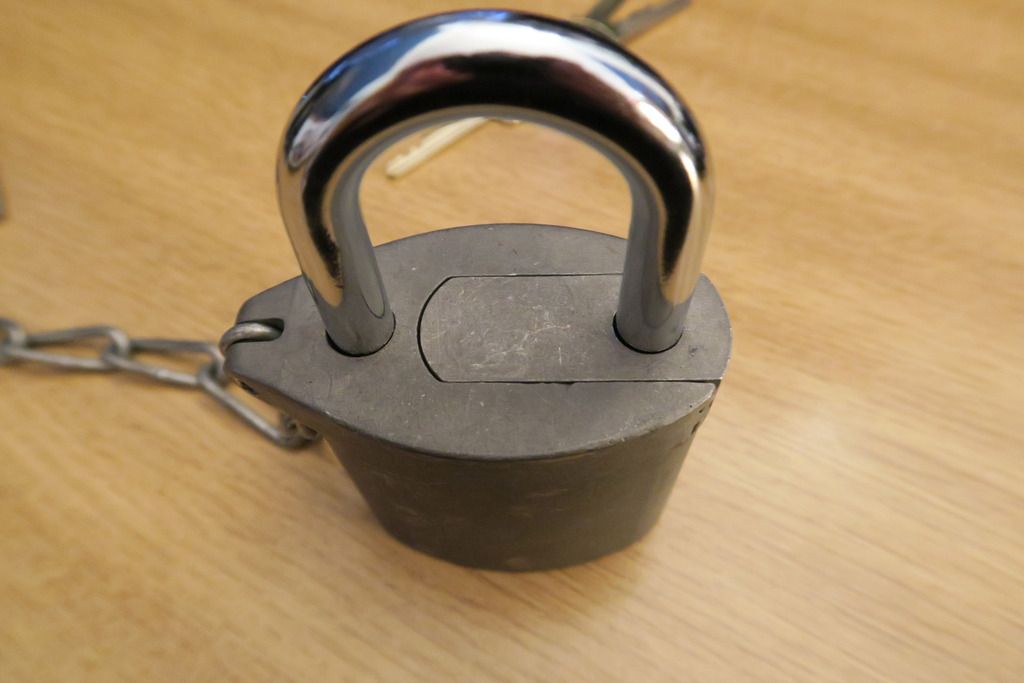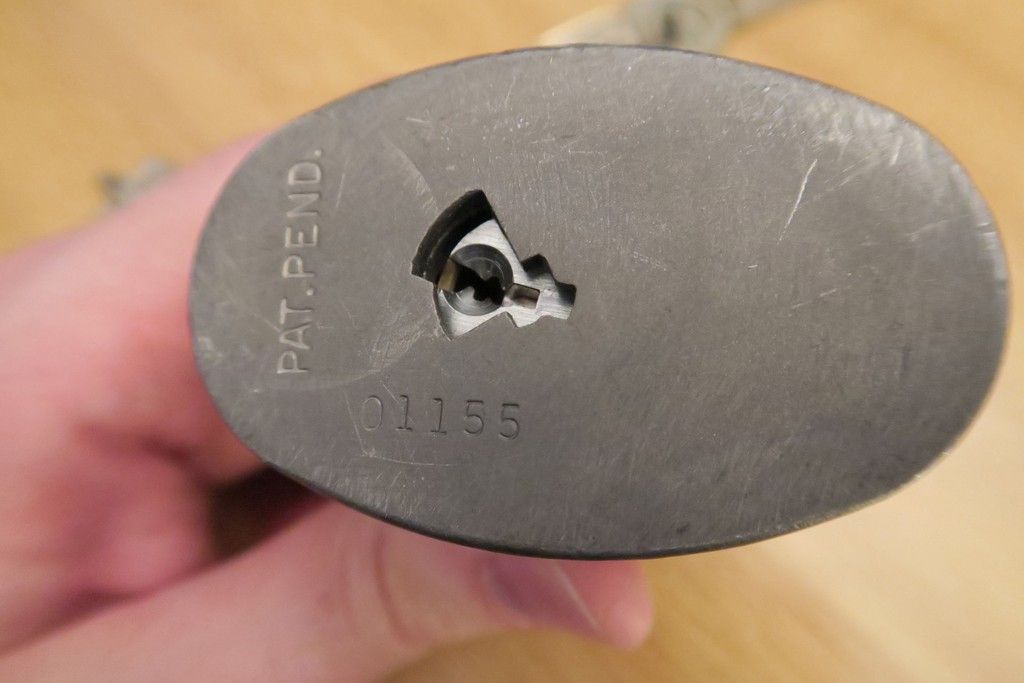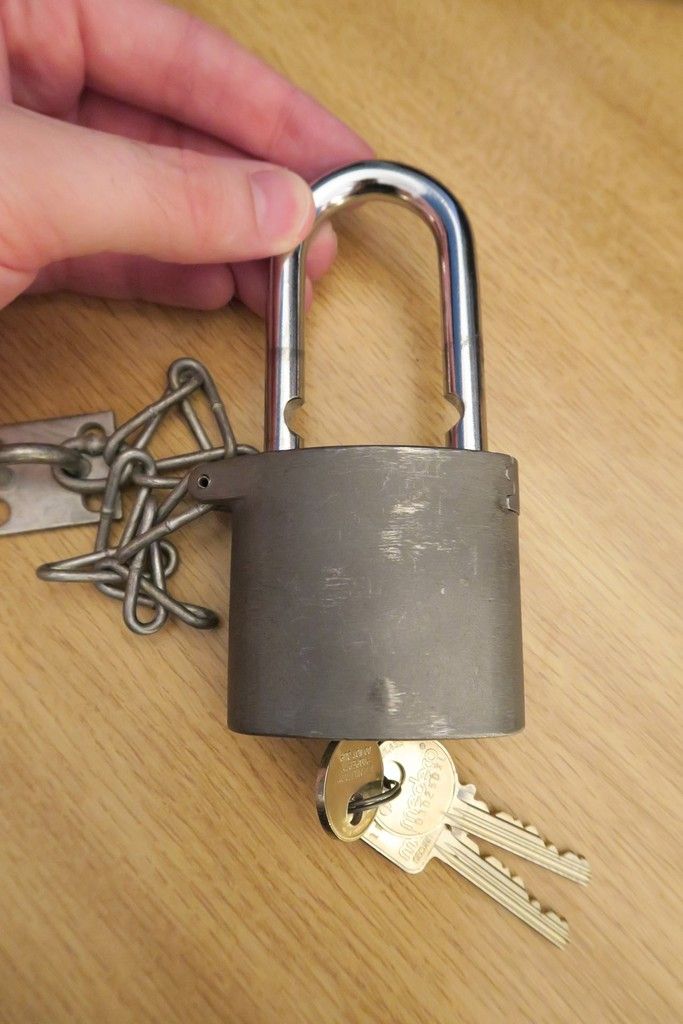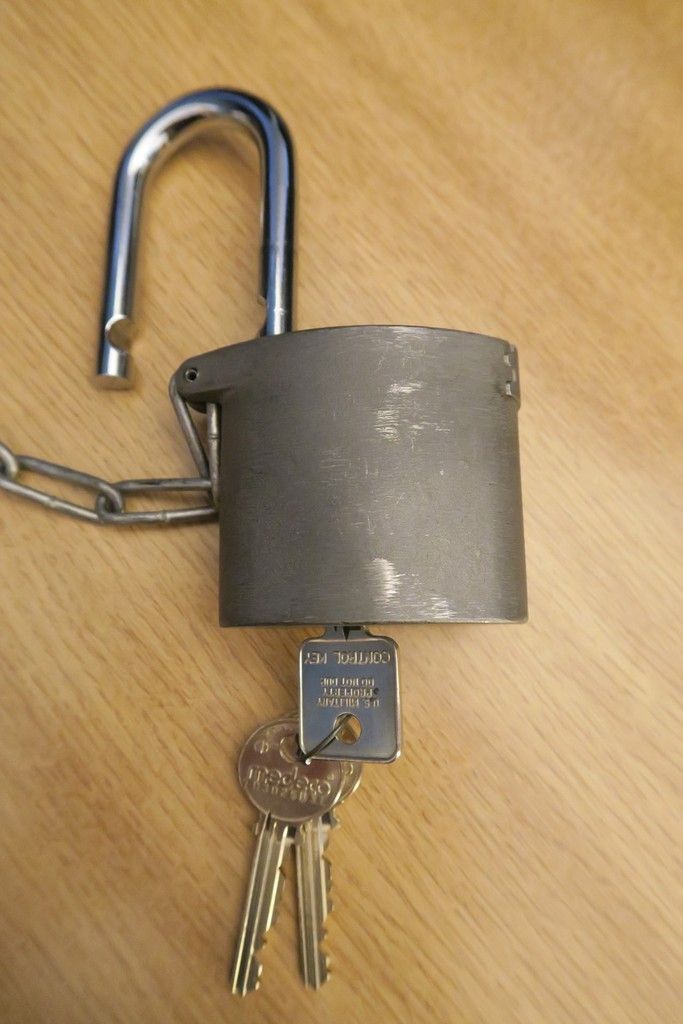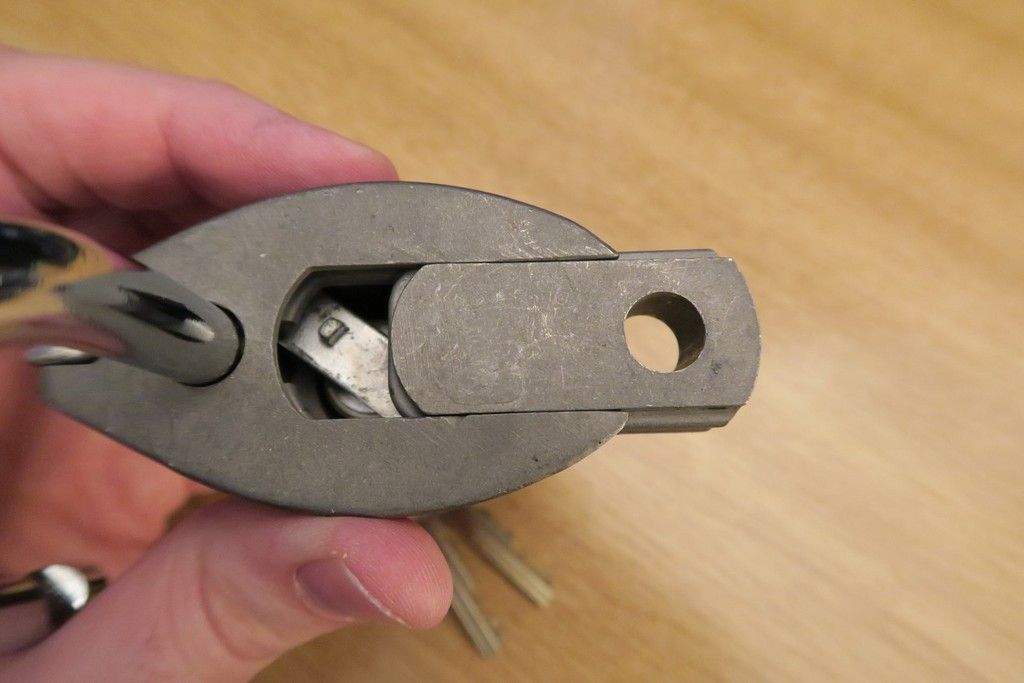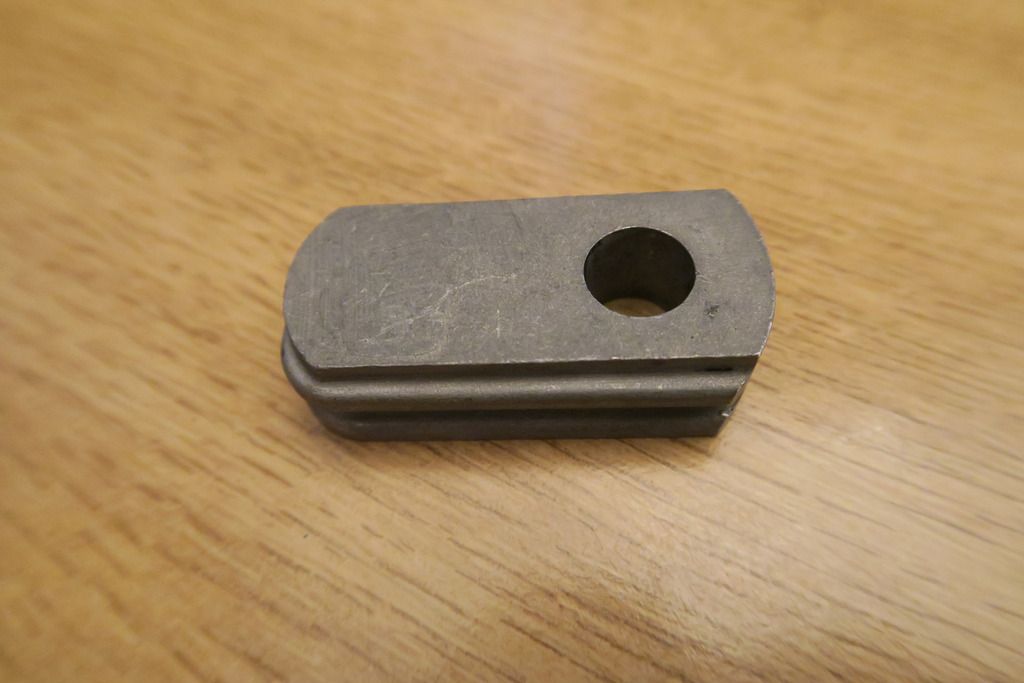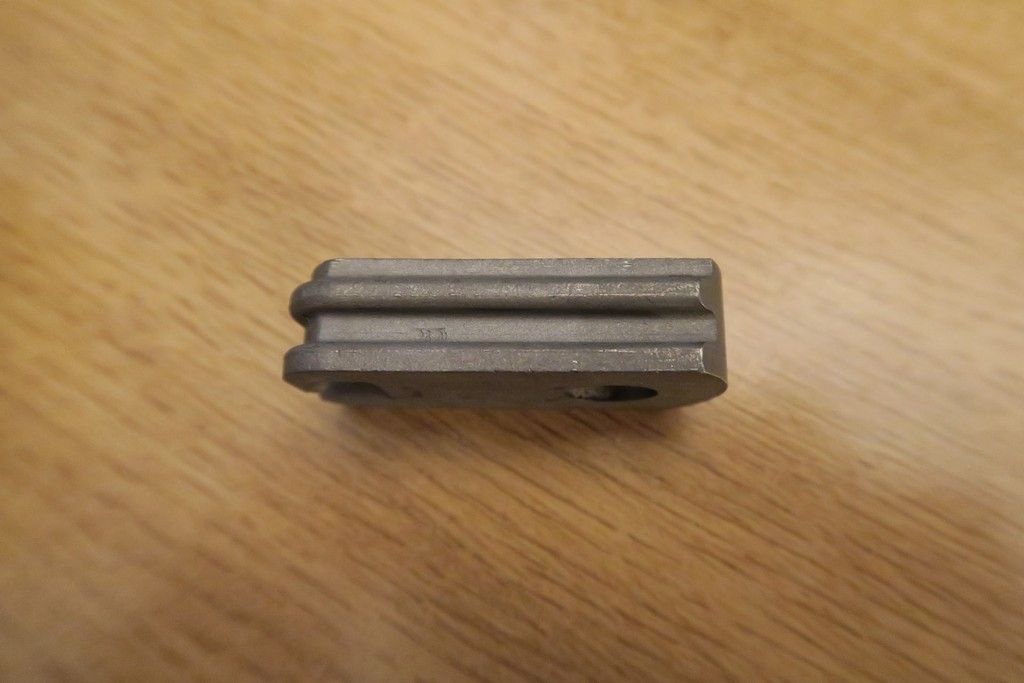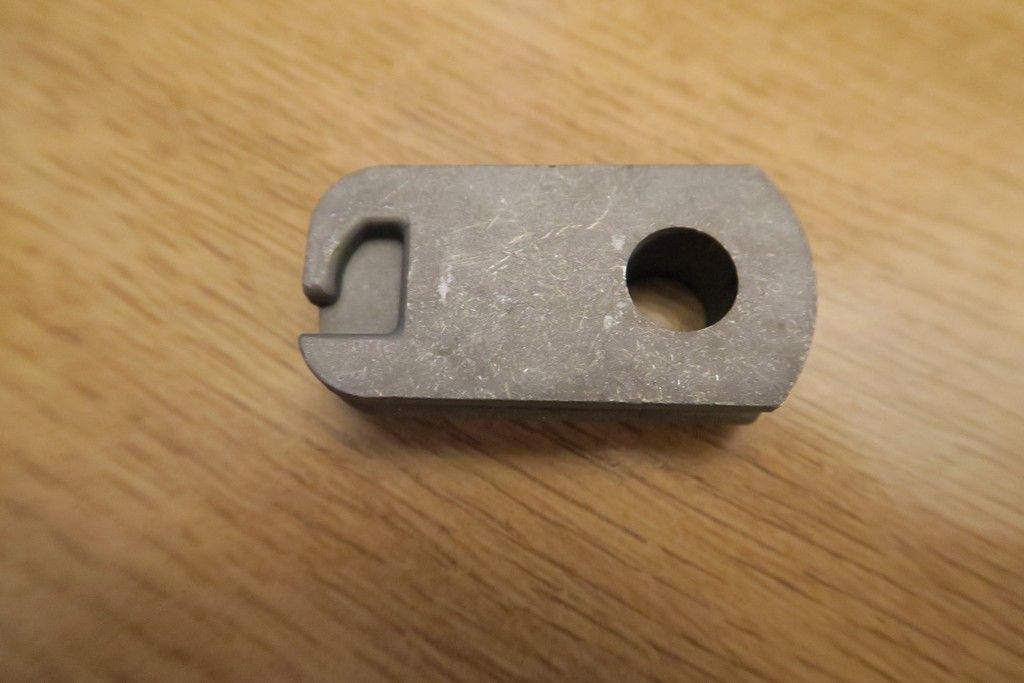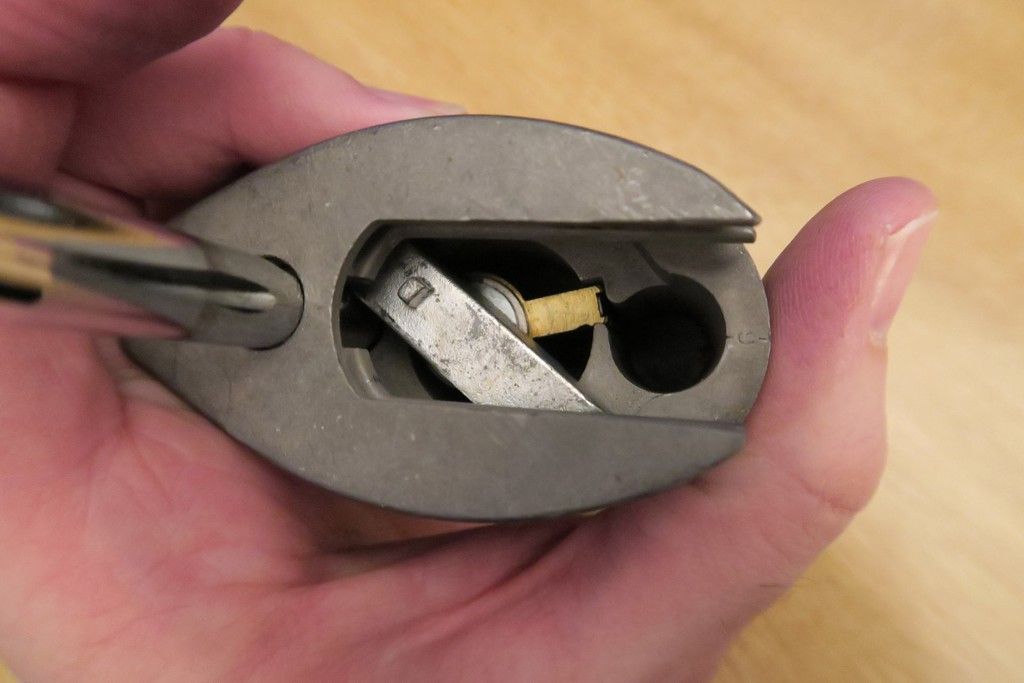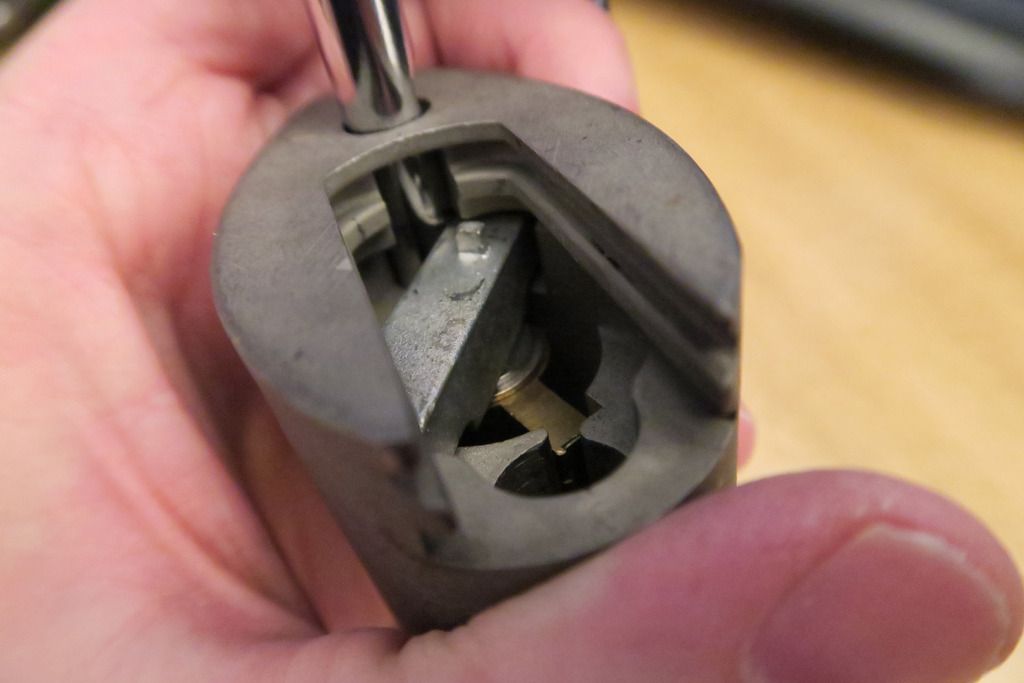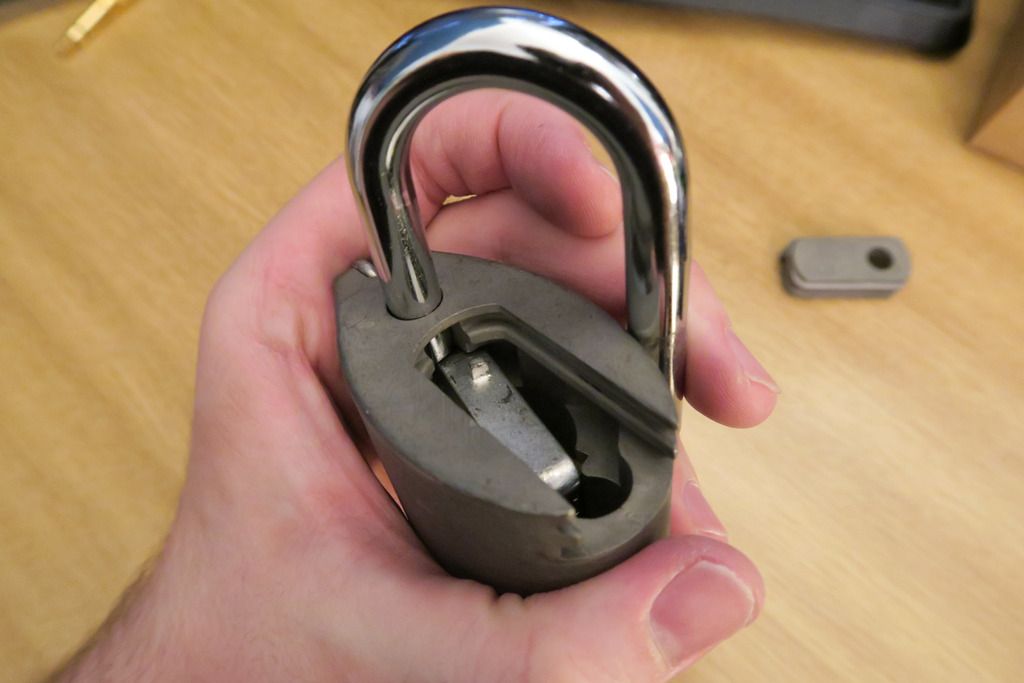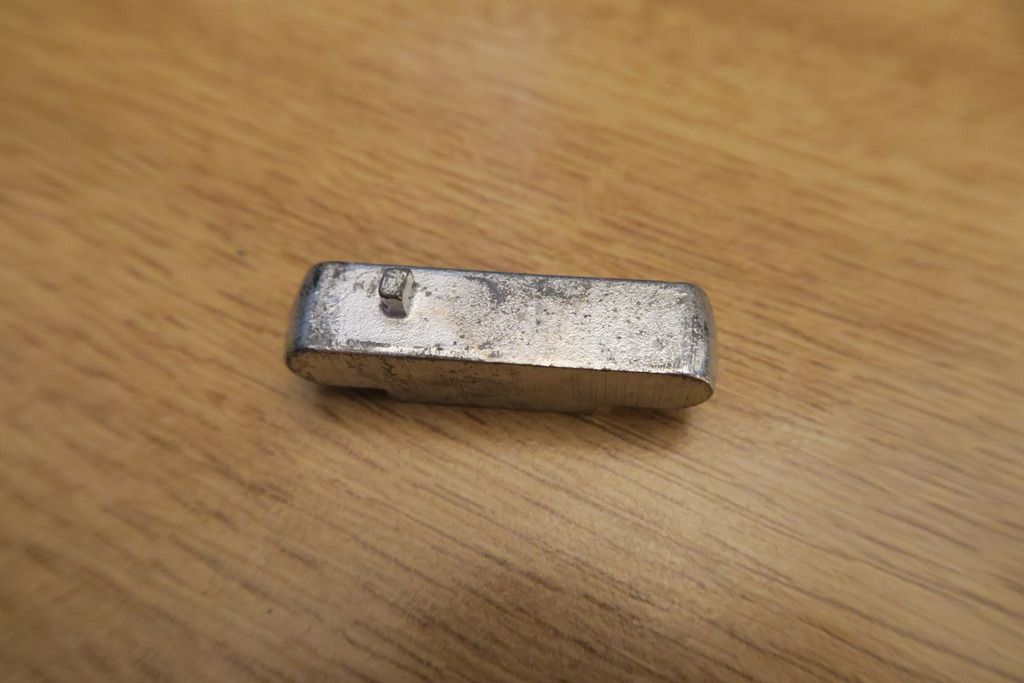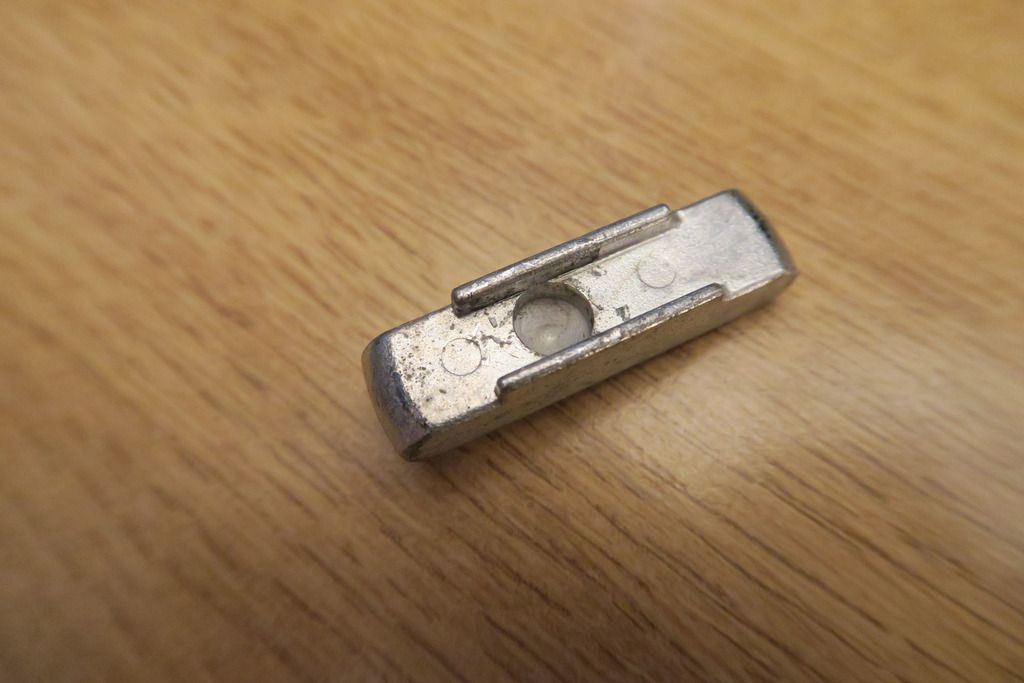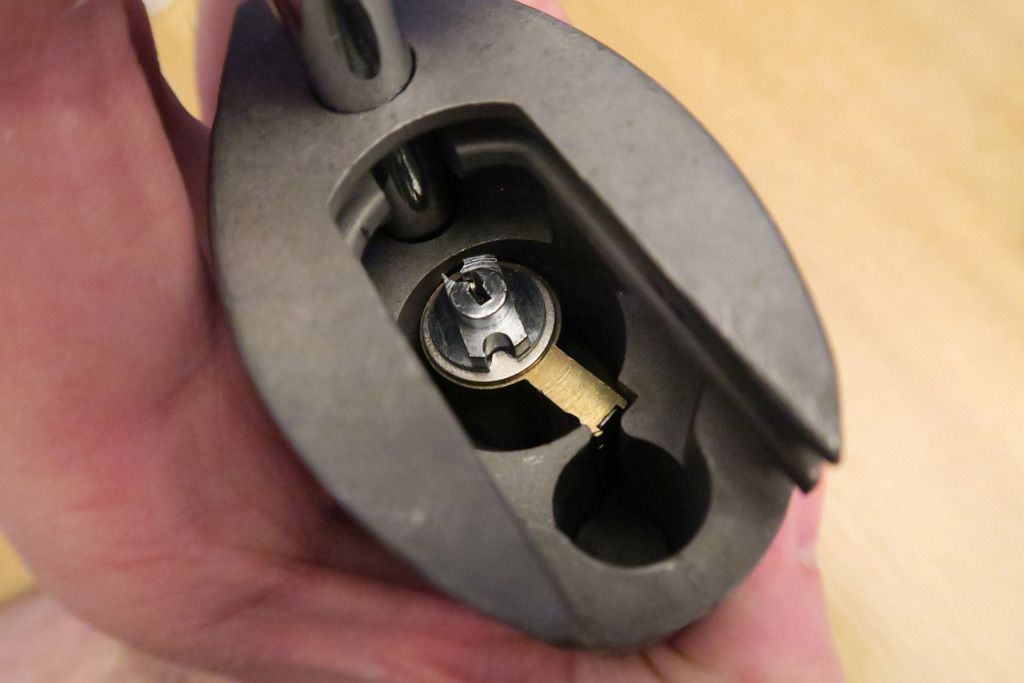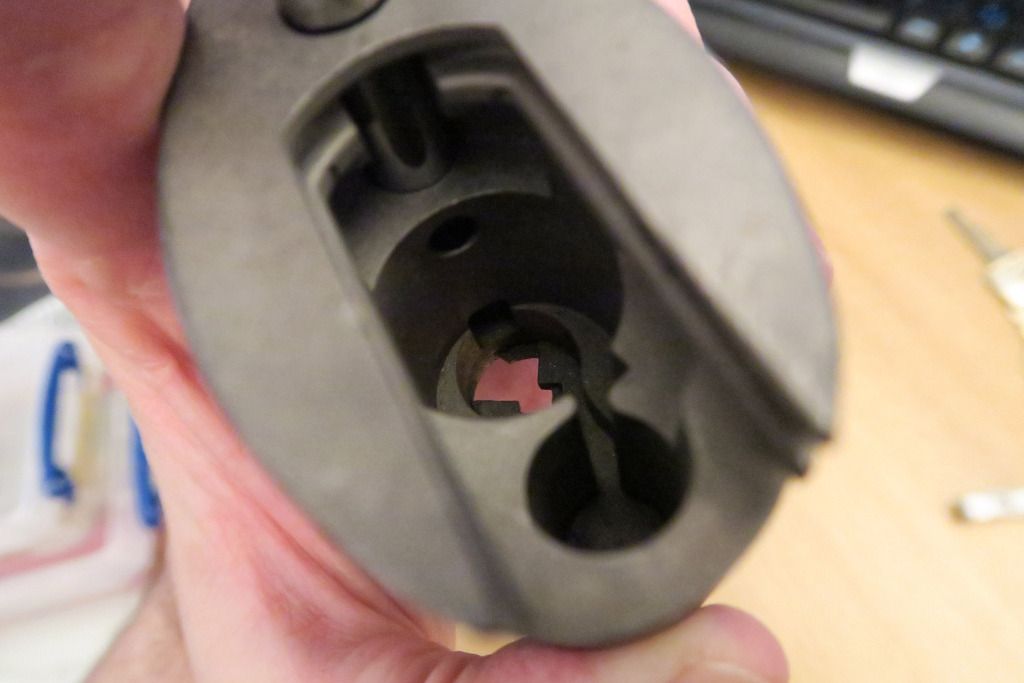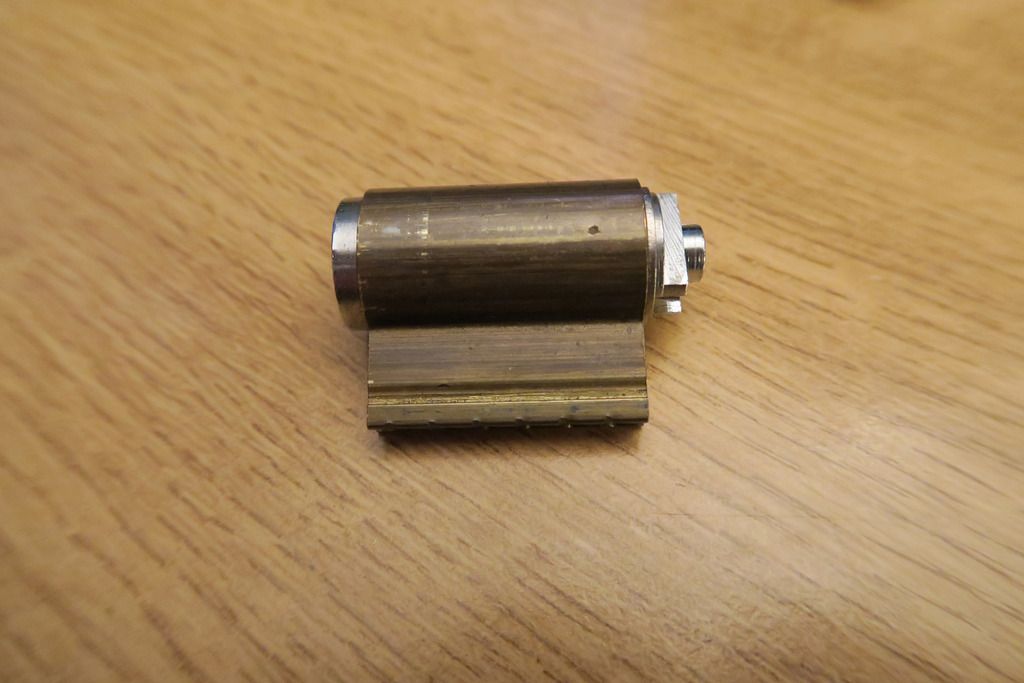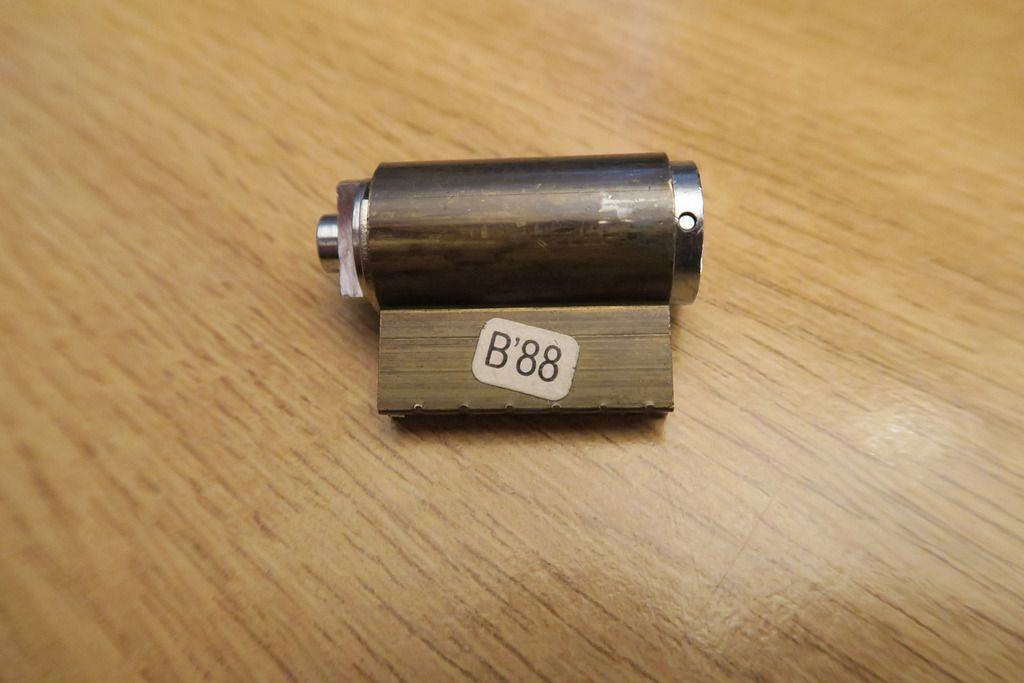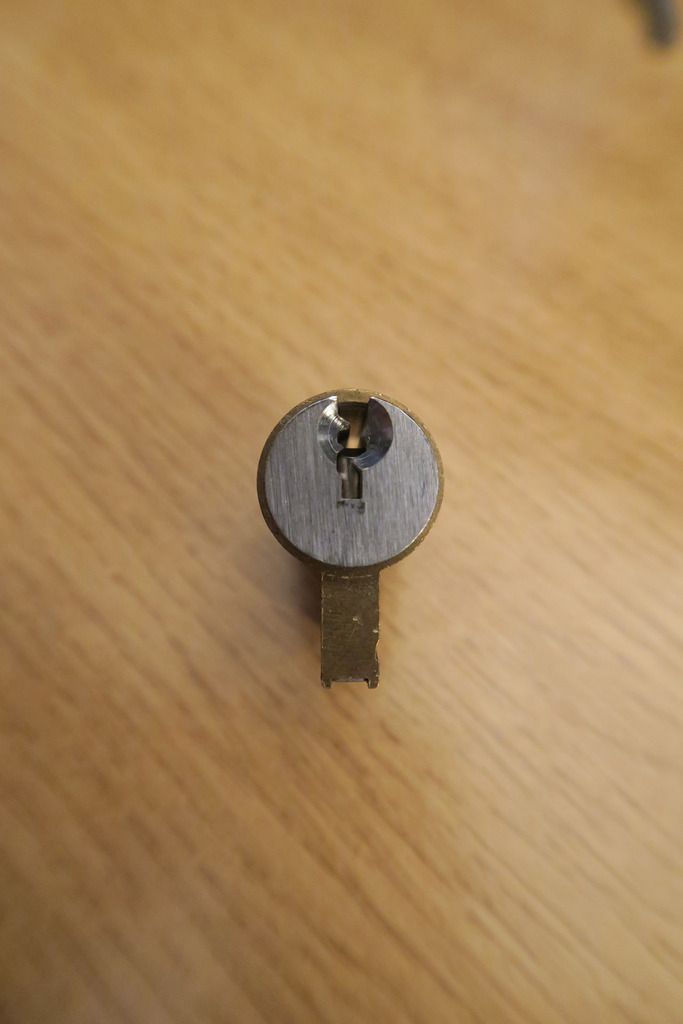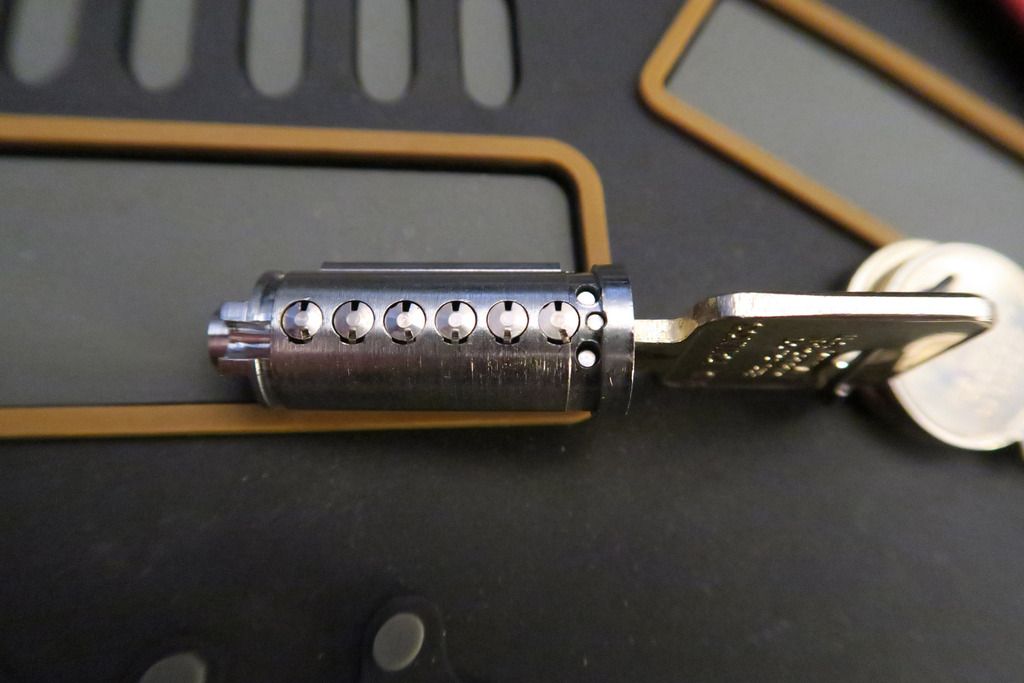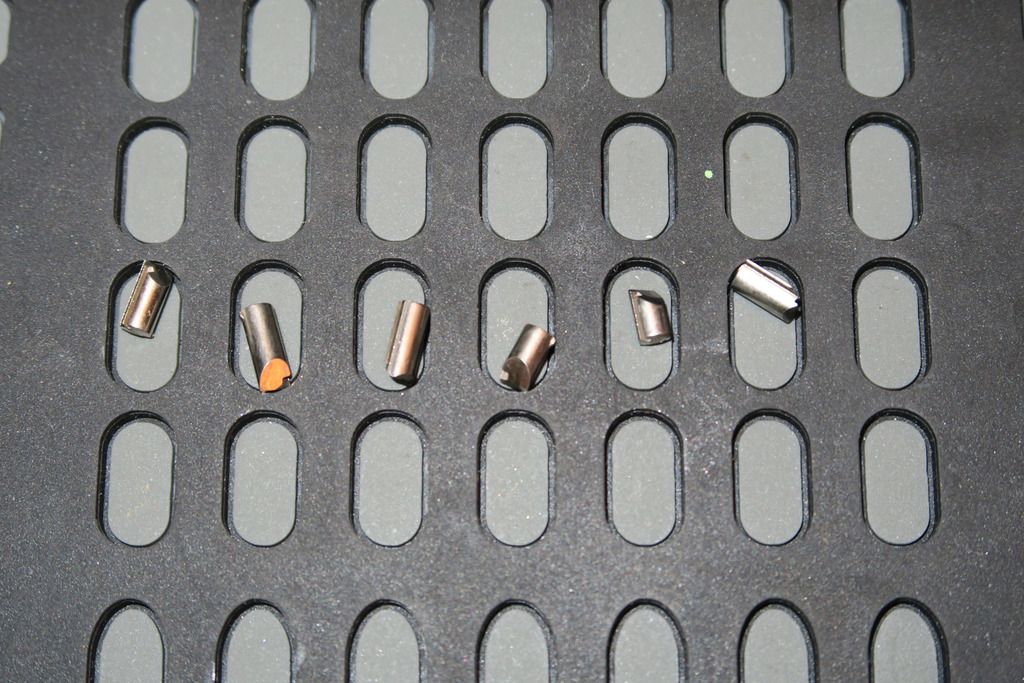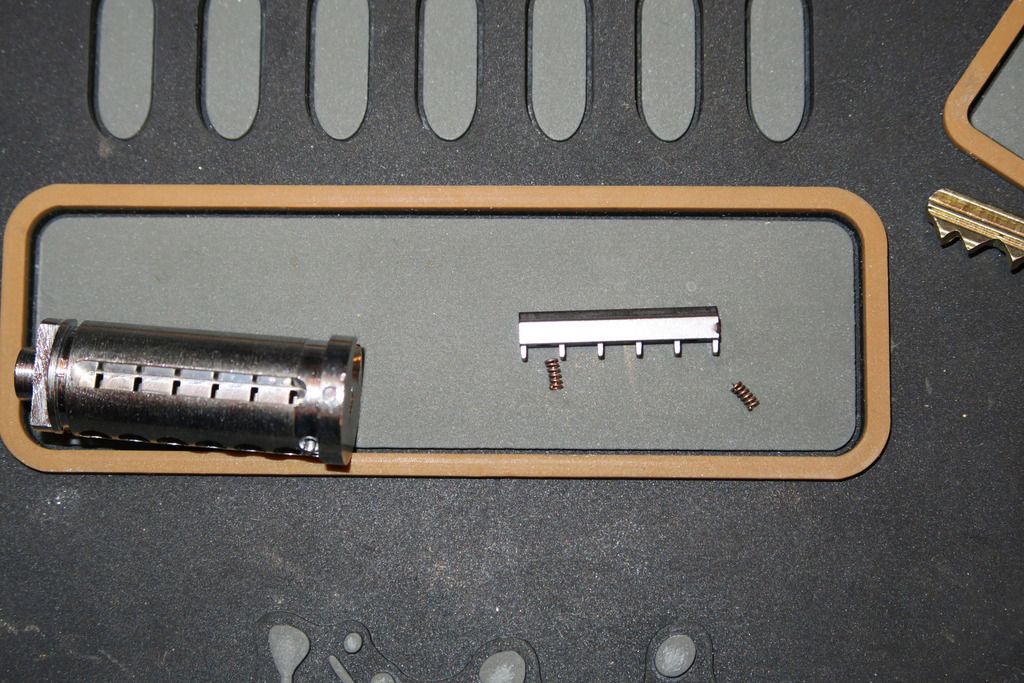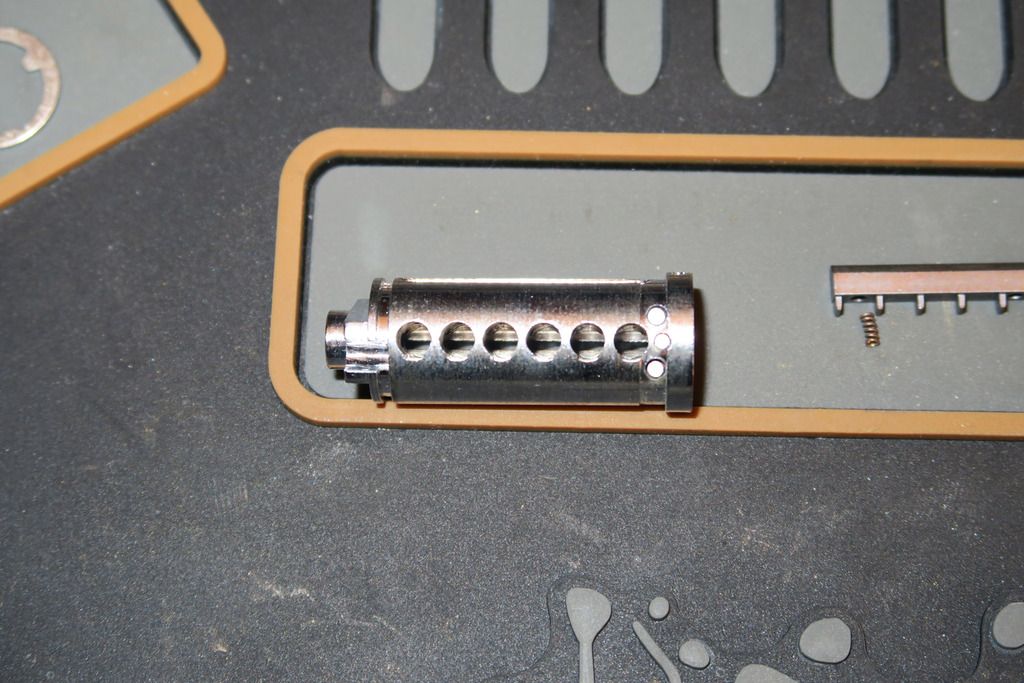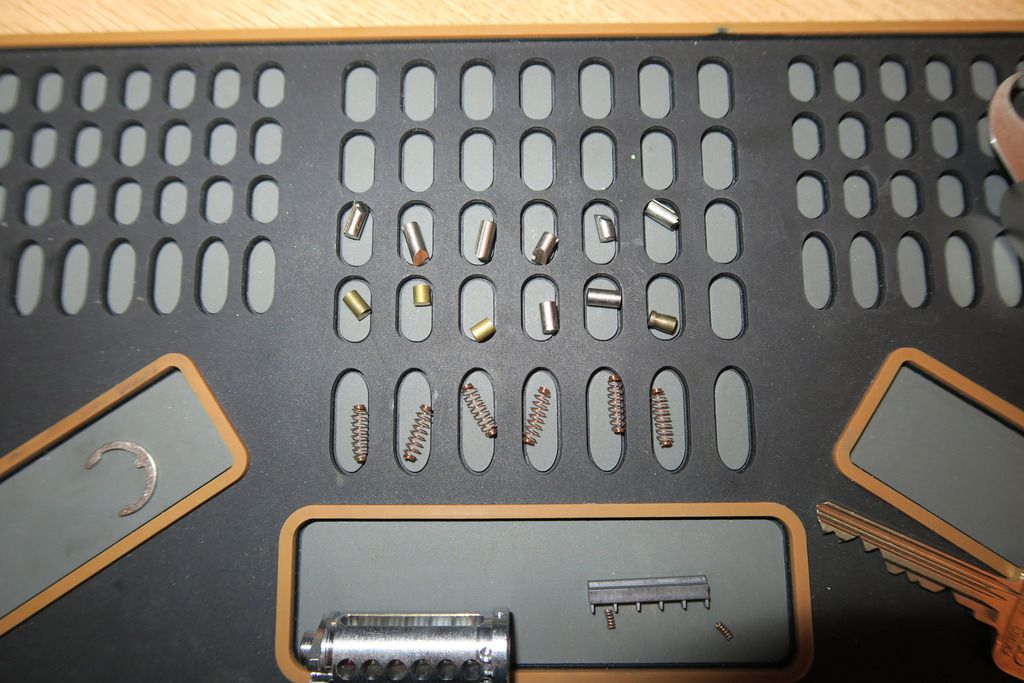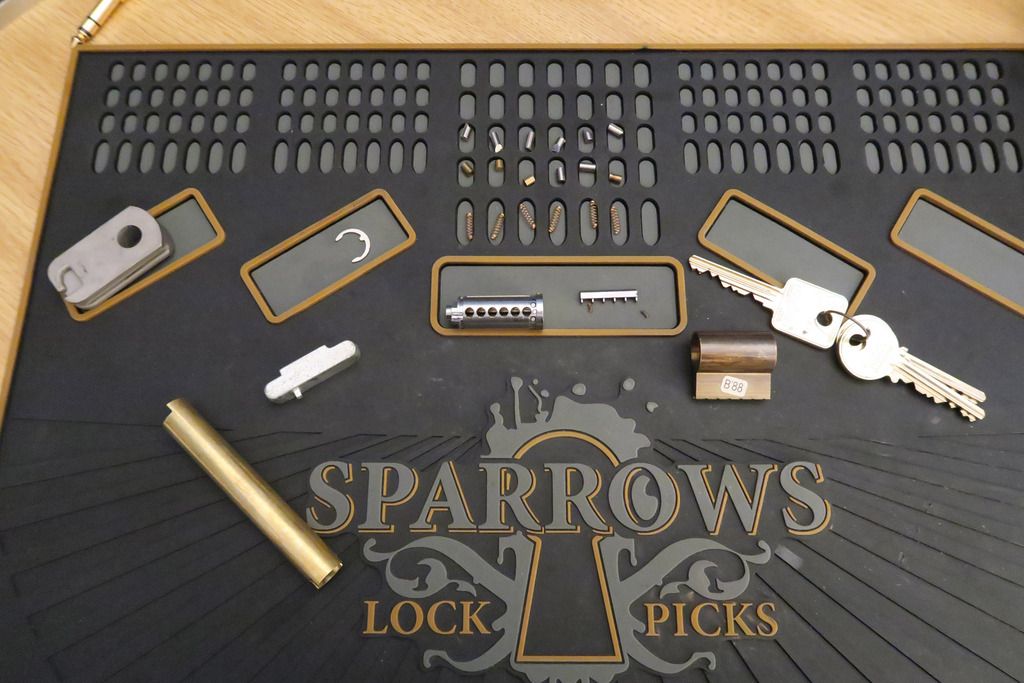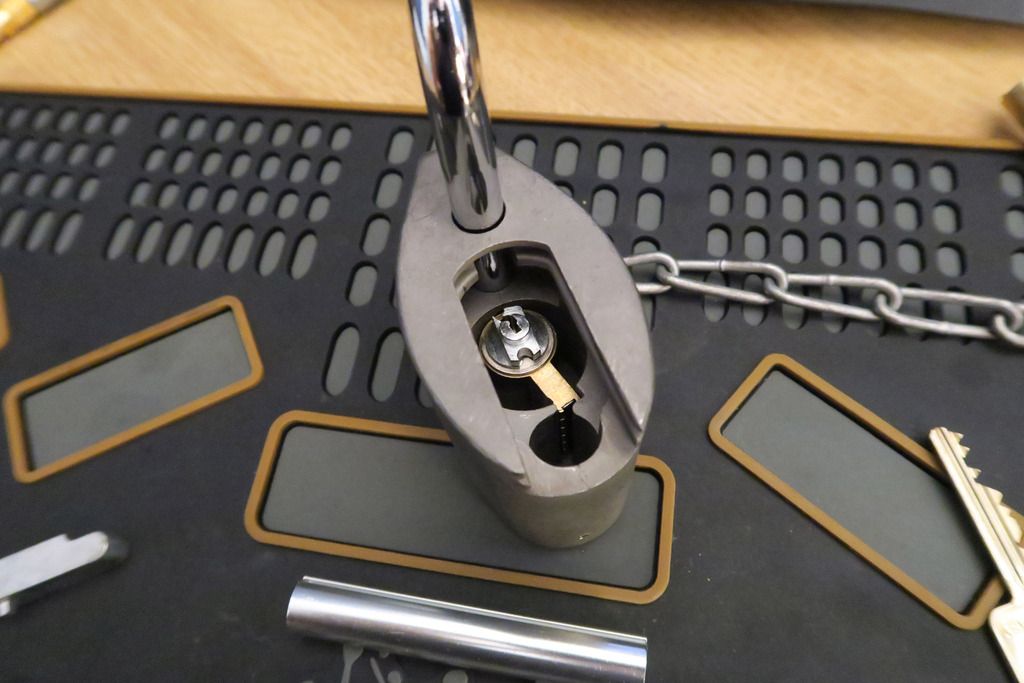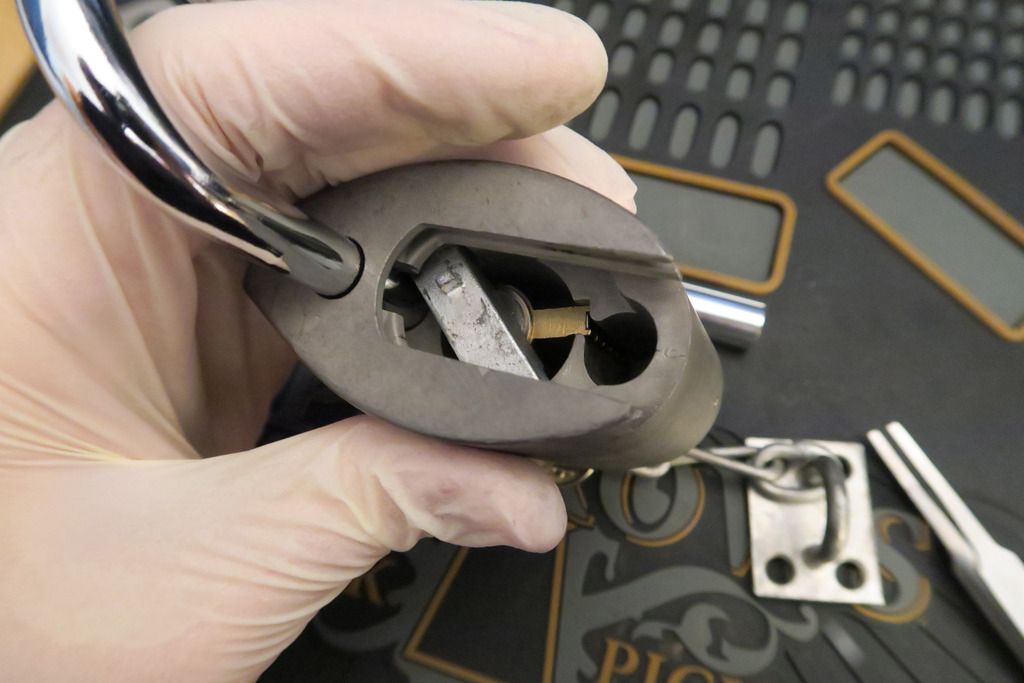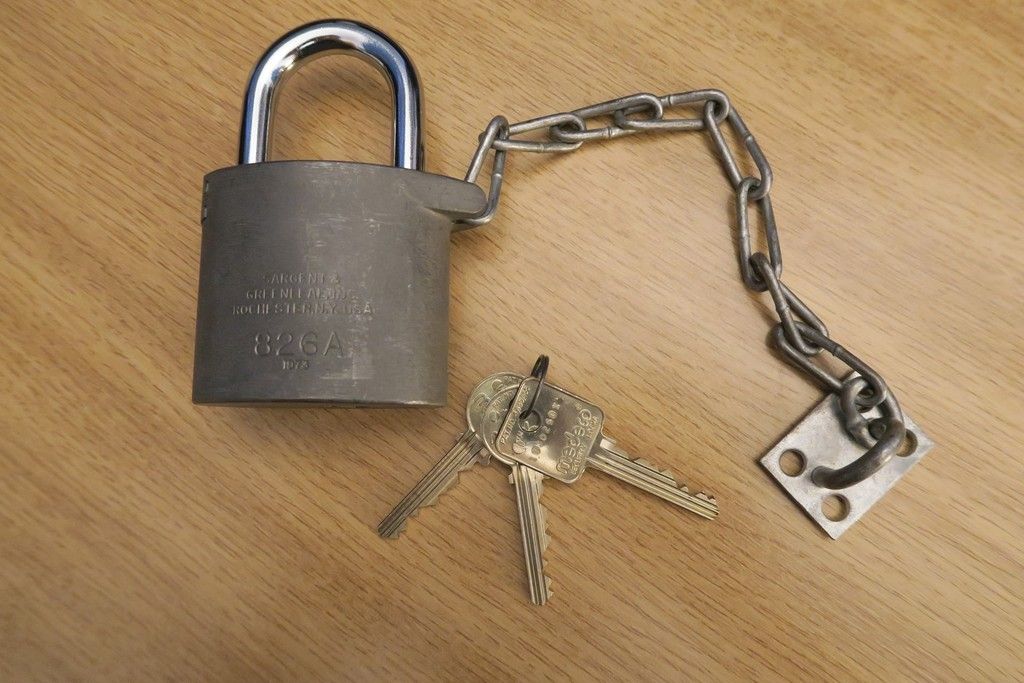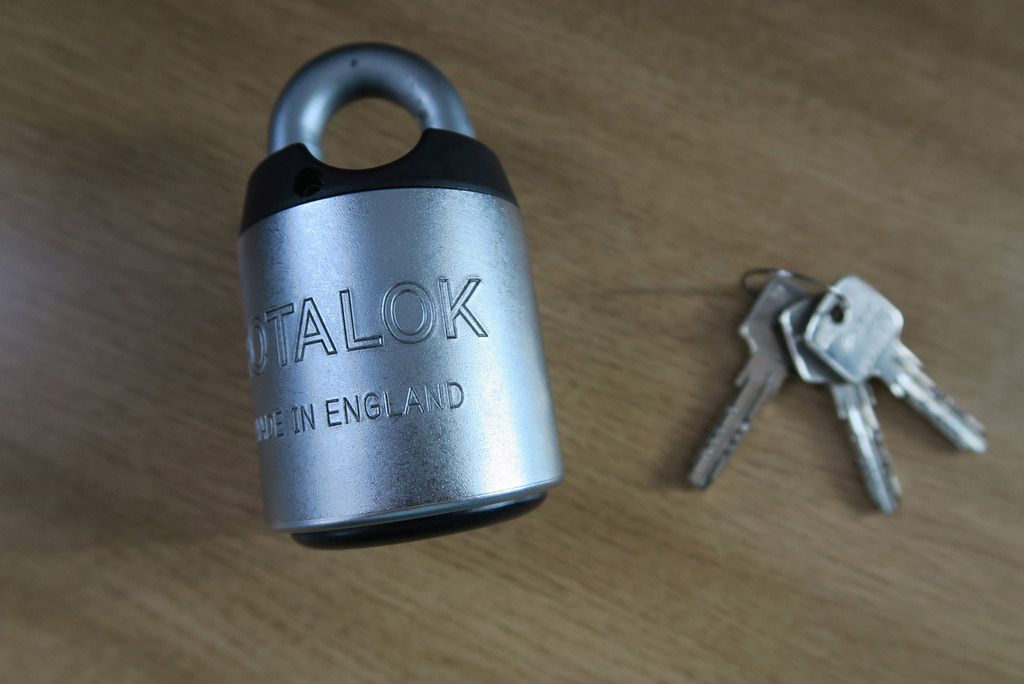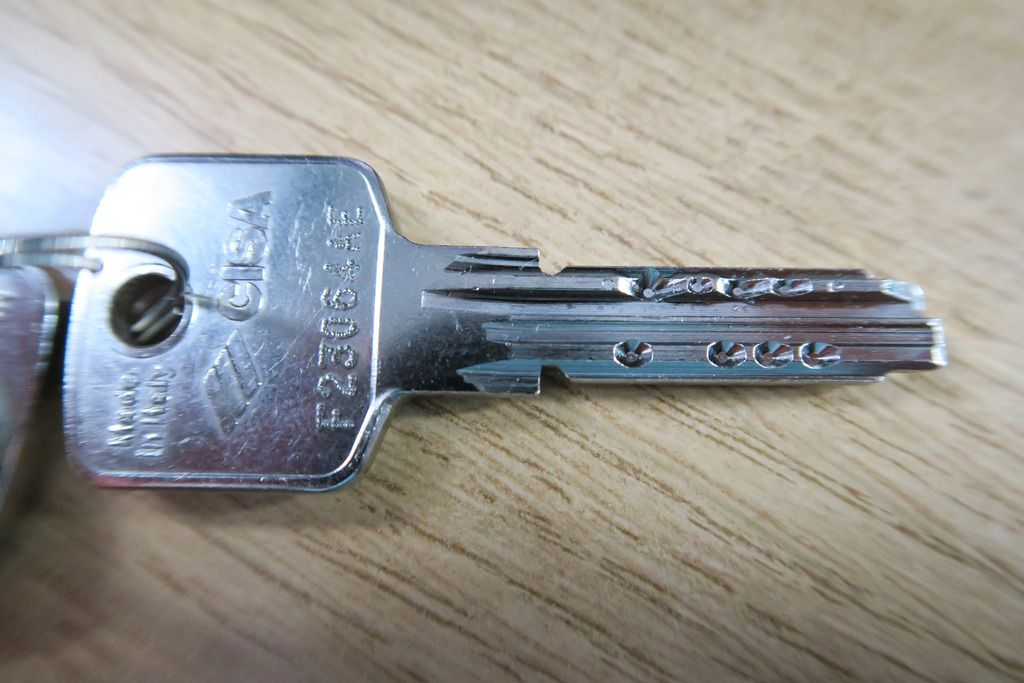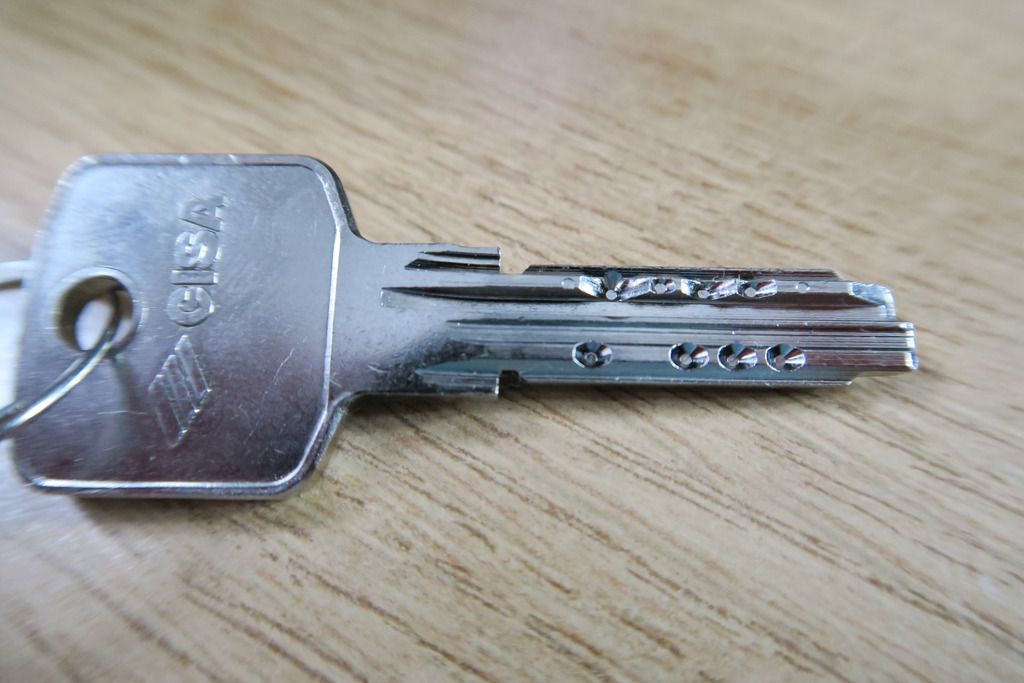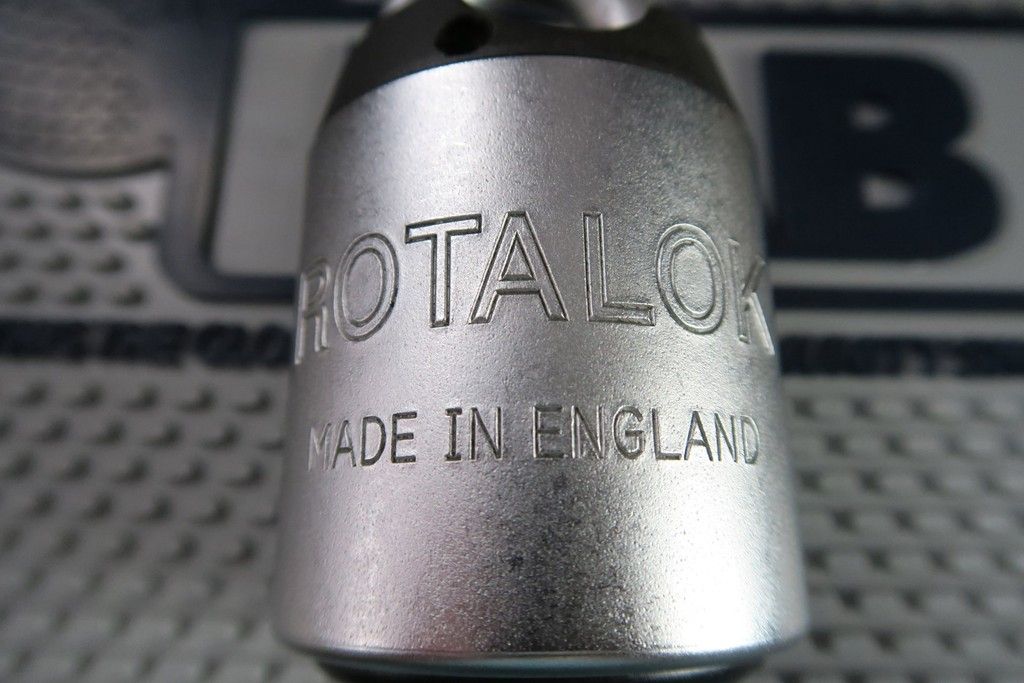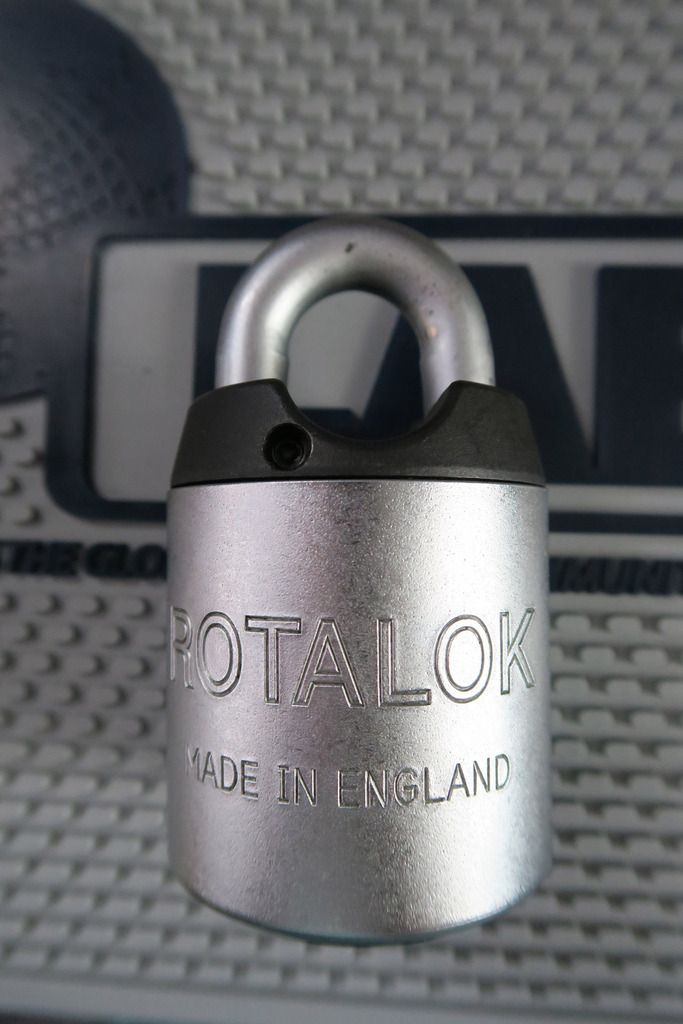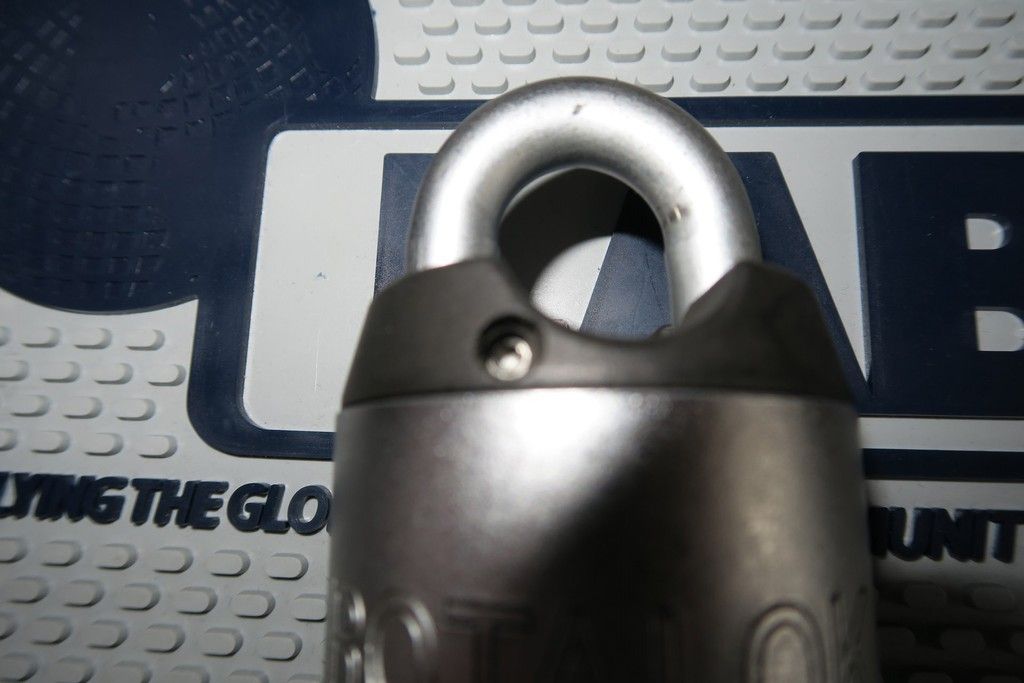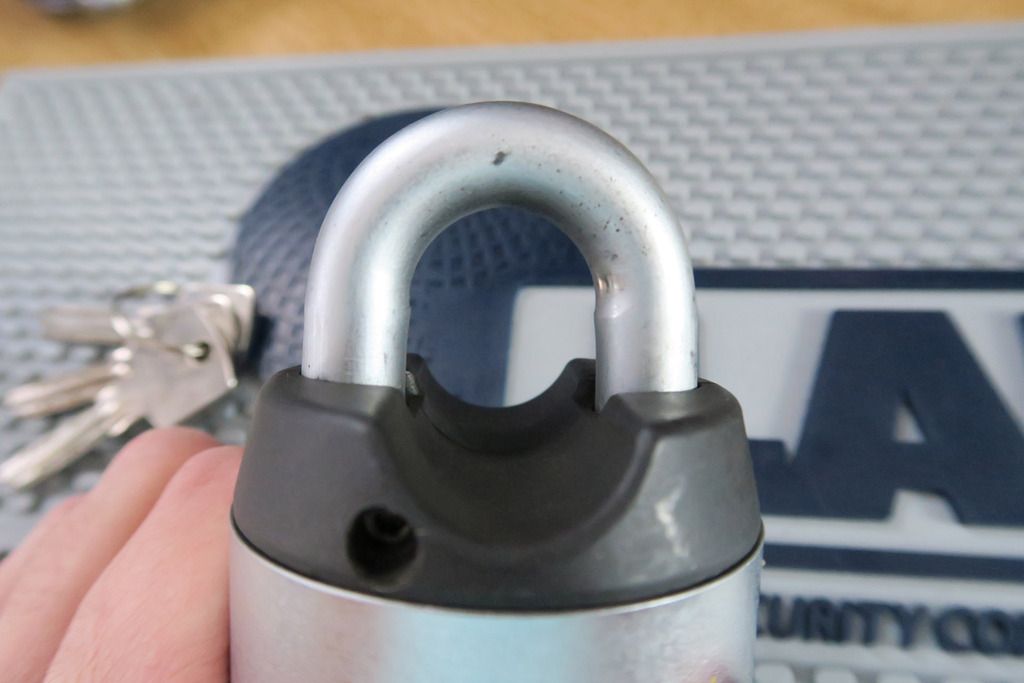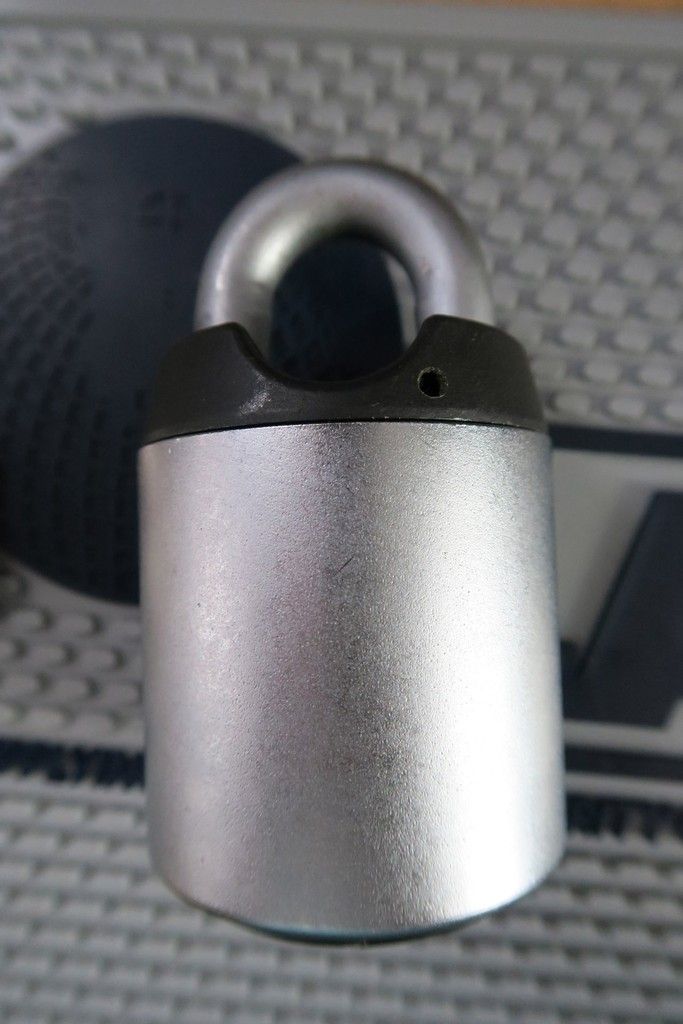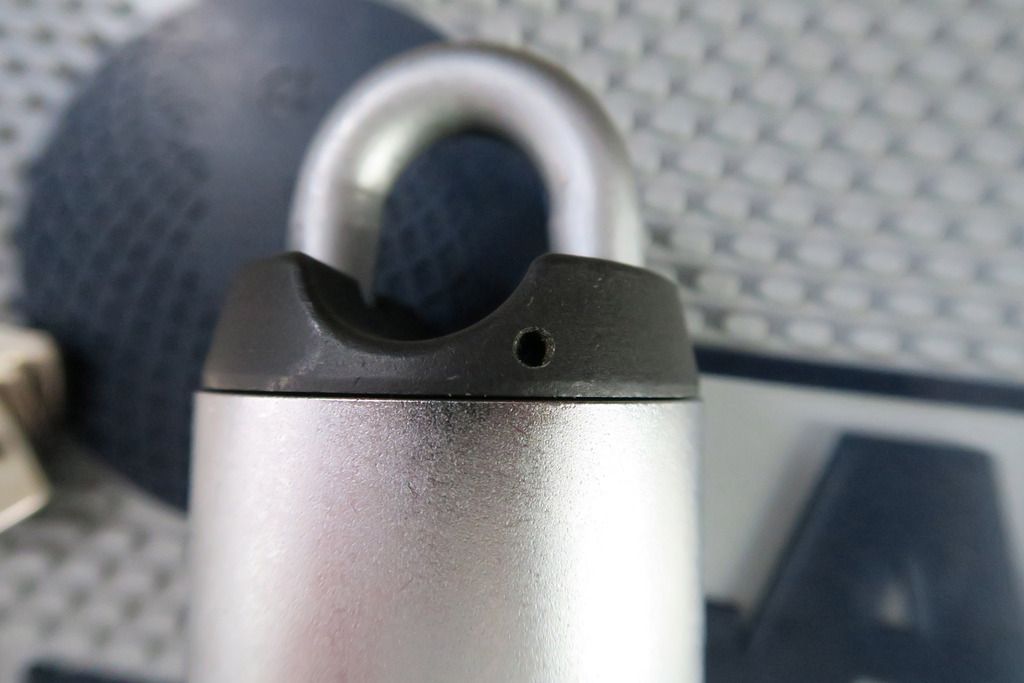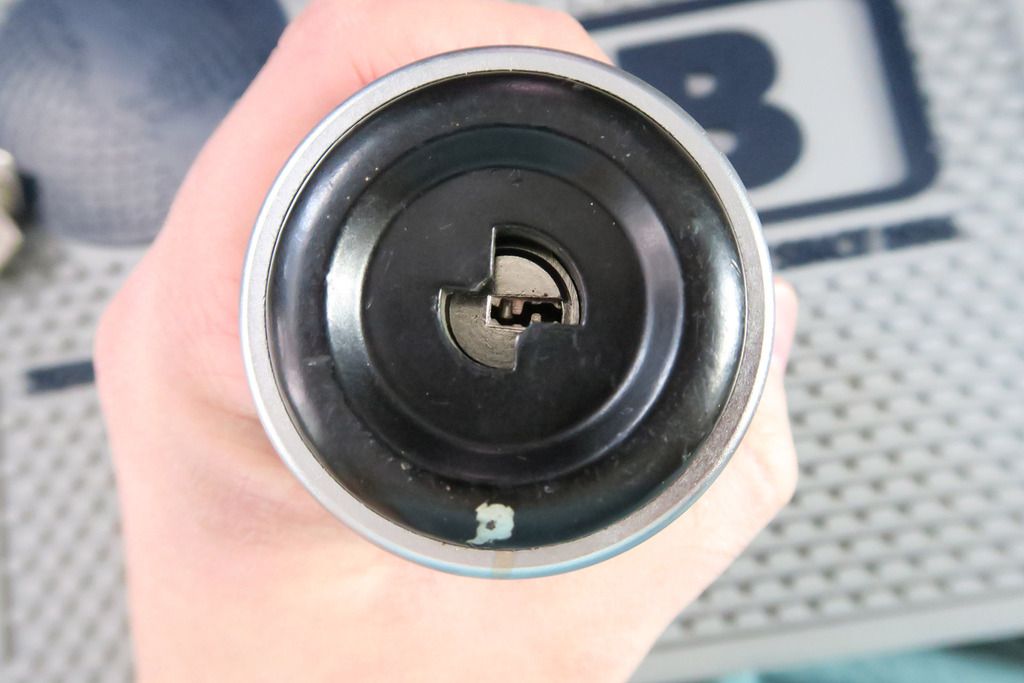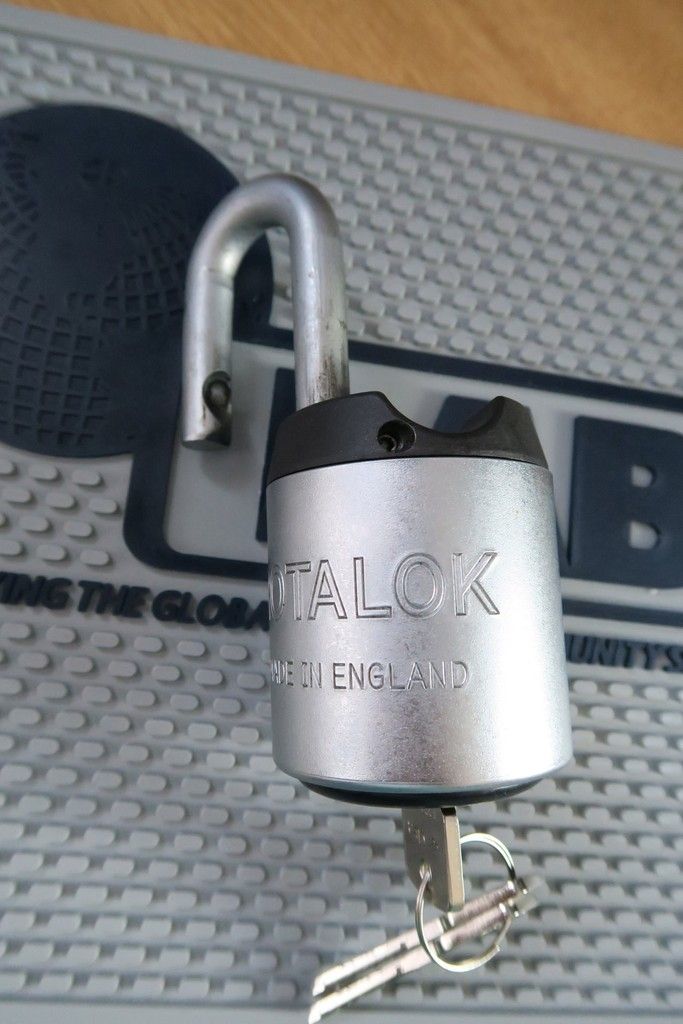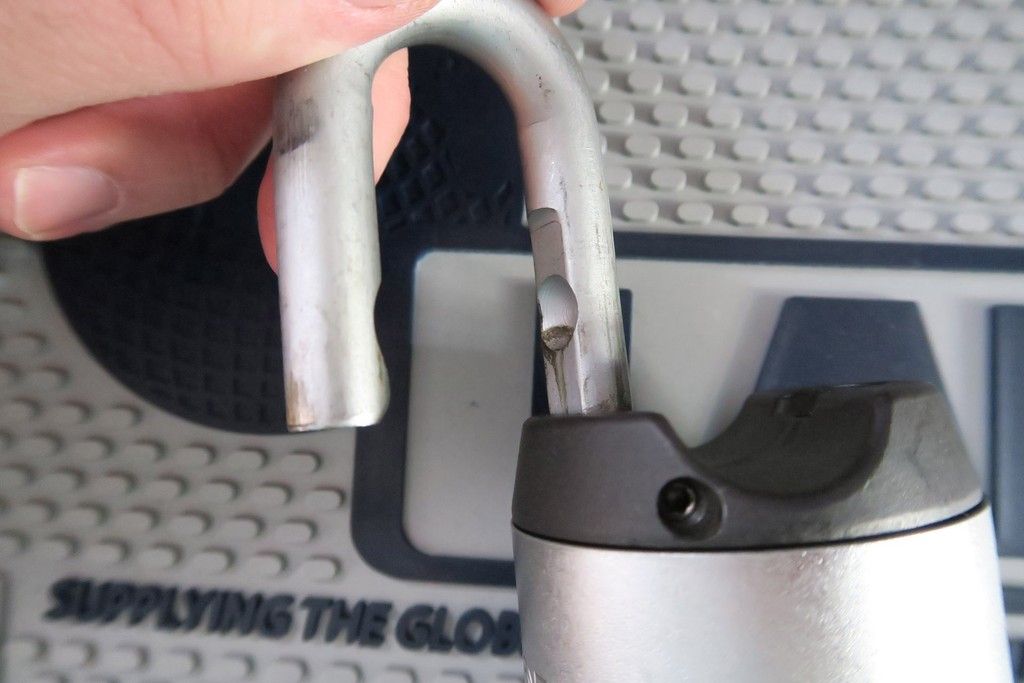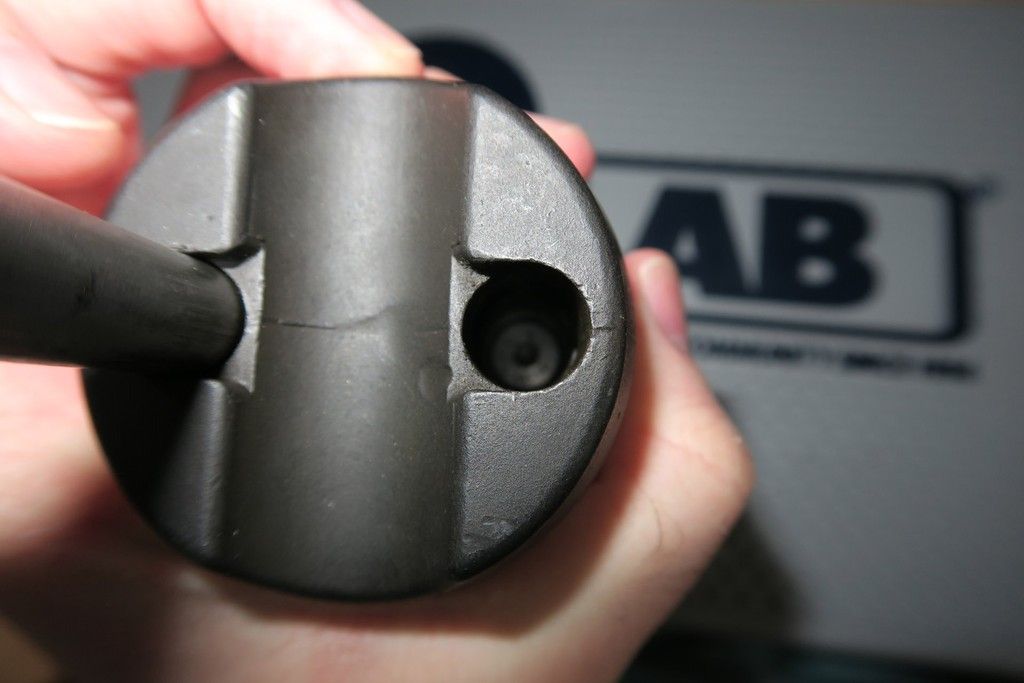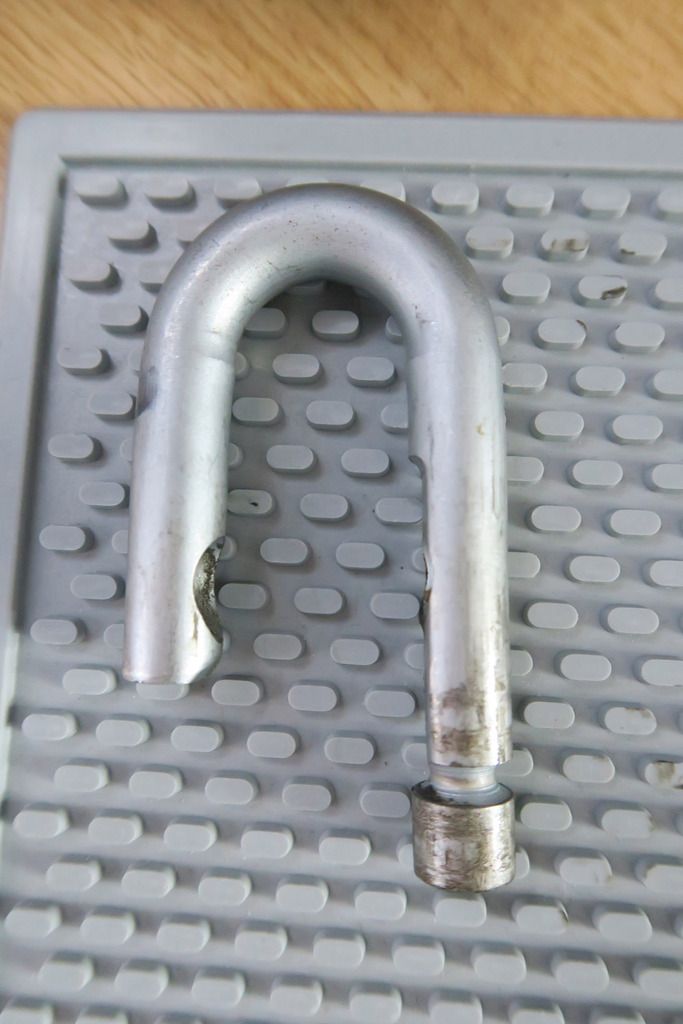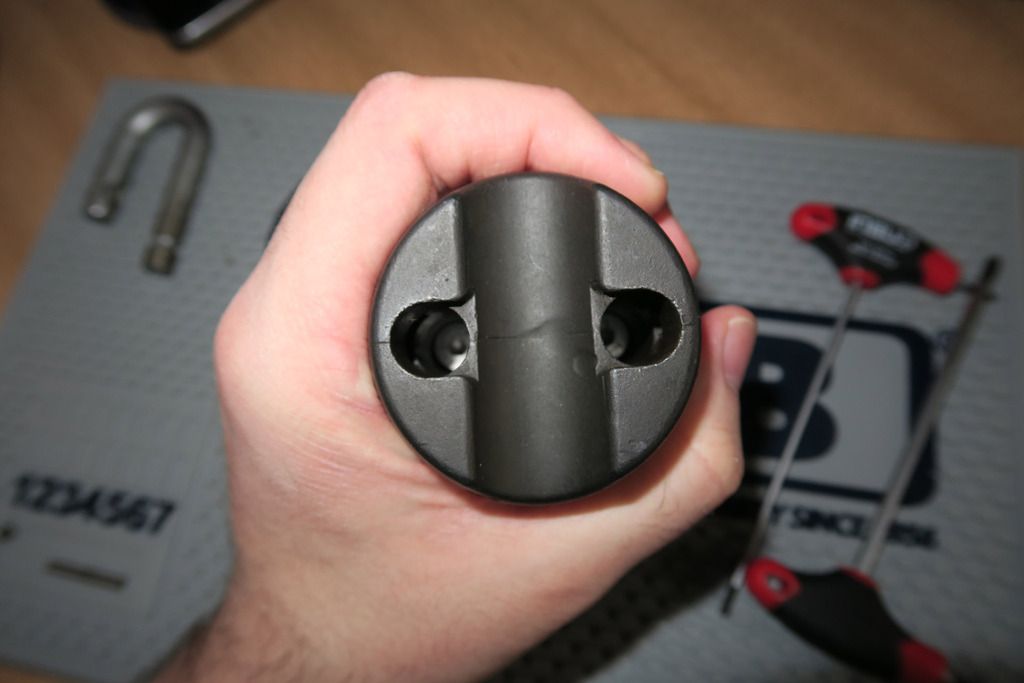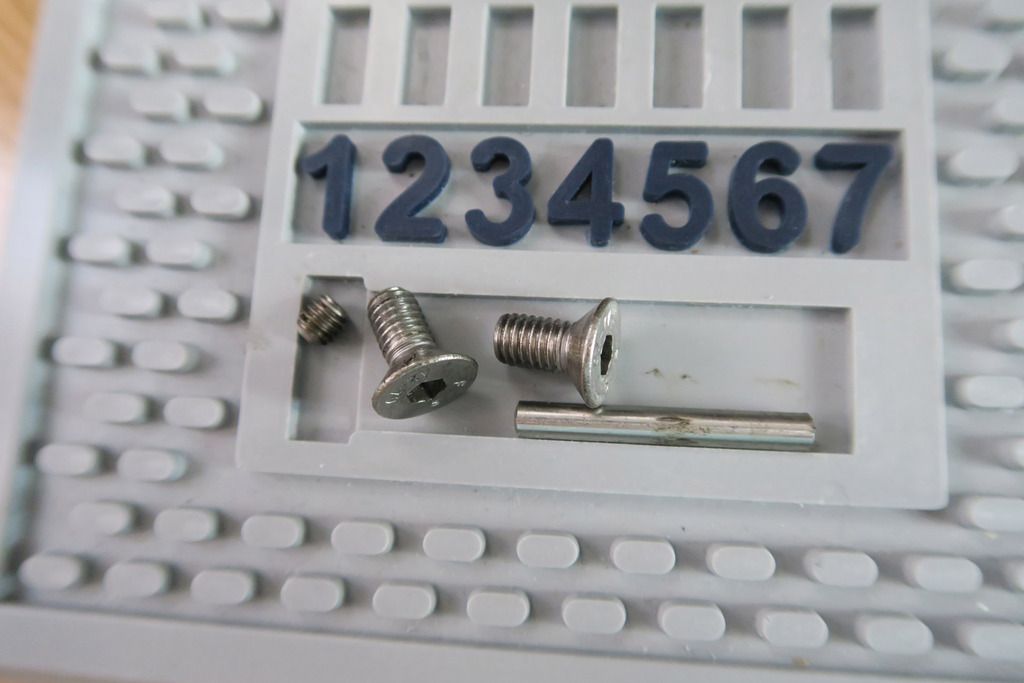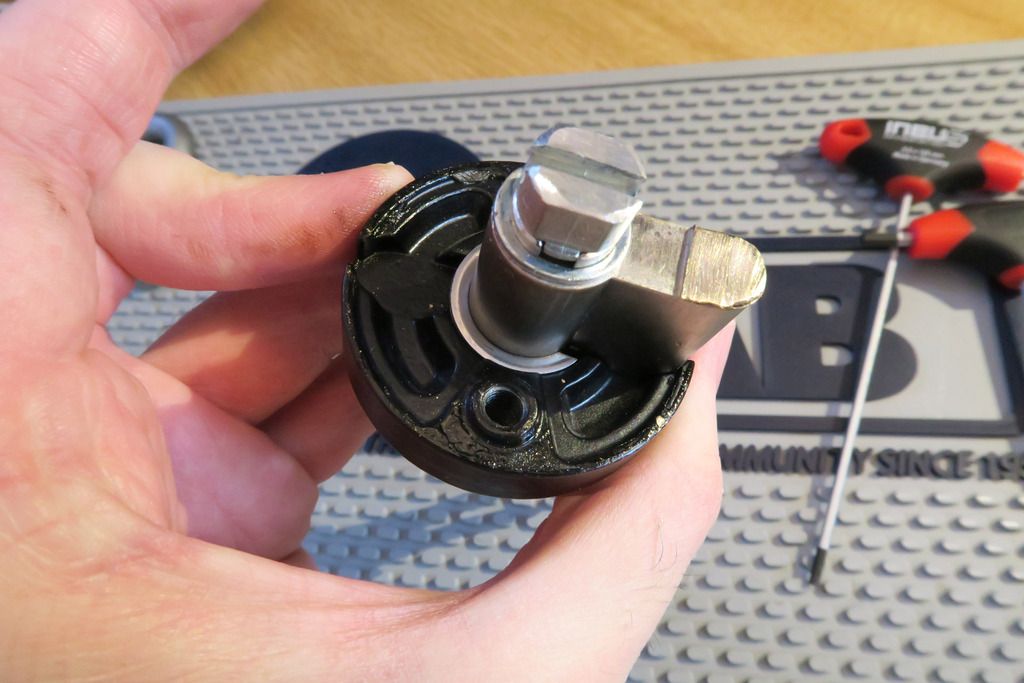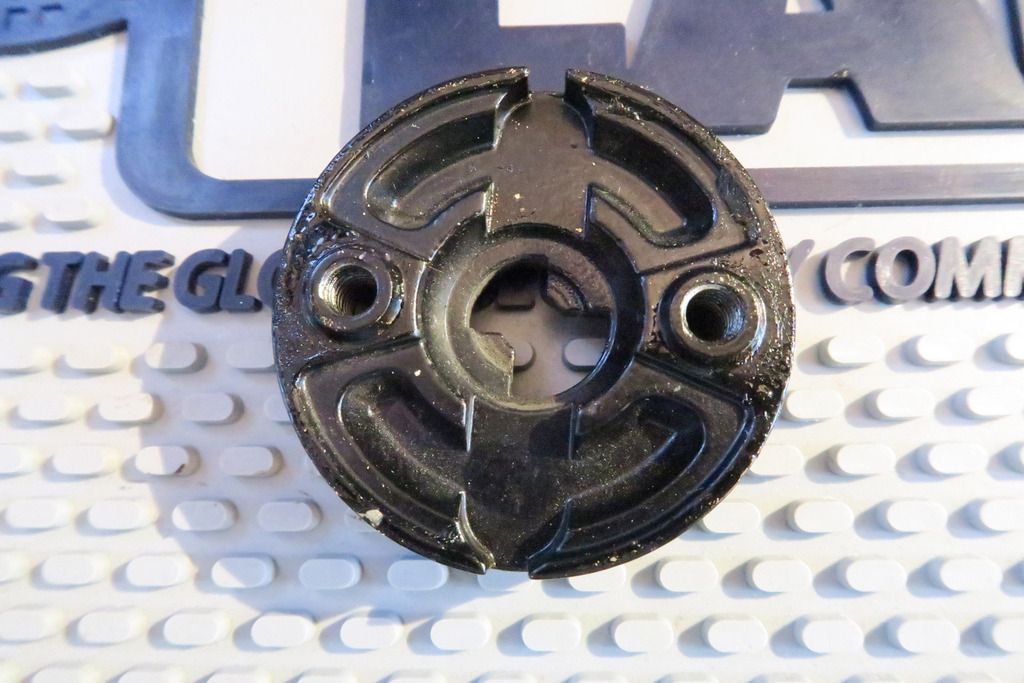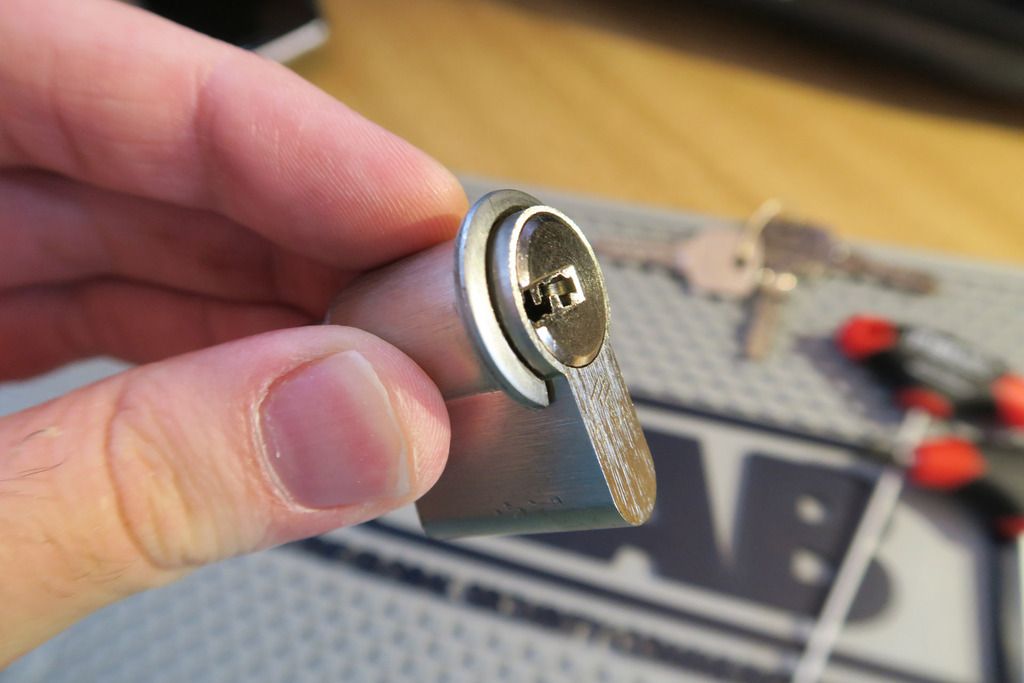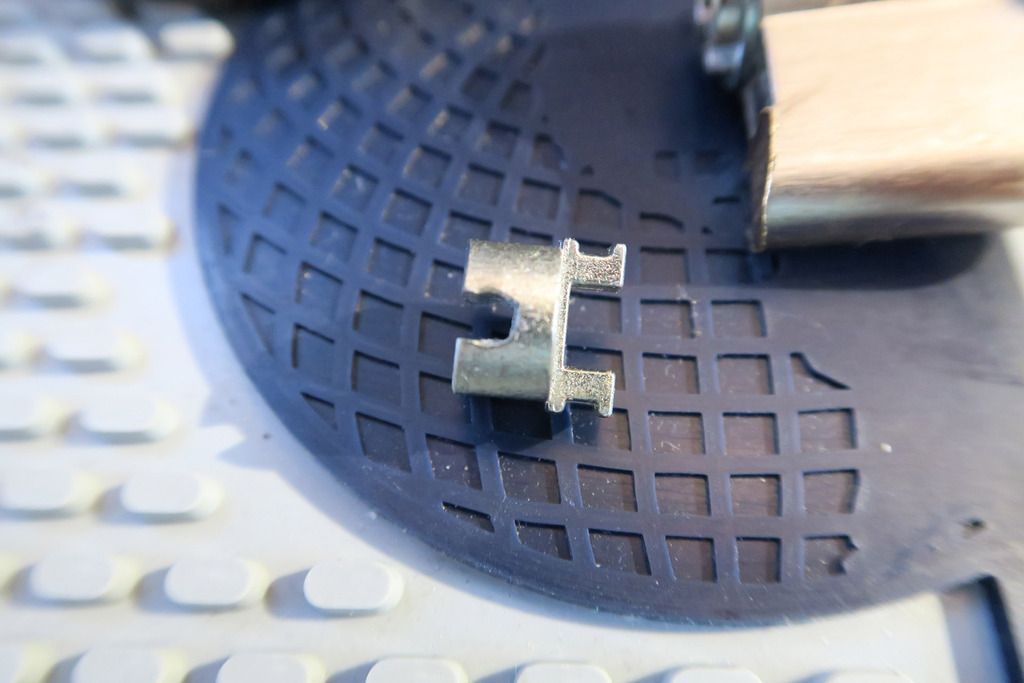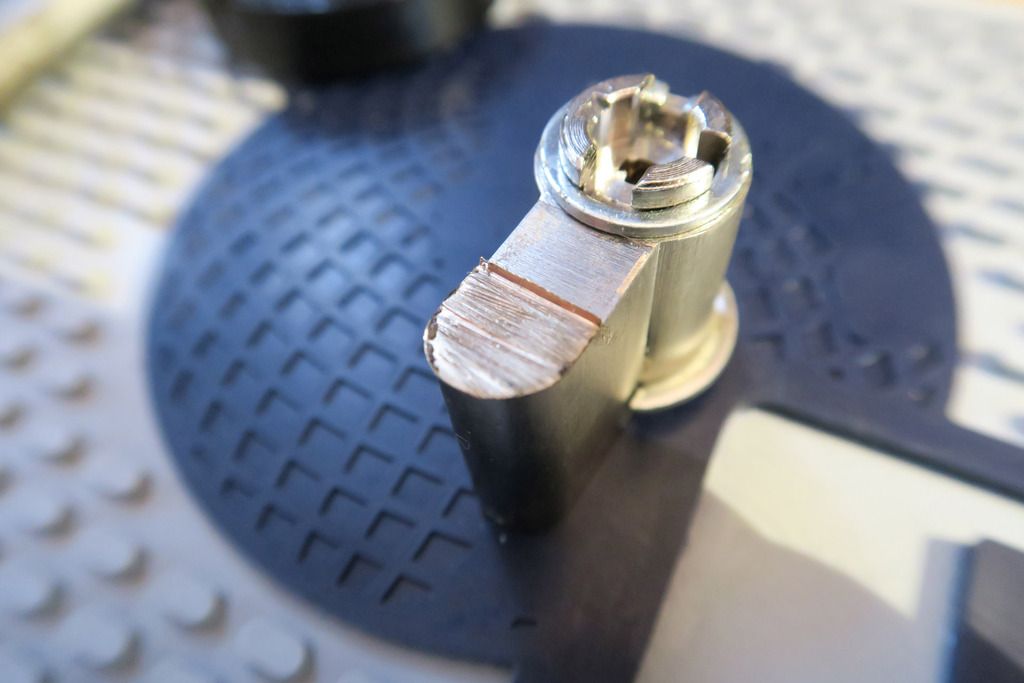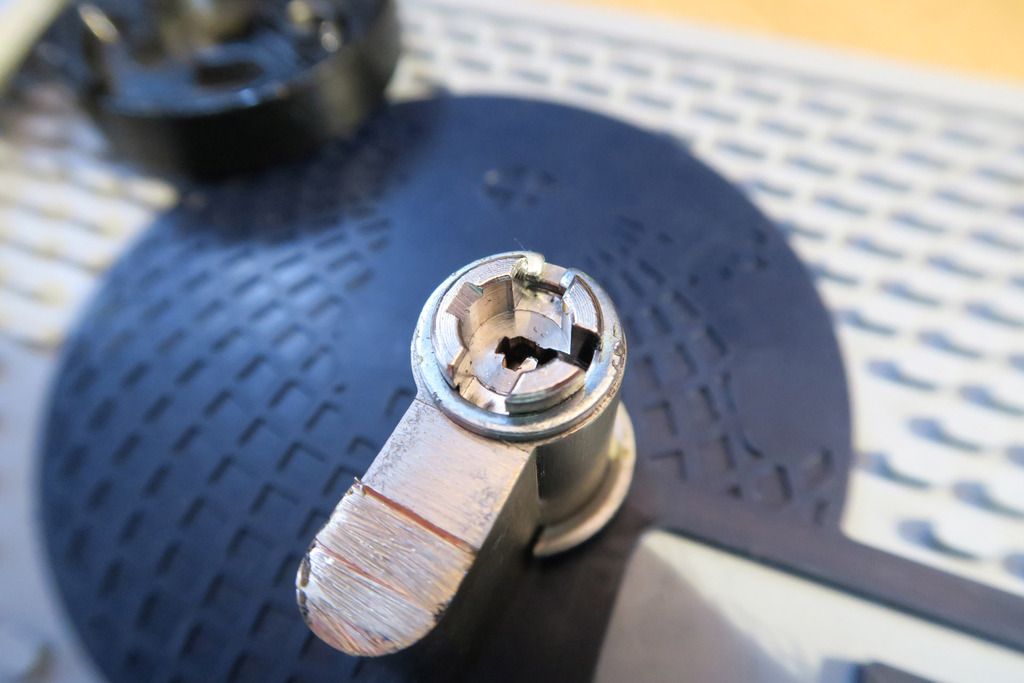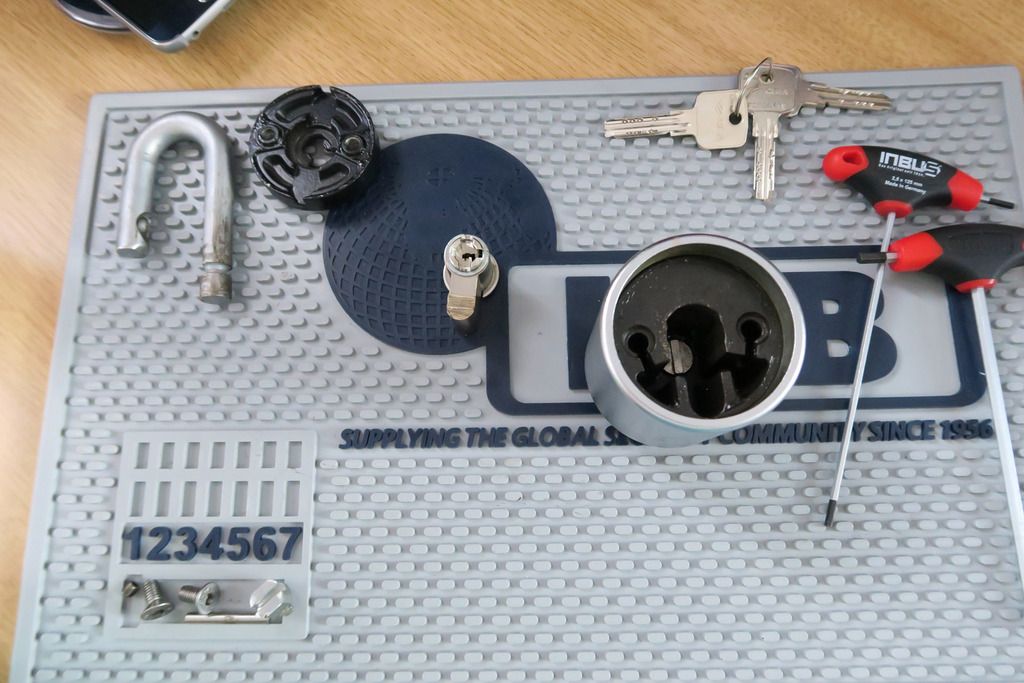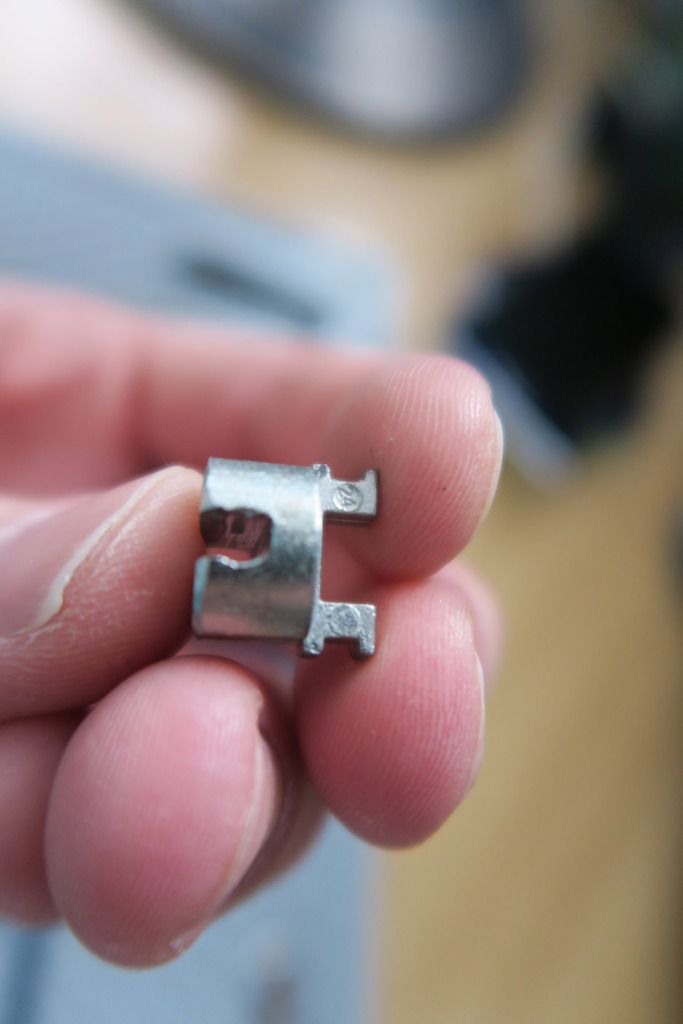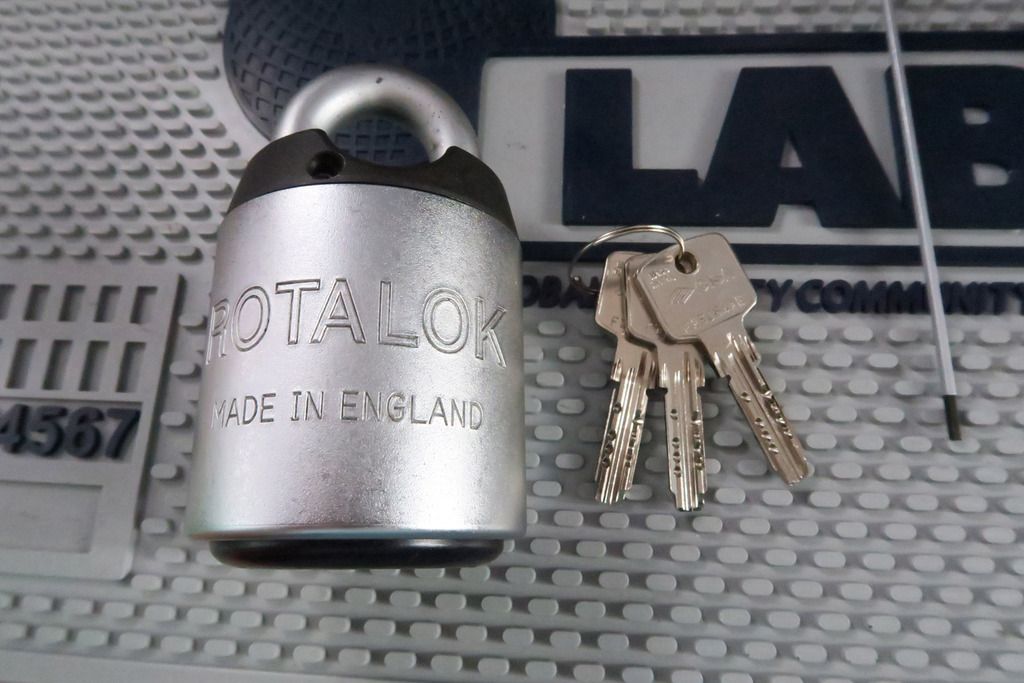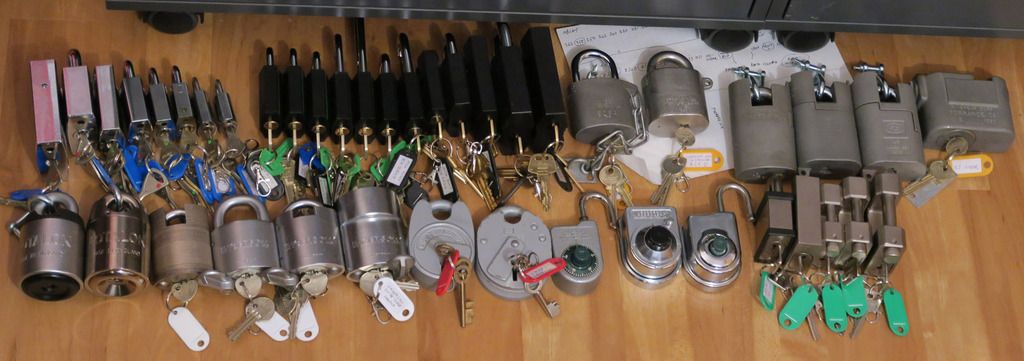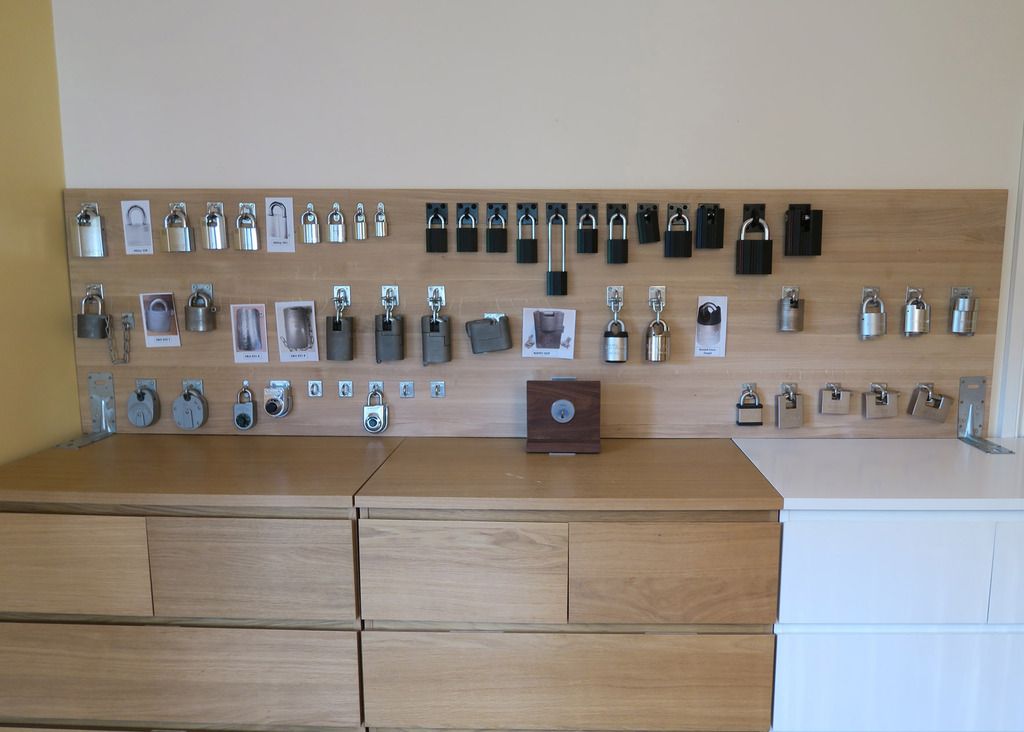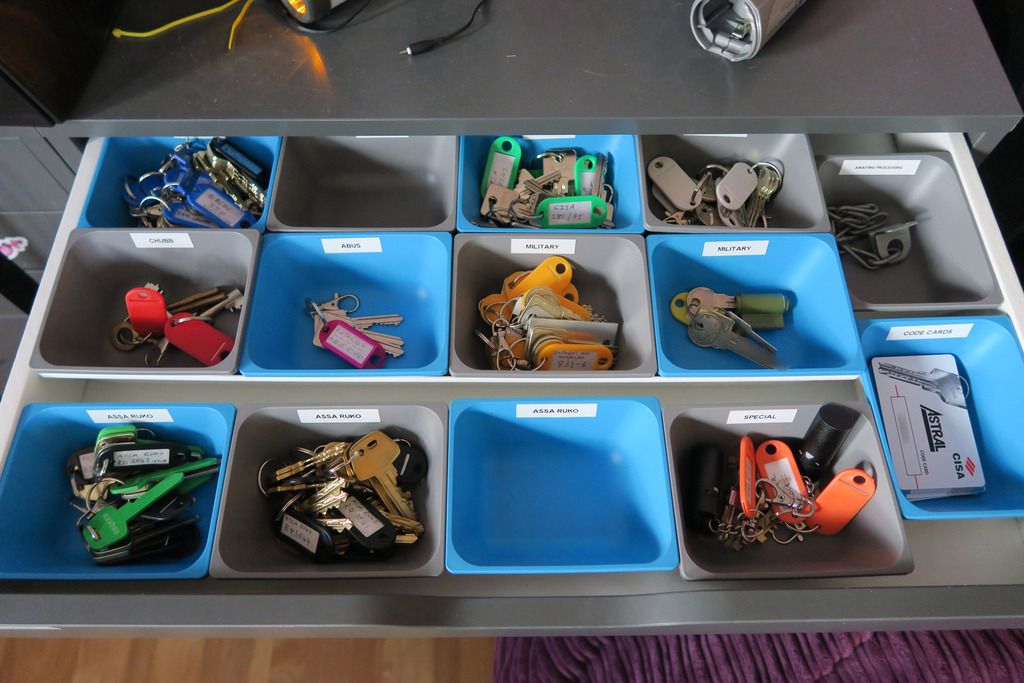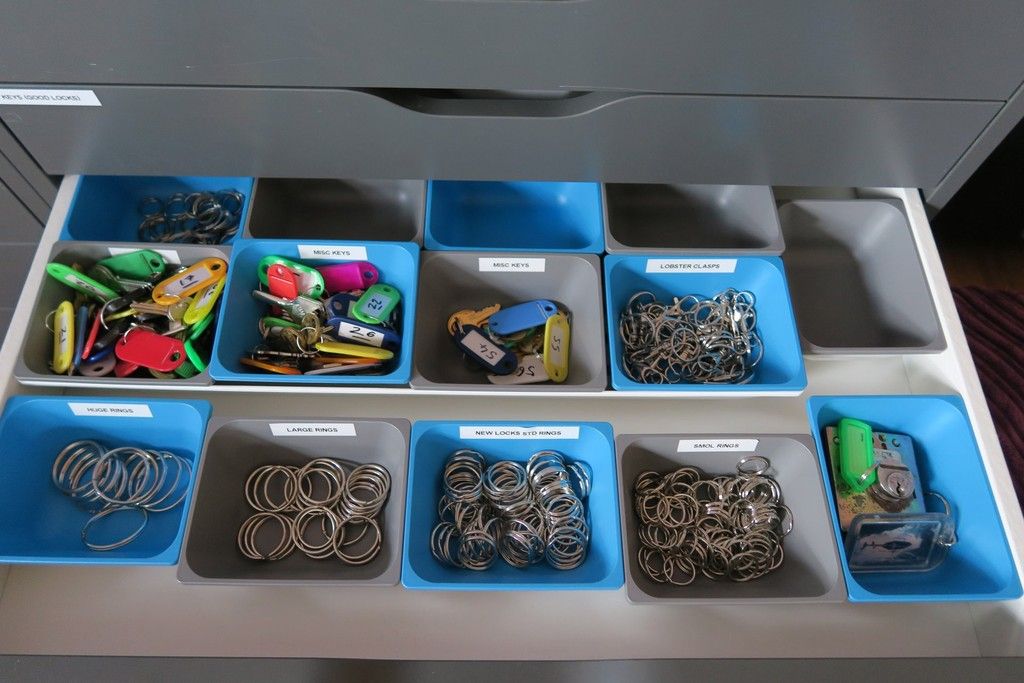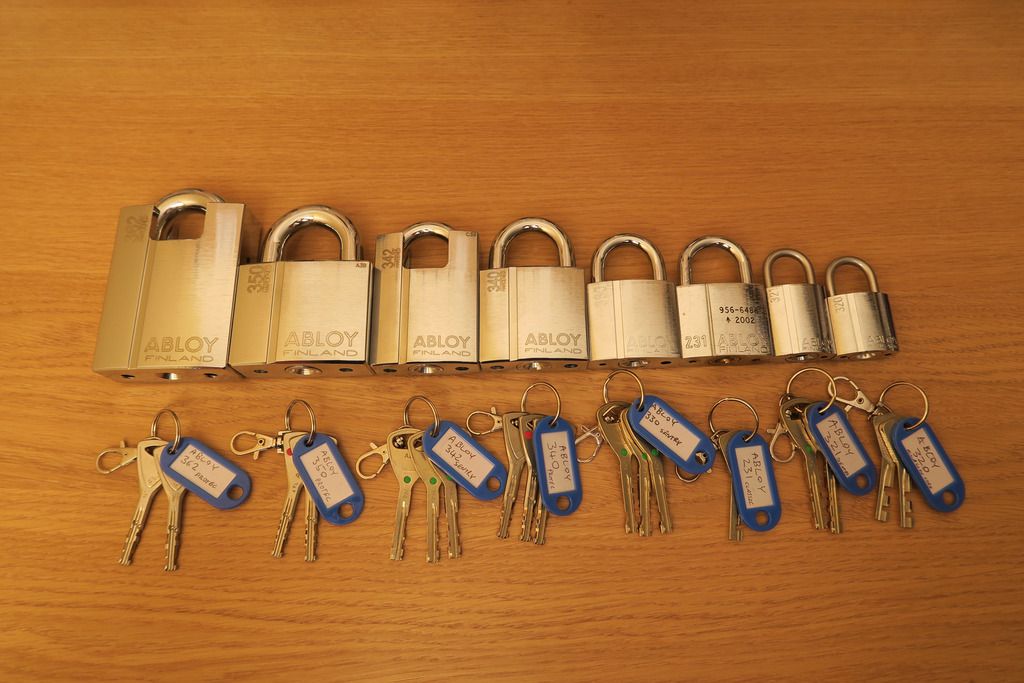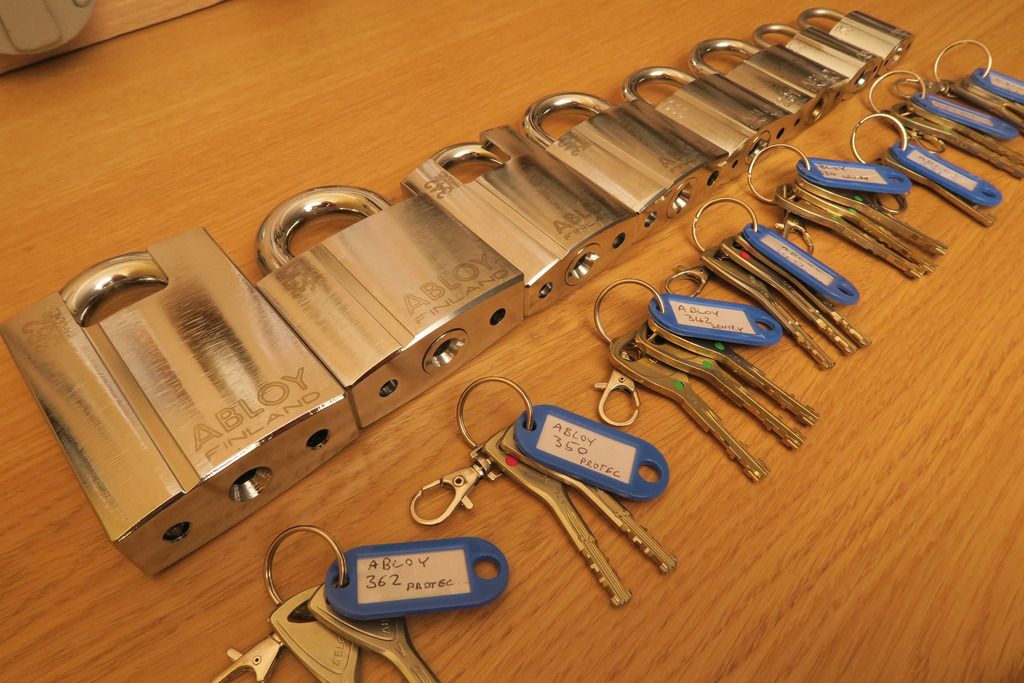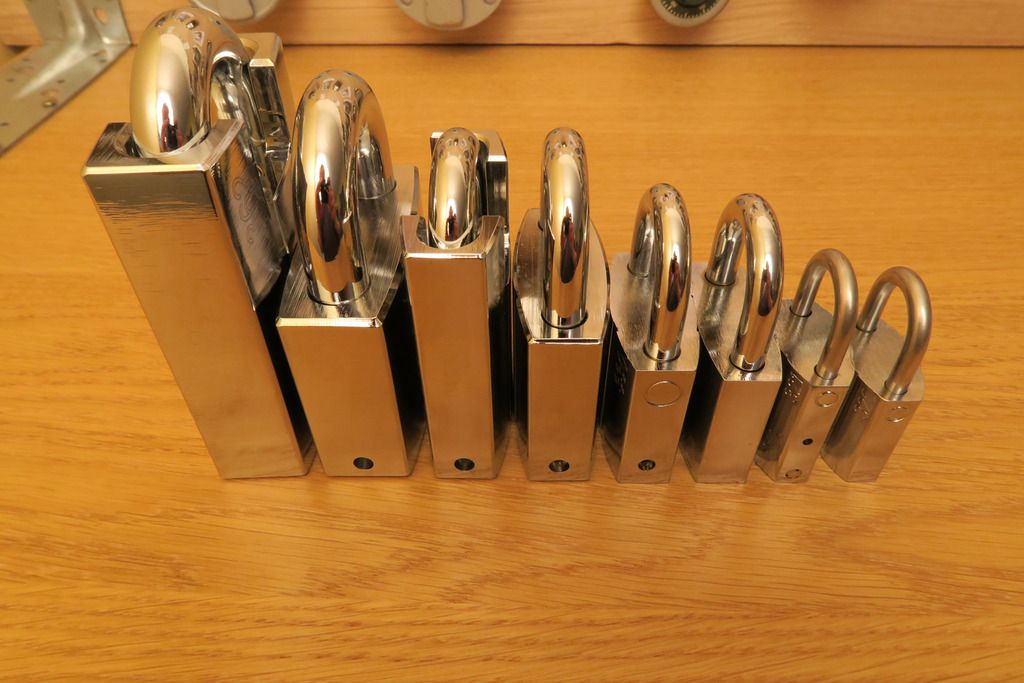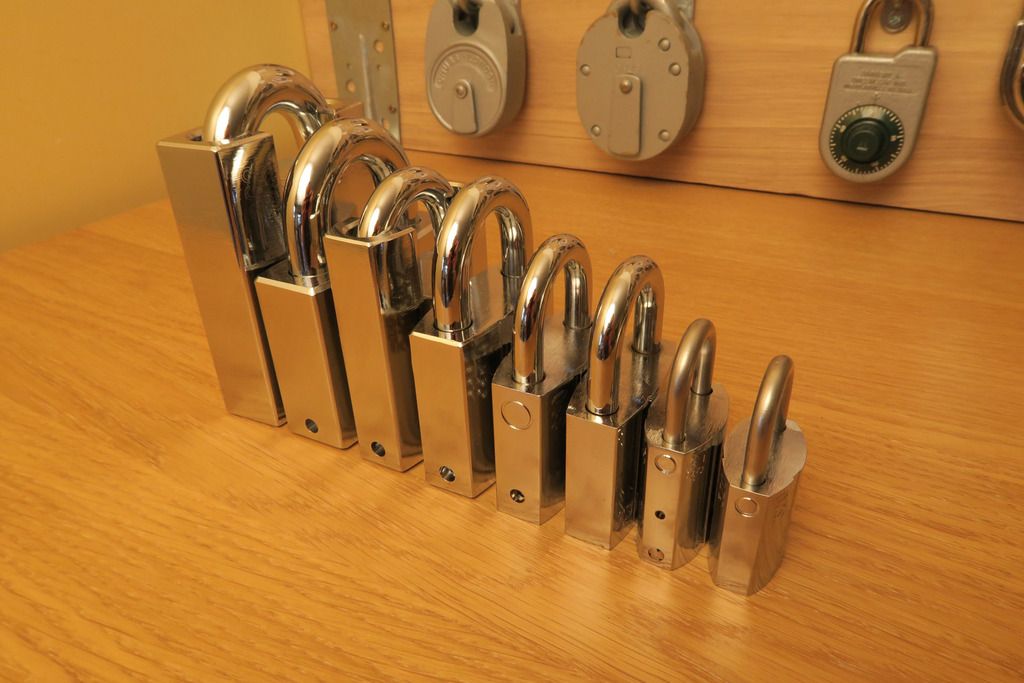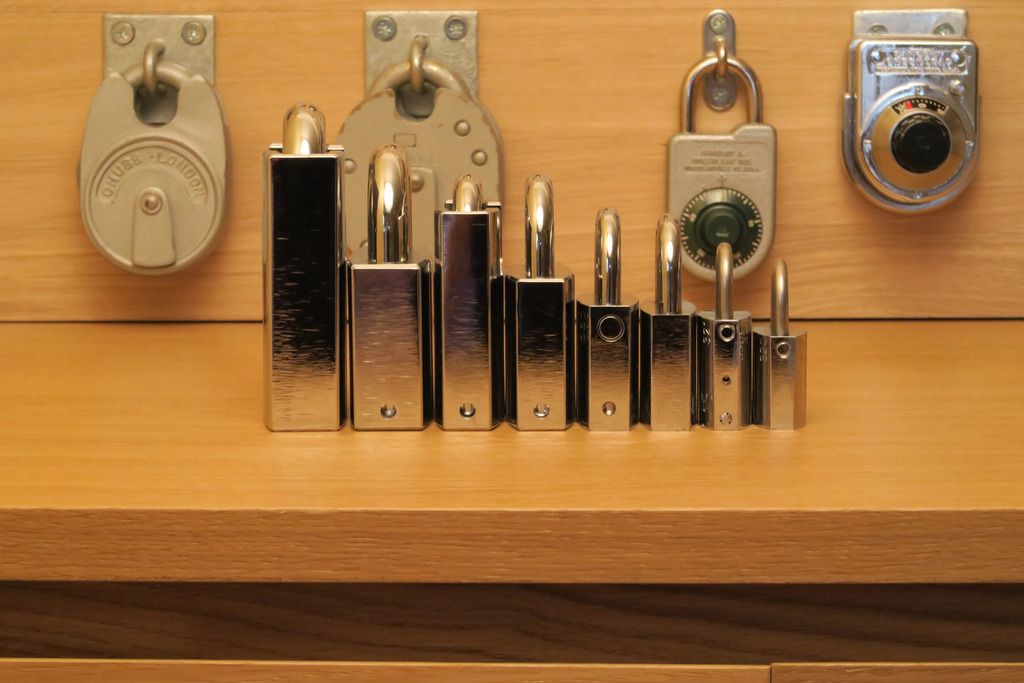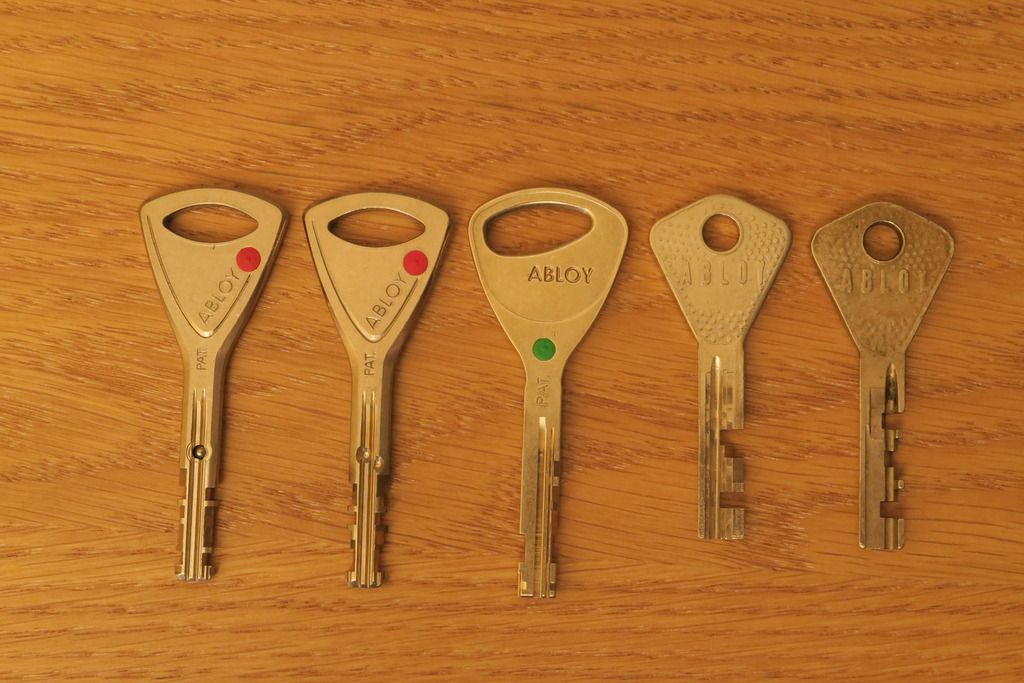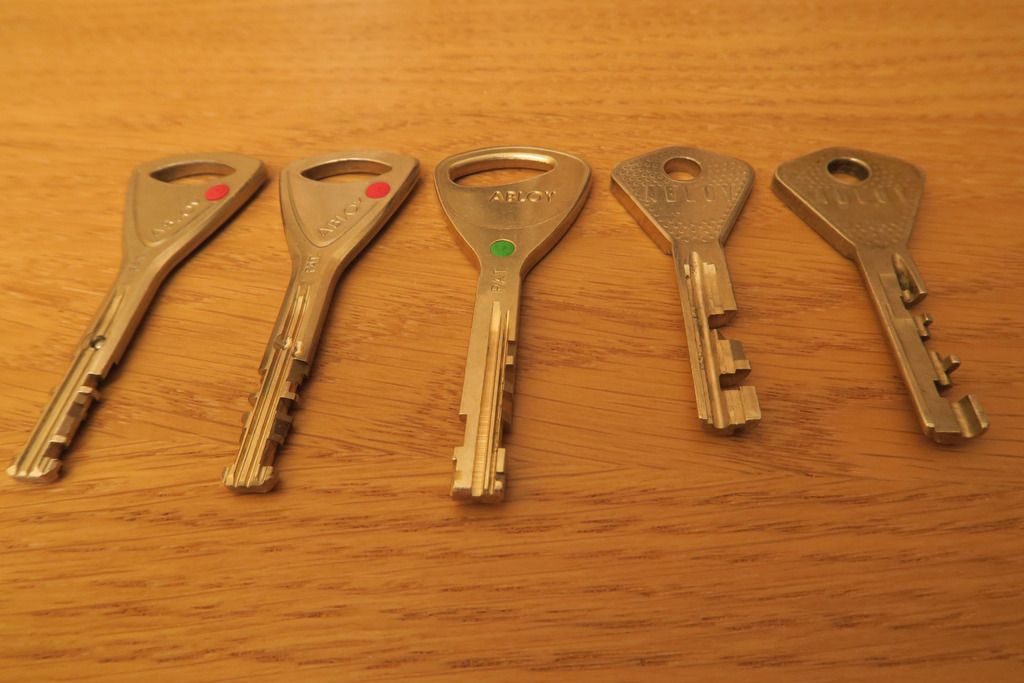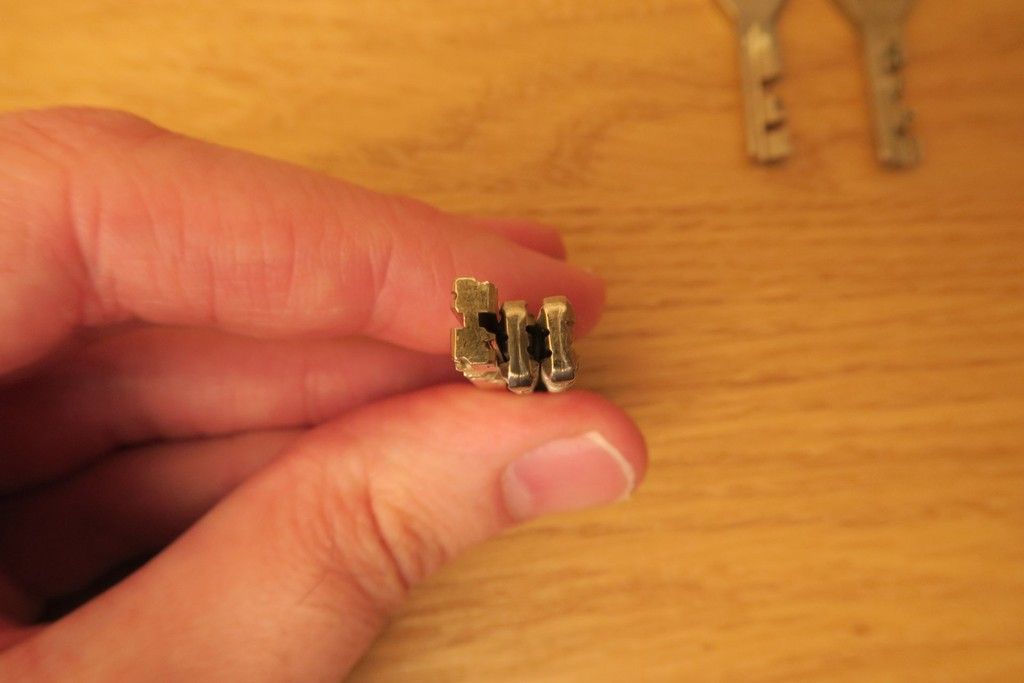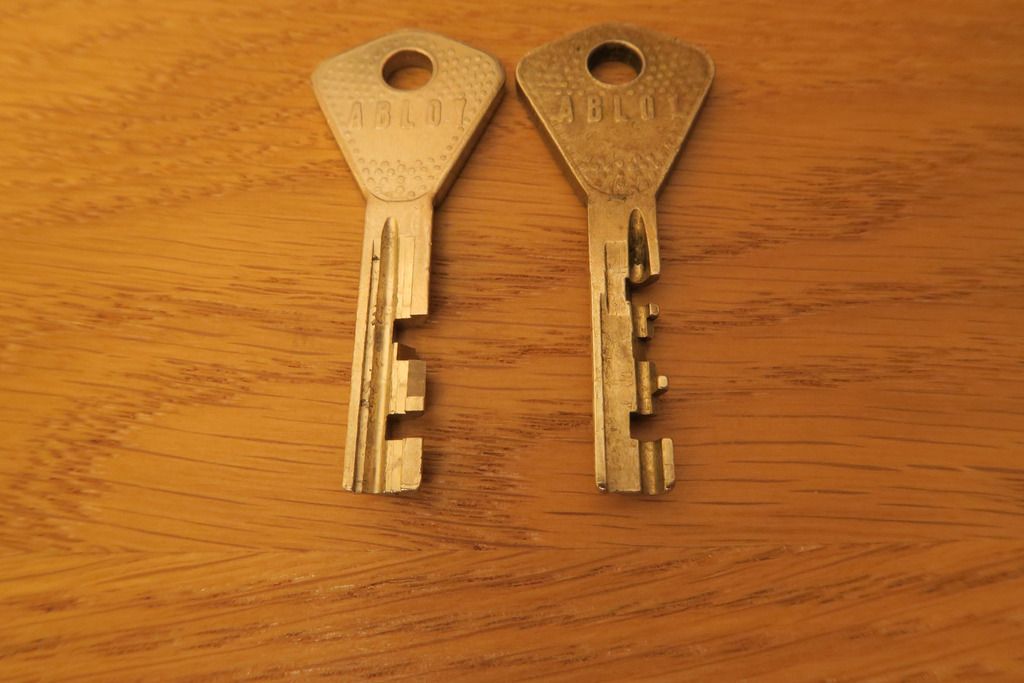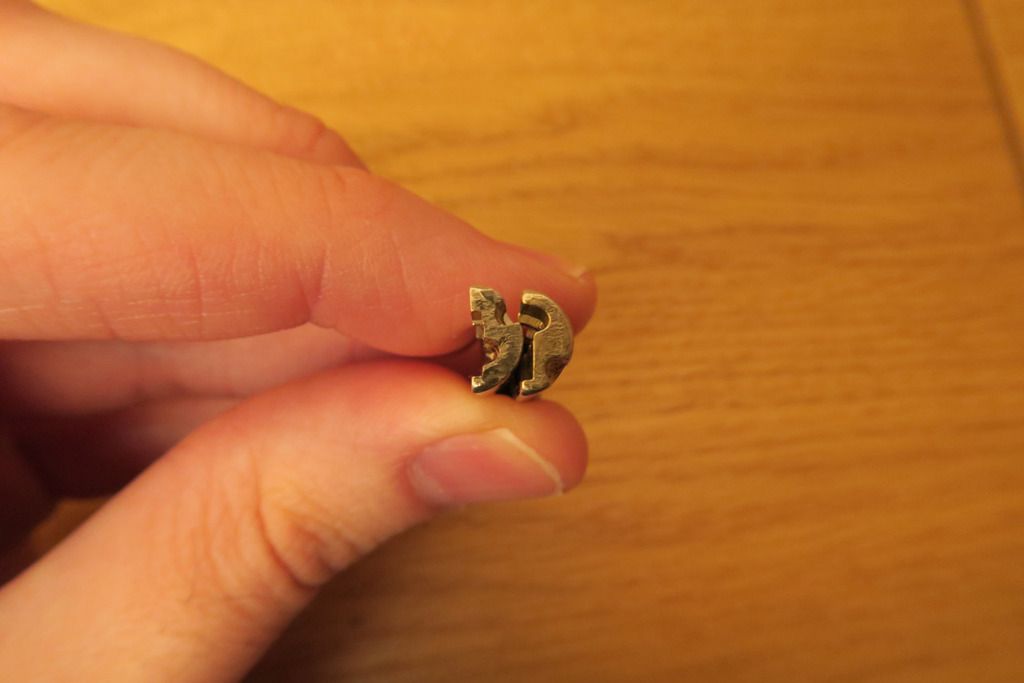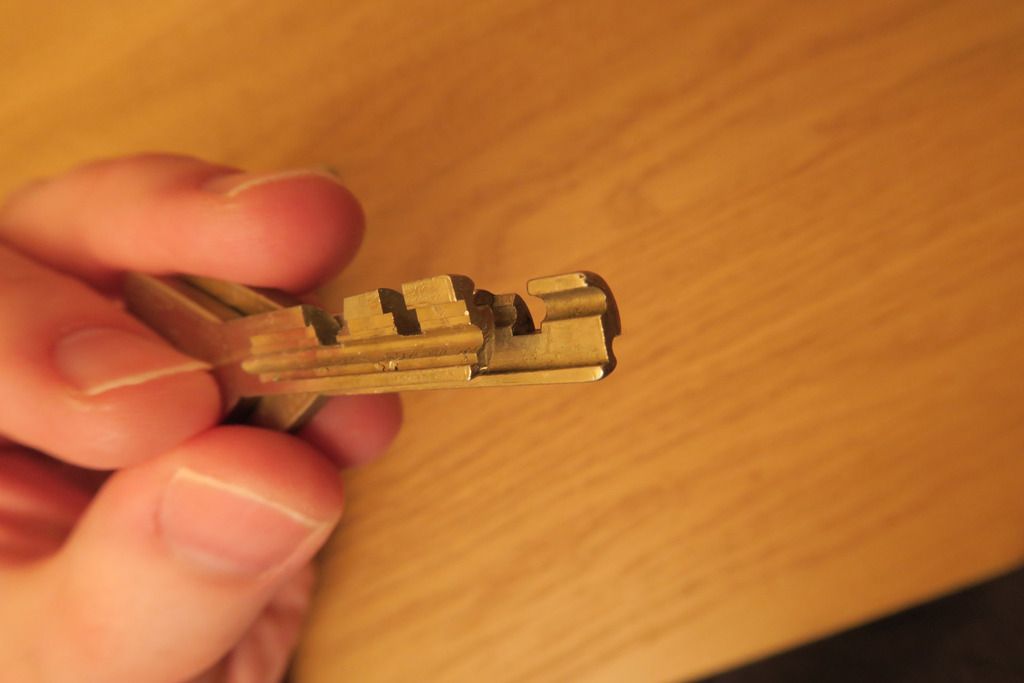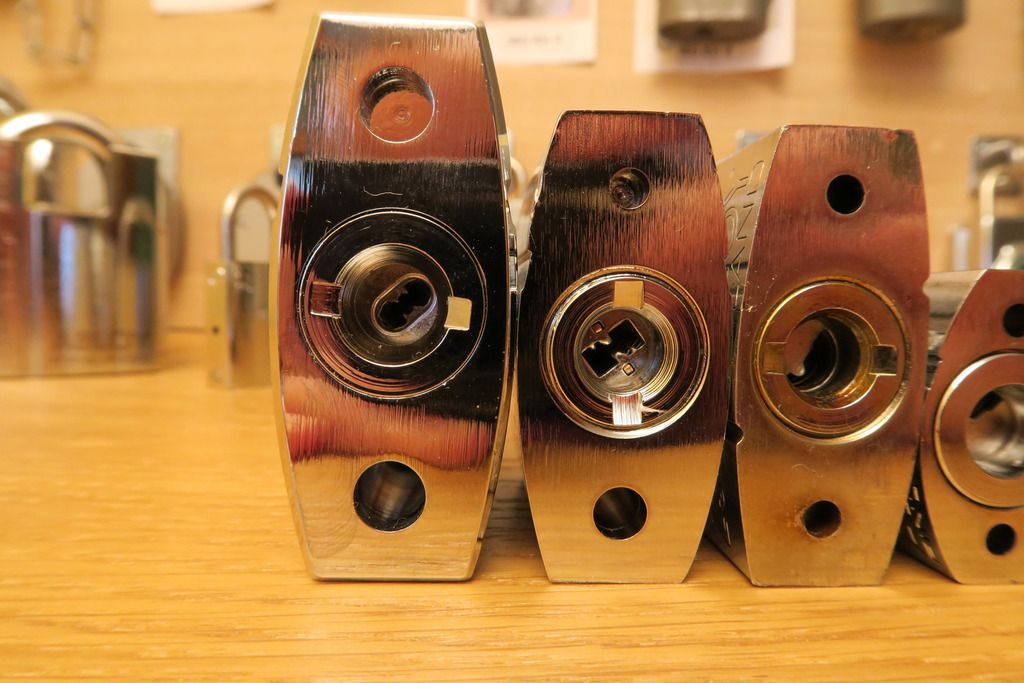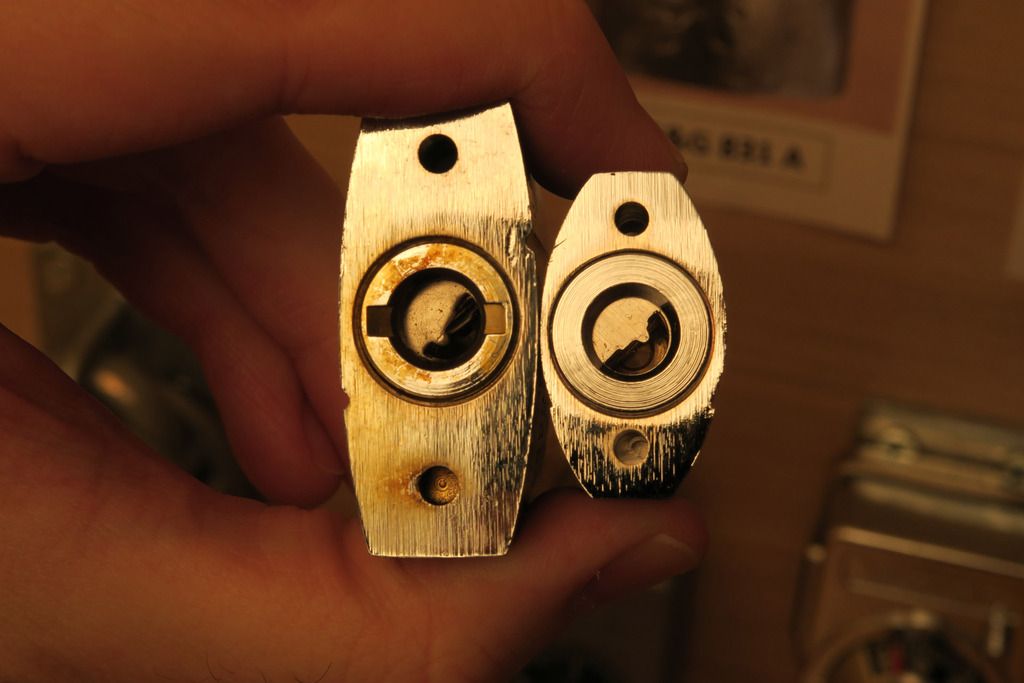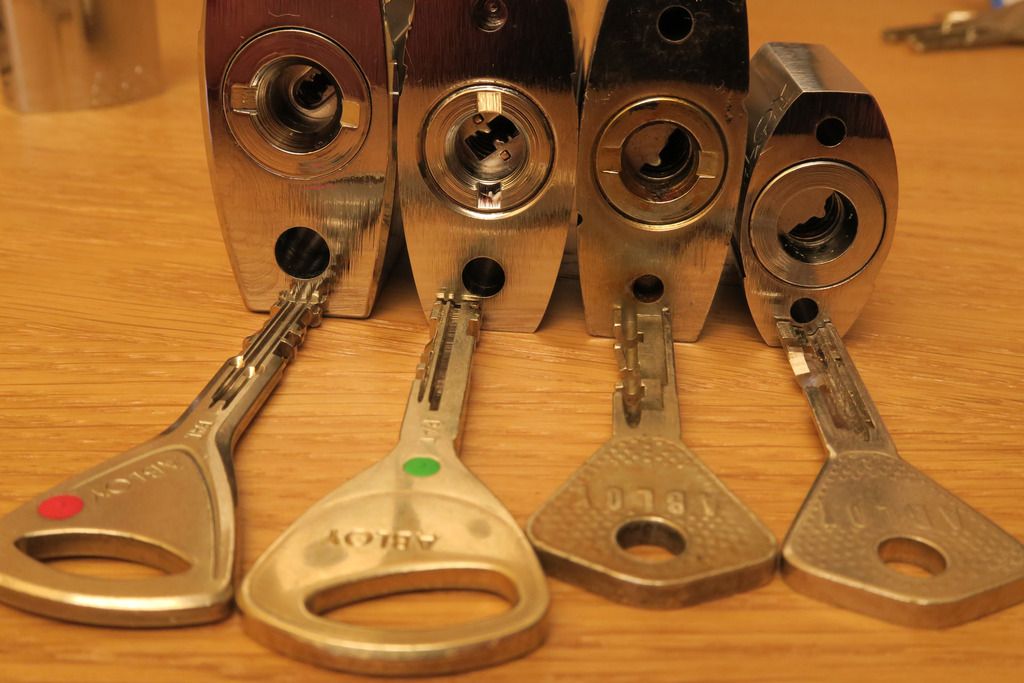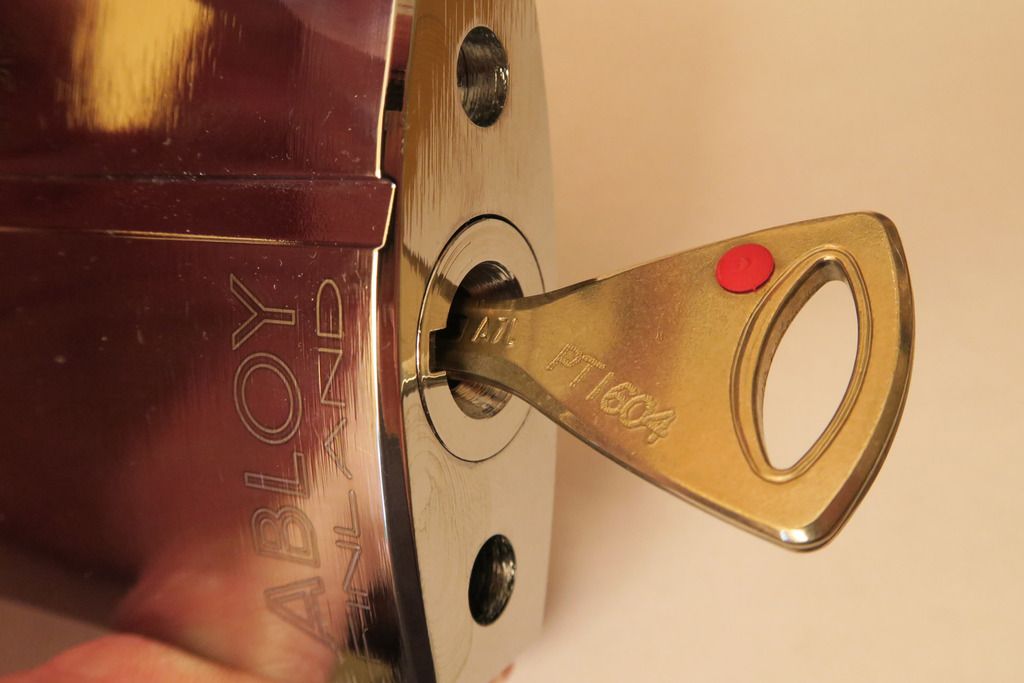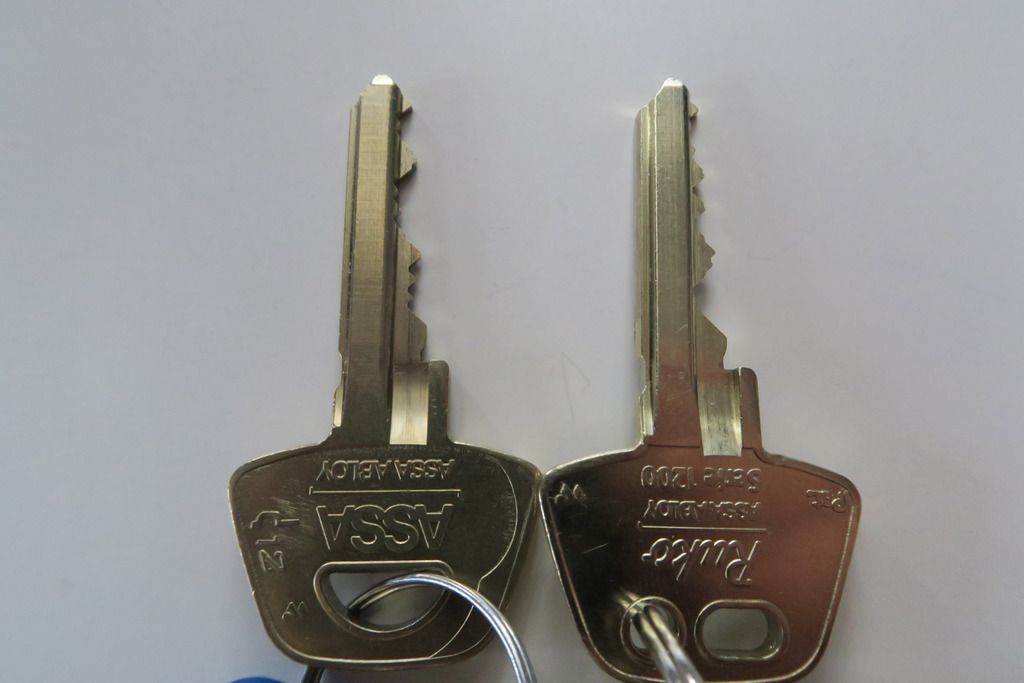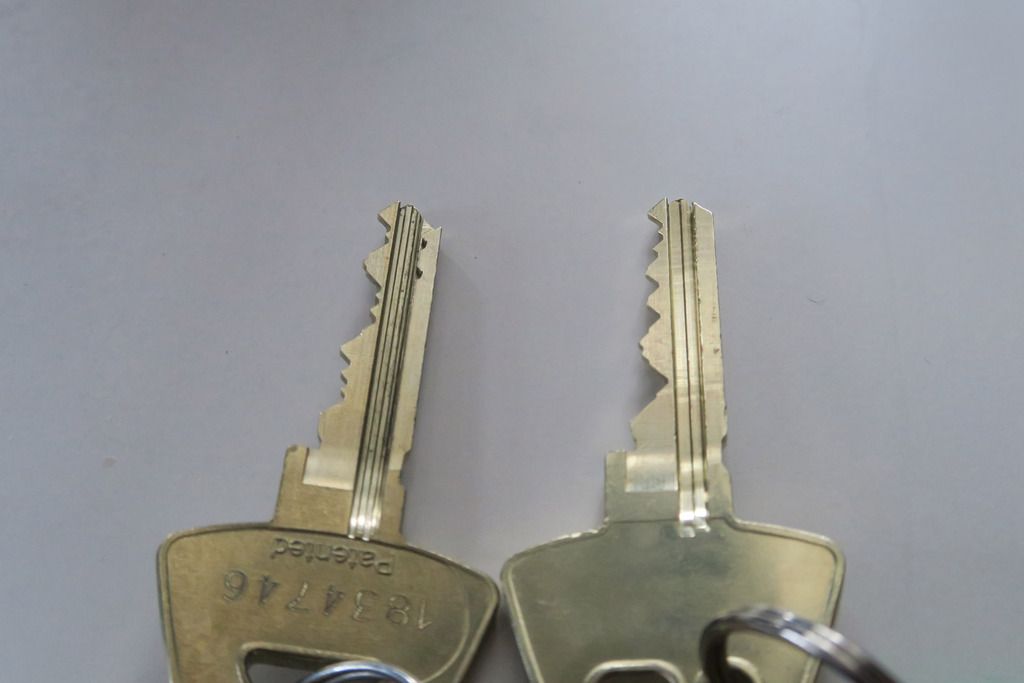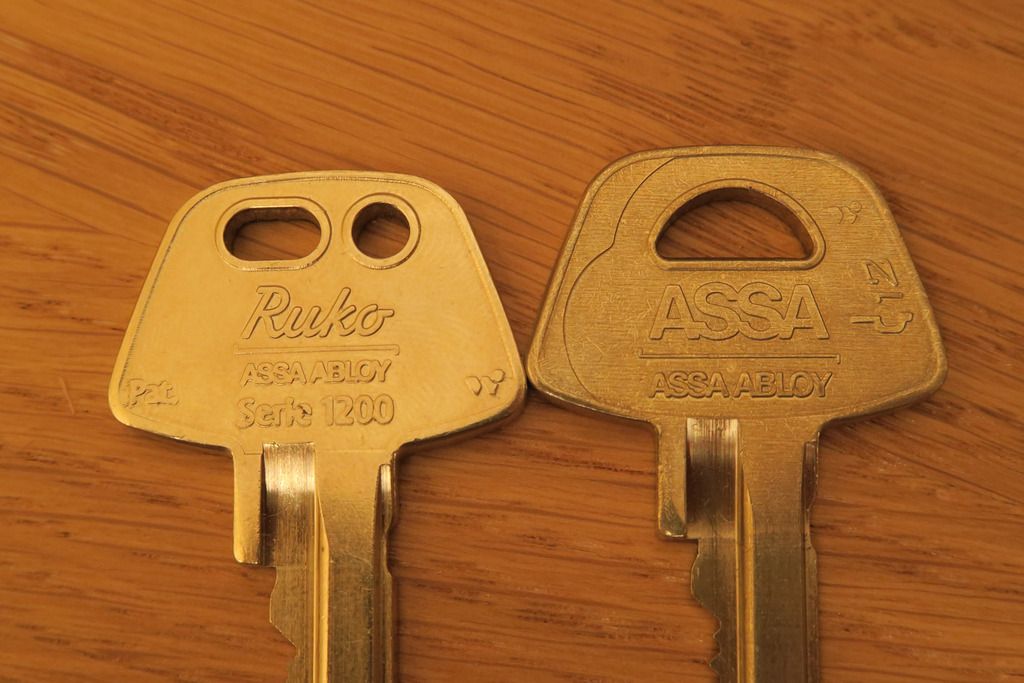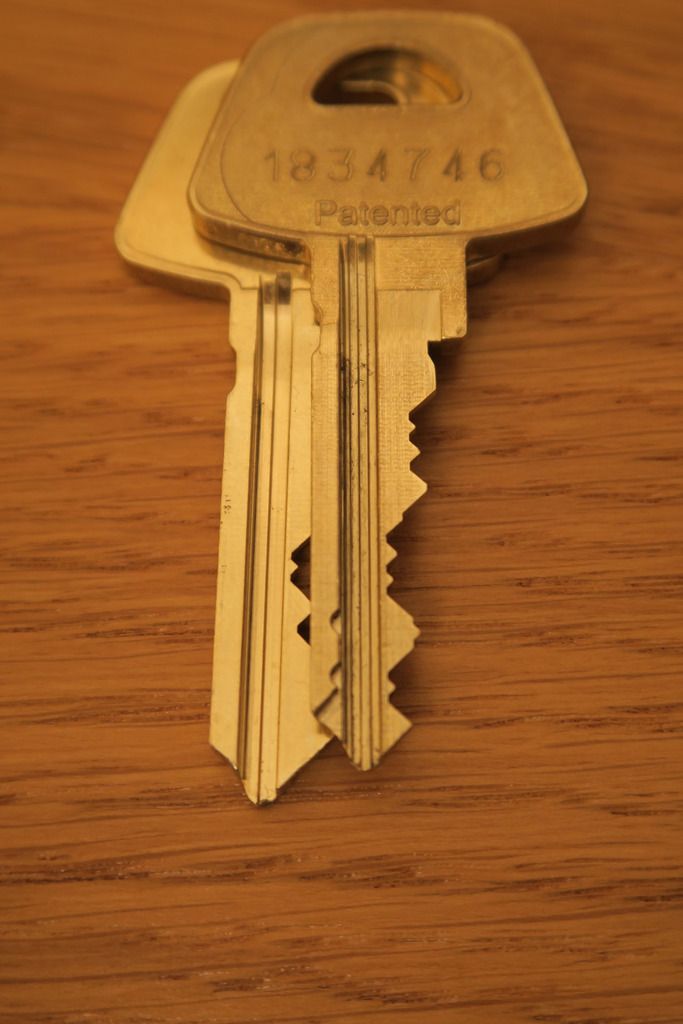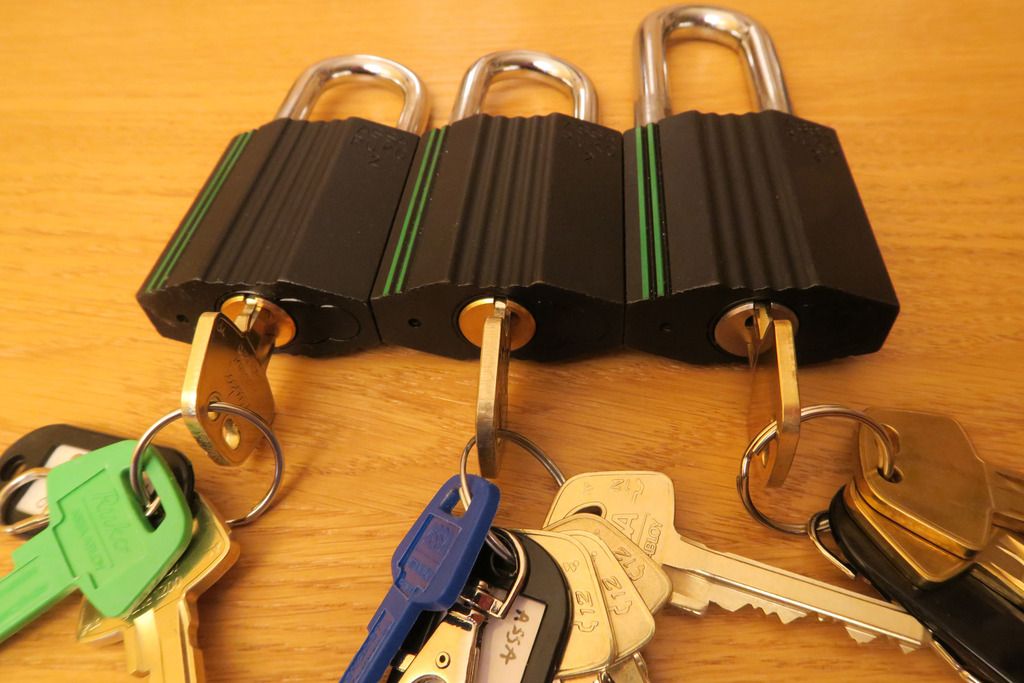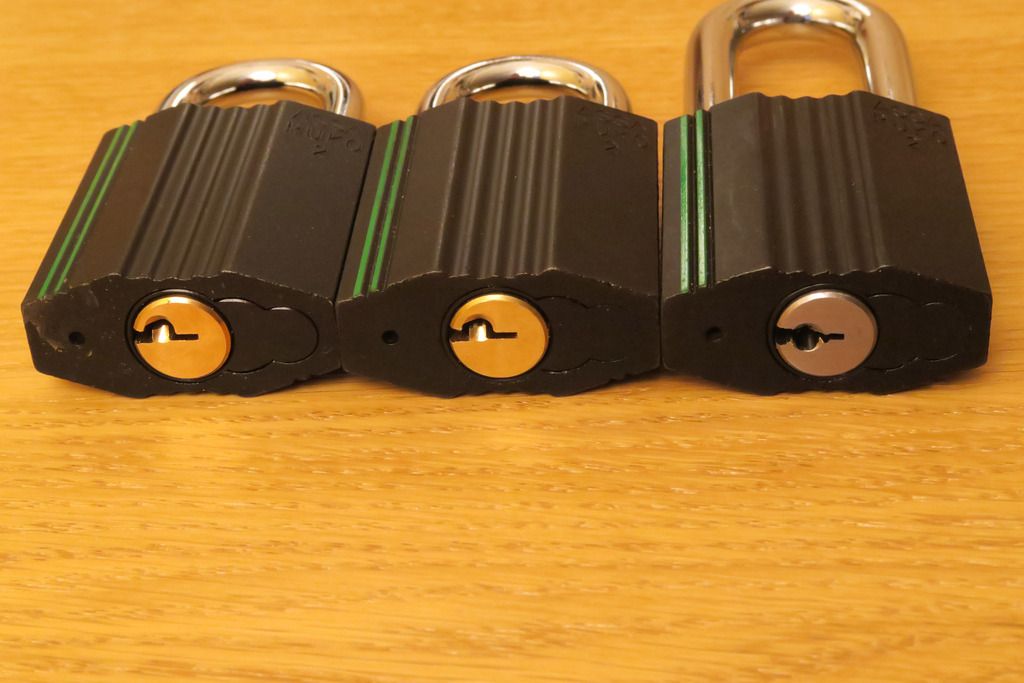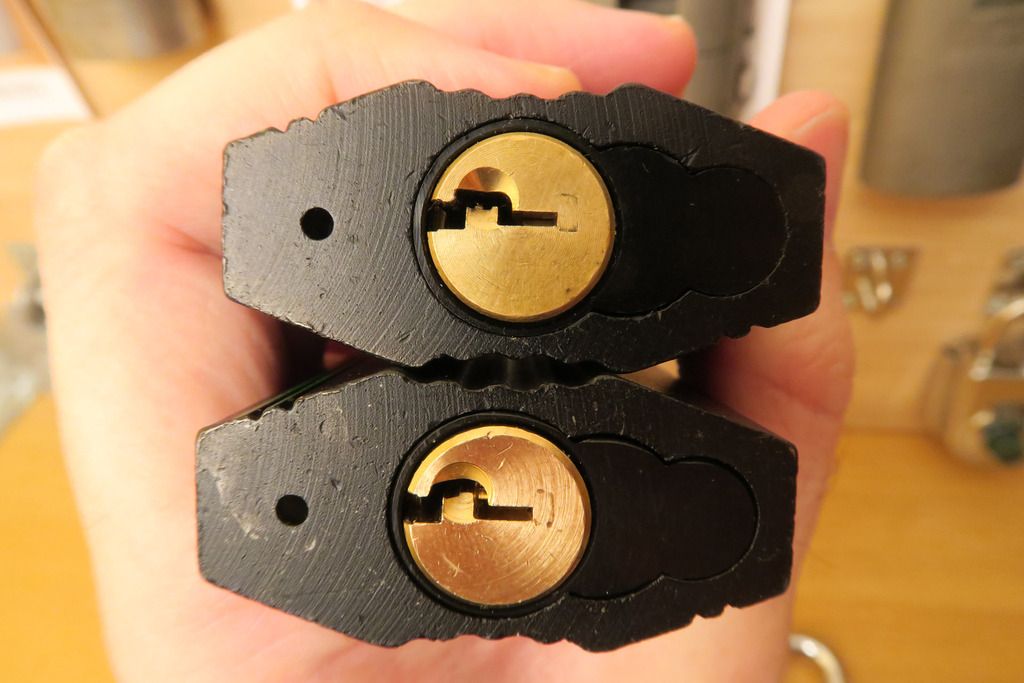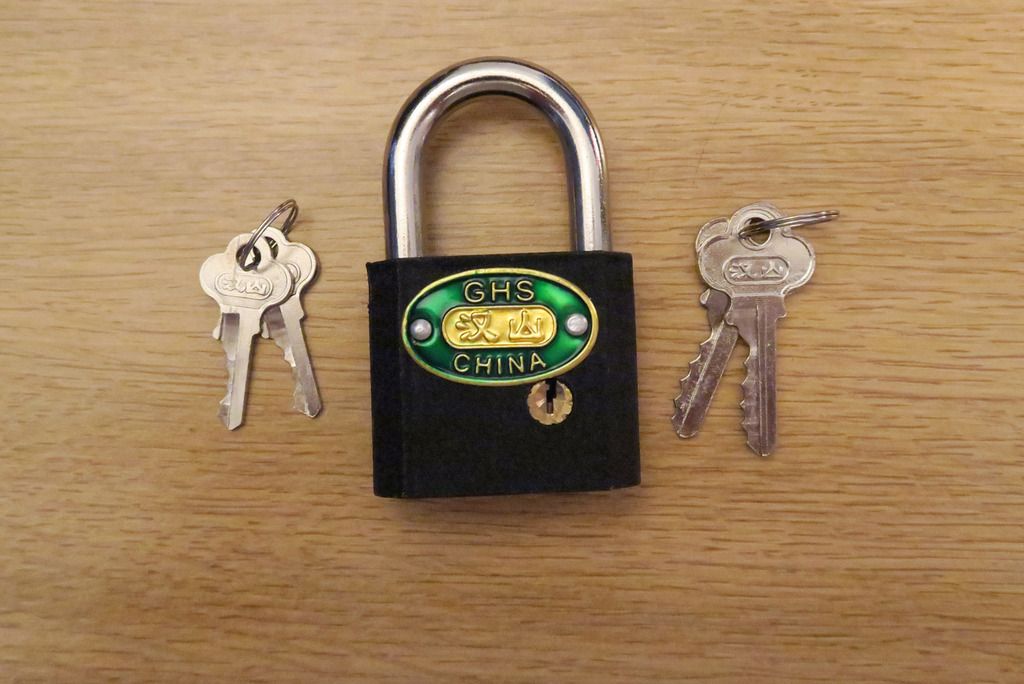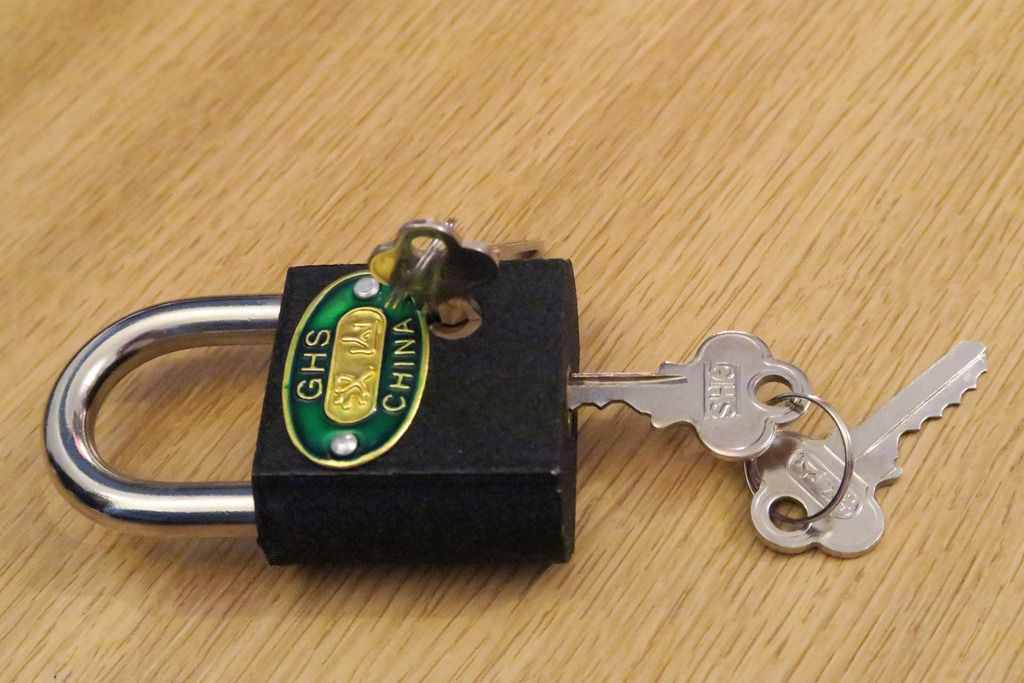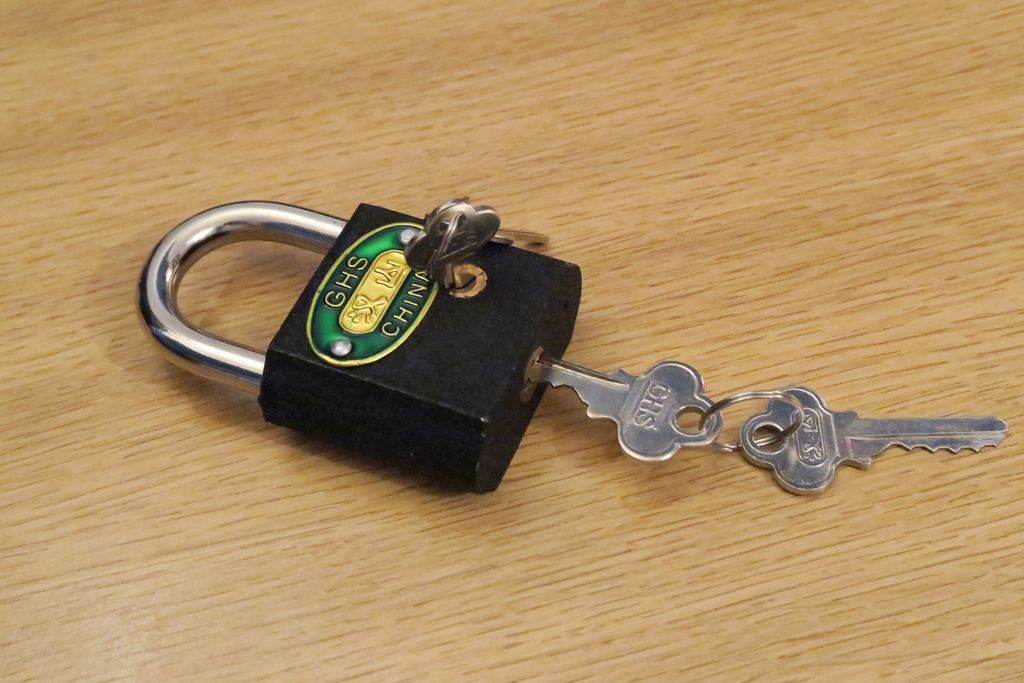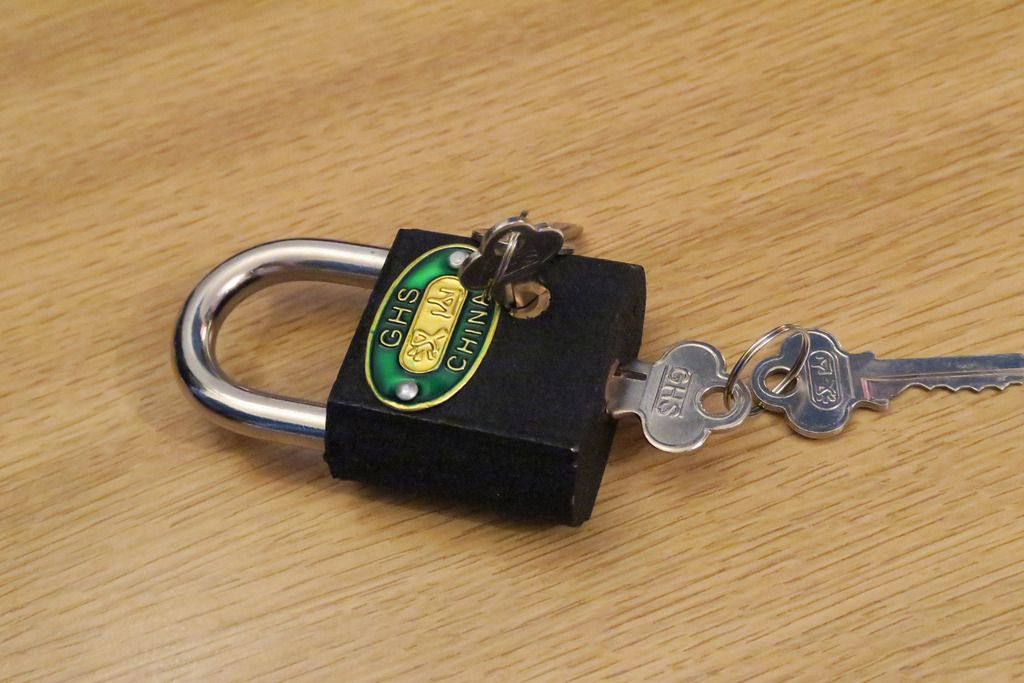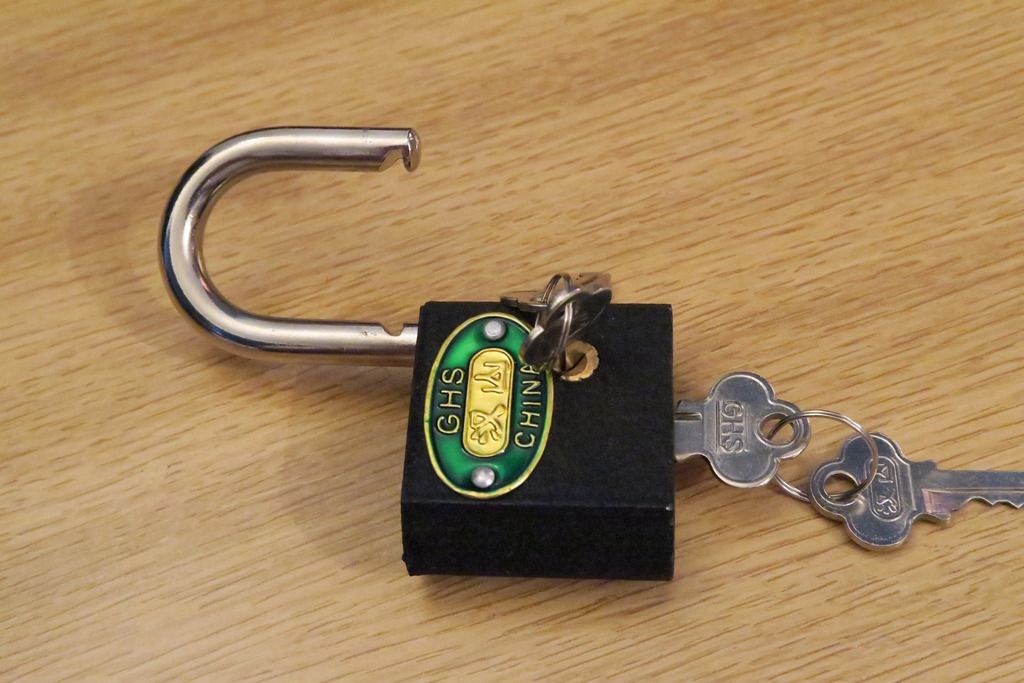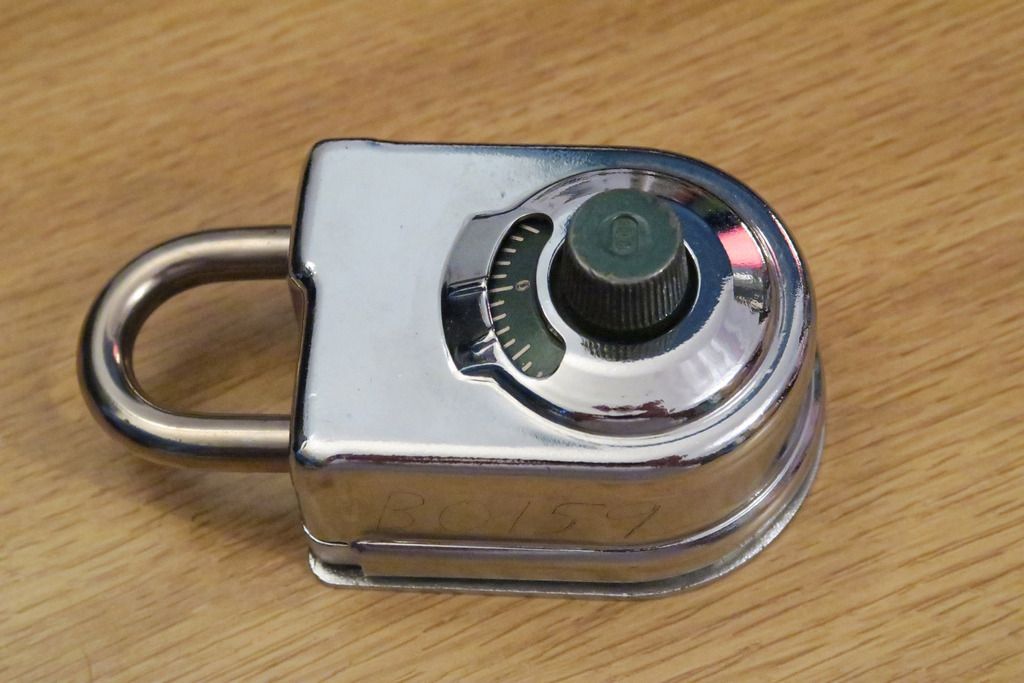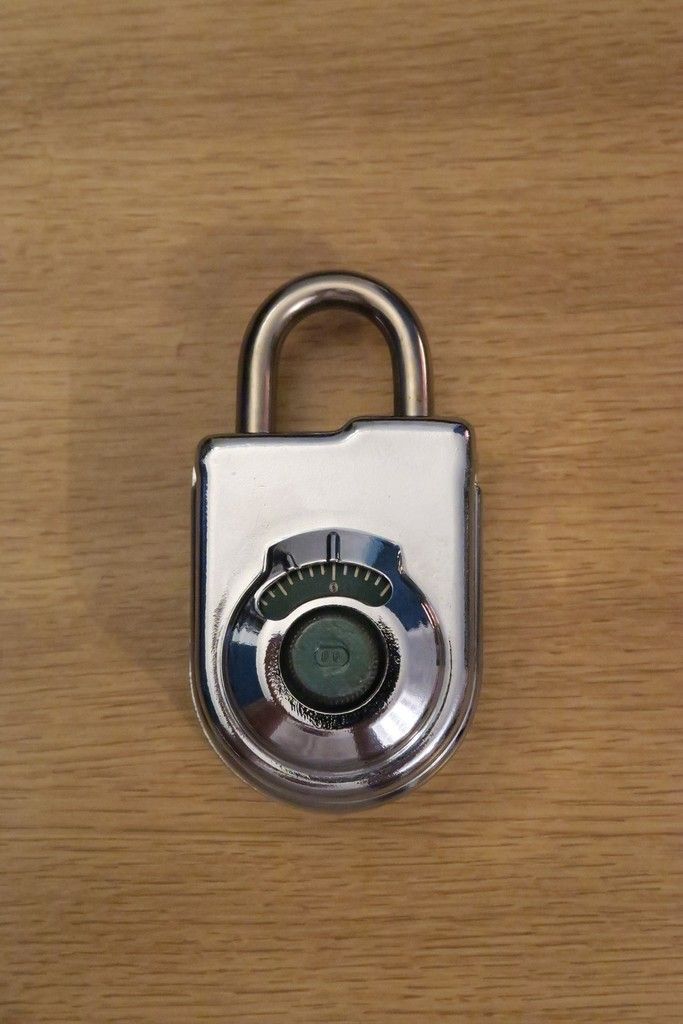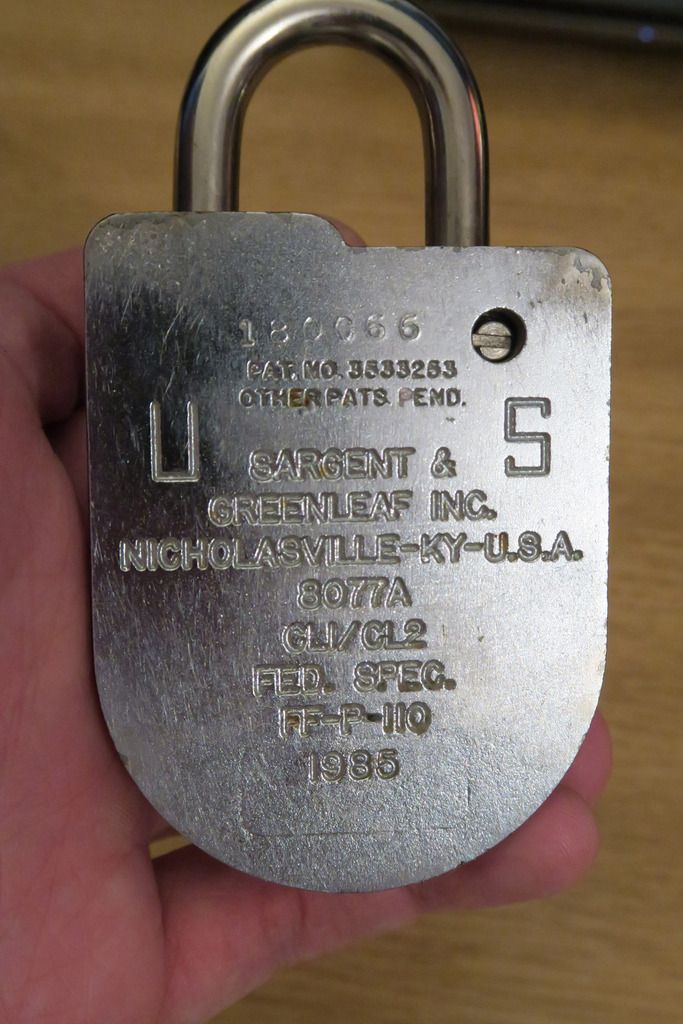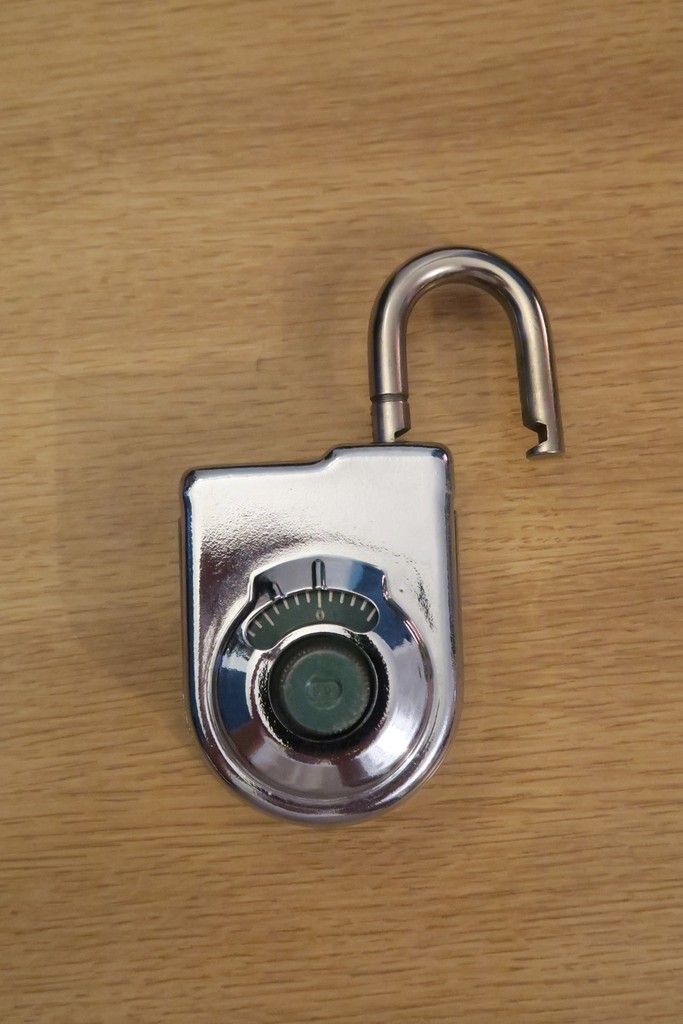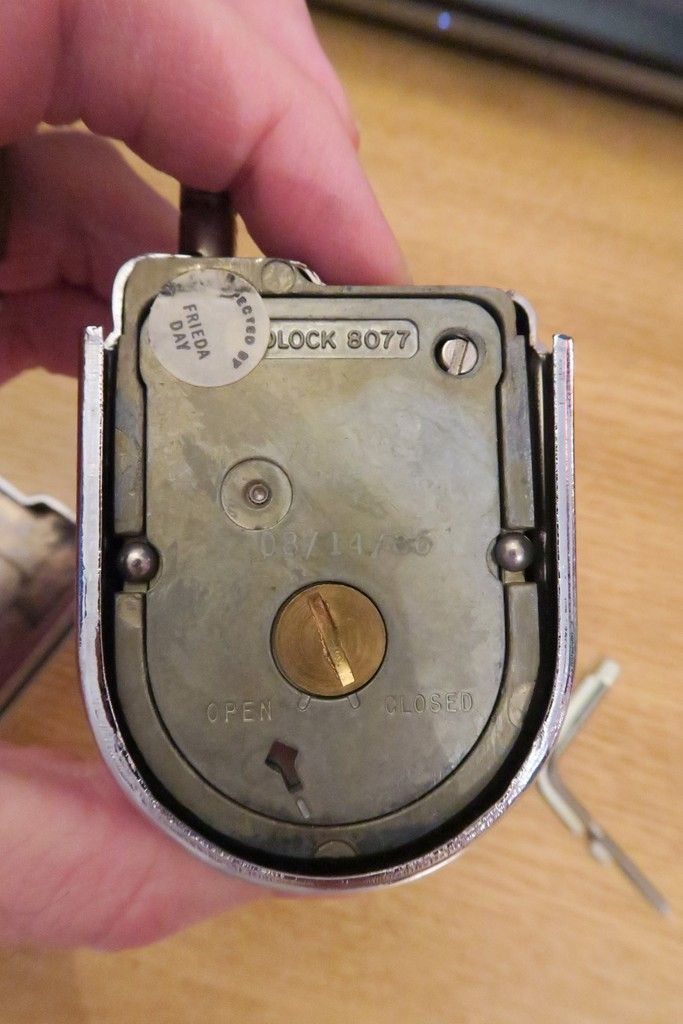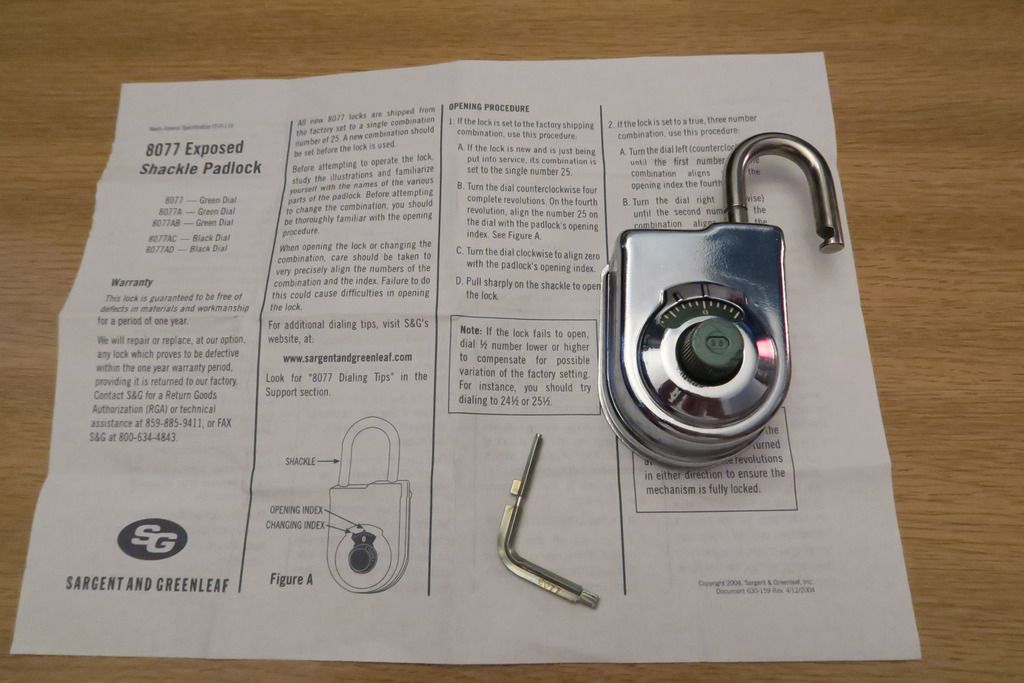In this post, my final update for now, we'll be comparing my two Rotaloks and looking at the differences between them.
This is an especially interesting topic for me because my semi-closed shackle (all silver) Rotolok is a bit of a work in progress as I try to find or modify a suitable core for it. I've bought, tested, modified and re-tested a couple of different cores now, and have two more on order, as well as several threads out there but have never really gotten down to the nitty gritty of why these locks come in so many different versions or why some seem to work fine with drop-in cores and some seem to need modification.
In addition to the two that I now own, I've seen three or four others on the web, two in a good amount of detail - one being BosnianBill's video about the Rotalok, and one being a forum post. both of these locks appear to be different from my two, and in addition the company who previously owned Rotalok (which I've never fully discerned, but it might have been 'Federal'), has now sold them to Pickersgill-Kaye, with the new locks being branded Kaye-Rota. I've never seen one of these outside of their own site but considering that these are primarily designed for the prisons sector and other high security areas, it begins to make more sense why it's so hard to find out any official information on these.
Luckily I did make somewhat of a breakthrough lately after speaking with Insight Security, who supply these, as they wee able to supply a spec sheet with breakdown for these locks. It turns out that at least some of these locks have a cam interface part which fits between the back of the cylinder and the cam in the back of the lock - there are several of these which are designed to work with different cylinders. Once I recieve my two new test cylinder in the post, I may contact them again to see if they can supply these interface cams (although my older Rota doesn't seem to need them as the 30mm cylinder fits flush at the front of the lock when fitted properly in place - and seems to require mostly a lot of hacking away at the cylinder to make it fit. But I digress). I'm also hoping to get my final Rotalok (fully closed shackle) from Insight so I can see how theirs differs from mine - it's probably totally different!
Anyway, let's stop blathering and get on with the comparison

. Both of these locks were sourced from eBay, £125 for the newer open shackle and £150 for the older semi-closed shackle. By the way, when I refer to the locks as "older" and "newer", I'm talking about the order in which I bought them, not the actual age of the locks. The "older" Rotalok is the semi-closed shackle which I bought in early Jan this year. It's the shiny, all silver one. The "newer" Rotalok is the open-shackle one with a black top and bottom, which I got in late March. There are currently two other Rotaloks for sale on eBay, if anyone is interested, or you can source them new from
Insight.
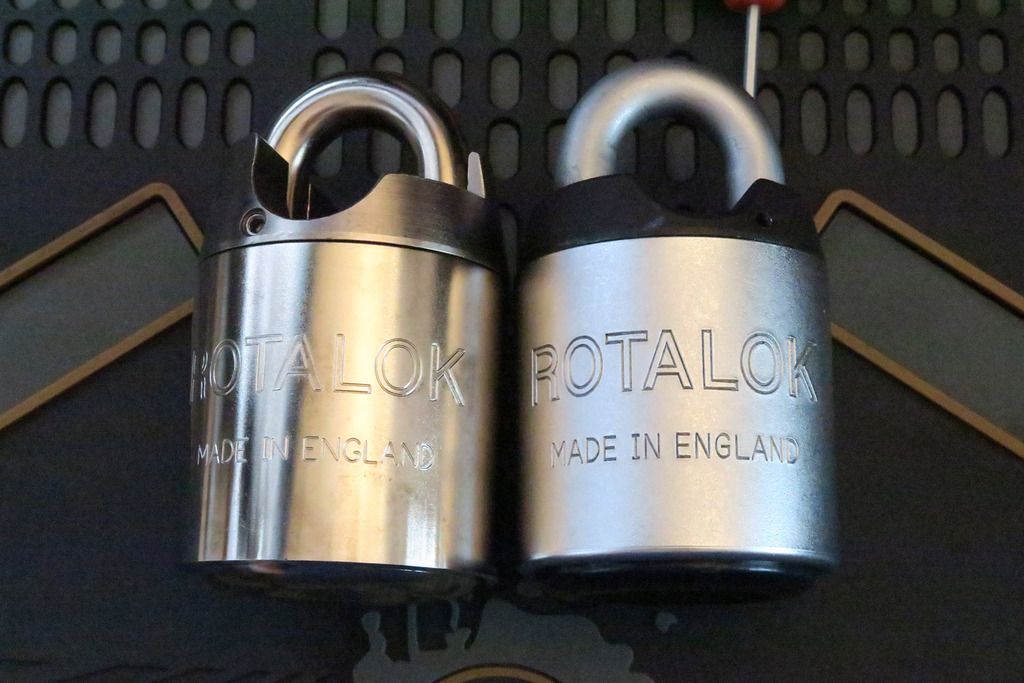
Older on the left, Newer on the right. I try to keep to this convention throughout all of these photos to keep it simple to compare and remember which is which (also in order for me to not mix the parts up!!)
So, what can we say from that photo? They are both stamped with the same ROTALOK and MADE IN ENGLAND lettering. The open shackle one has a black painted top and bottom piece, whereas the semi-closed shackle is silver all over. Note that this isn't such an oddity as the same is shown on Insight's site - for some reason, the open and fully closed shackle have the black ends whereas the semi-closed is all silver.
We can see that the shackle on the open shackle is a greer, duller colour and is thicker than the shiny semi-closed shackle version.
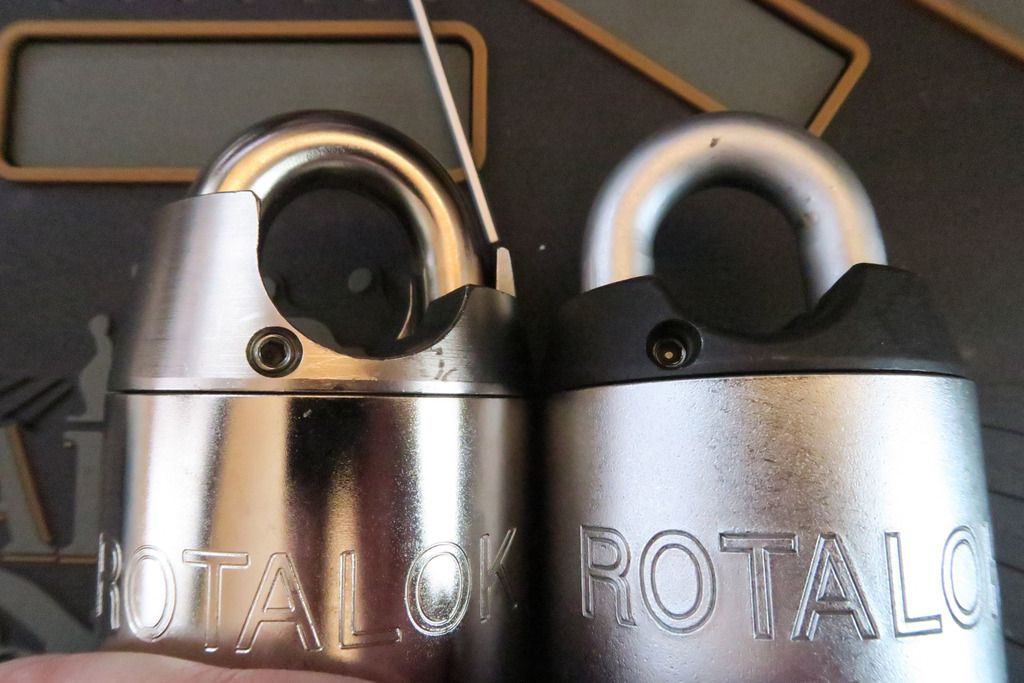
A closeup of the set-screw hole holding the shackle in shows that the right lock has its screw recessed, whereas on the left the screw sticks out further towards the front of the body.
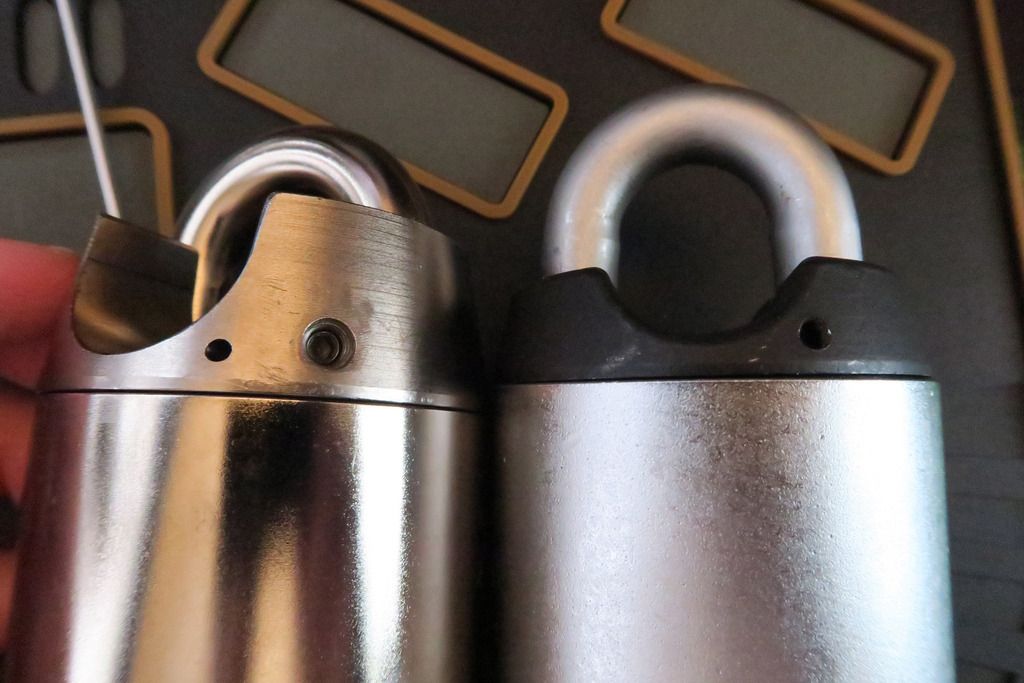
On the back of the shackle shrouds, you can see that left has two holes whereas right has only one. Both of the holes without screws are there to allow a small stick (I use a fine hex key) to push out the retaining rod once the set screw from the other side (see last picture) has been removed. The set screw holds the retaining rod in, however as the rod is usually lubed is can stick in place and need to be pushed out. It's this retaining rod that holds the shackle in. The other set screw on the left hand lock (semi-closed shackle) as seen in the above picture literally serves no obvious purpose - if you've read my lock thread post for that lock you'll recall upon removal there's just a blank metal wall behind, nothing that can be pressed or pushed out or interacted with in any way. It doesn't hold anything in. I have no idea what it's for.
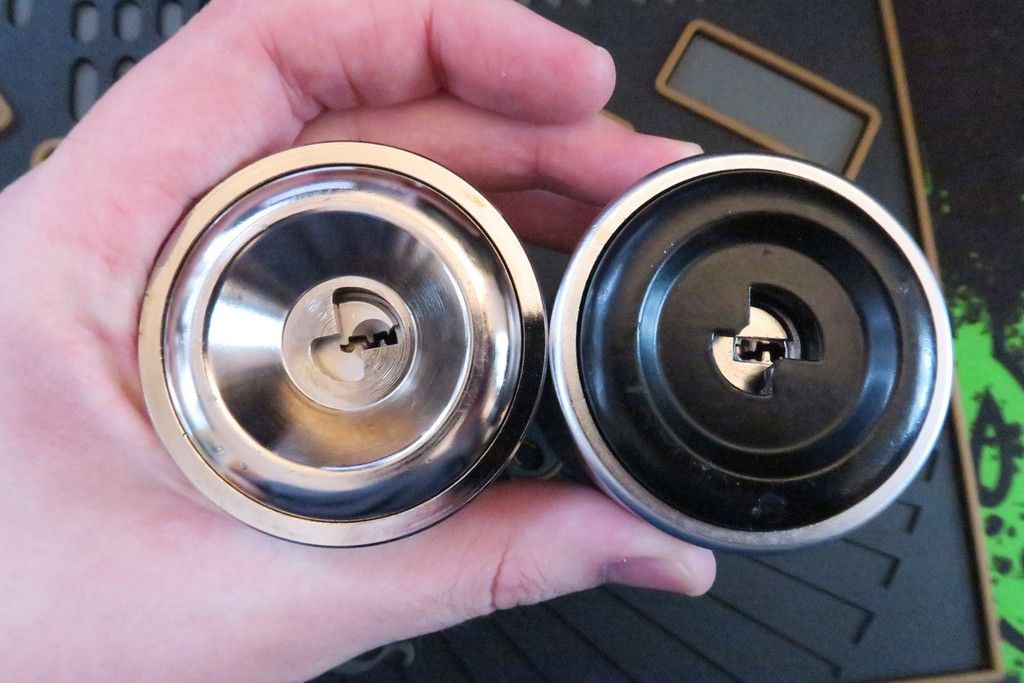
Bottoms of the locks. As previously mentioned, the older semi-closed lock has the stainless steel shiny bottom whereas the newer Rota has this black bottom. There is also a difference in the depth of the recess cone as you can see - likly the reason that the right lock is able to take an actuator add-on between the cylinder and back of the lock. The small divot at the bottom of the right lock was a scratch that I originally believed to be white paint but later realised was a scratch in the black material, which IS the paint - I believe that the metal is the same or similar underneath the paint as with the left lock. I did colour in this scratch with a sharpie which worked quite well to cover up the scratch! The left lock is using an Abus E60 pin tumbler cylinder whereas the right hand Rota is using the Cisa Astral dimple cylinder.
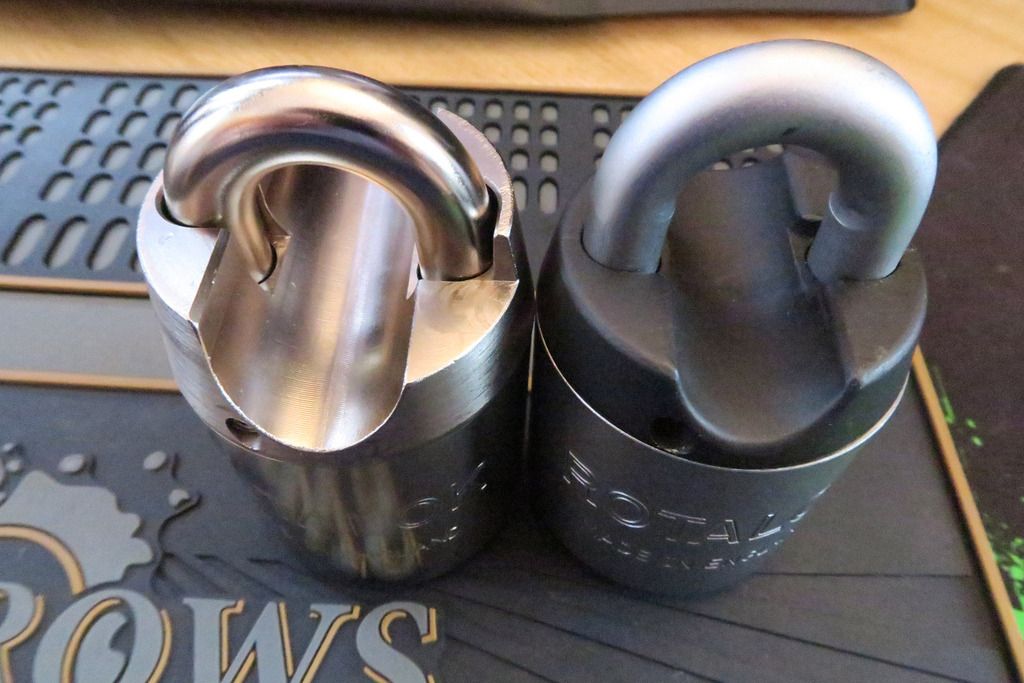
Both locks from above. Here you can see the differences between the open vs semi-closed shackle variants.
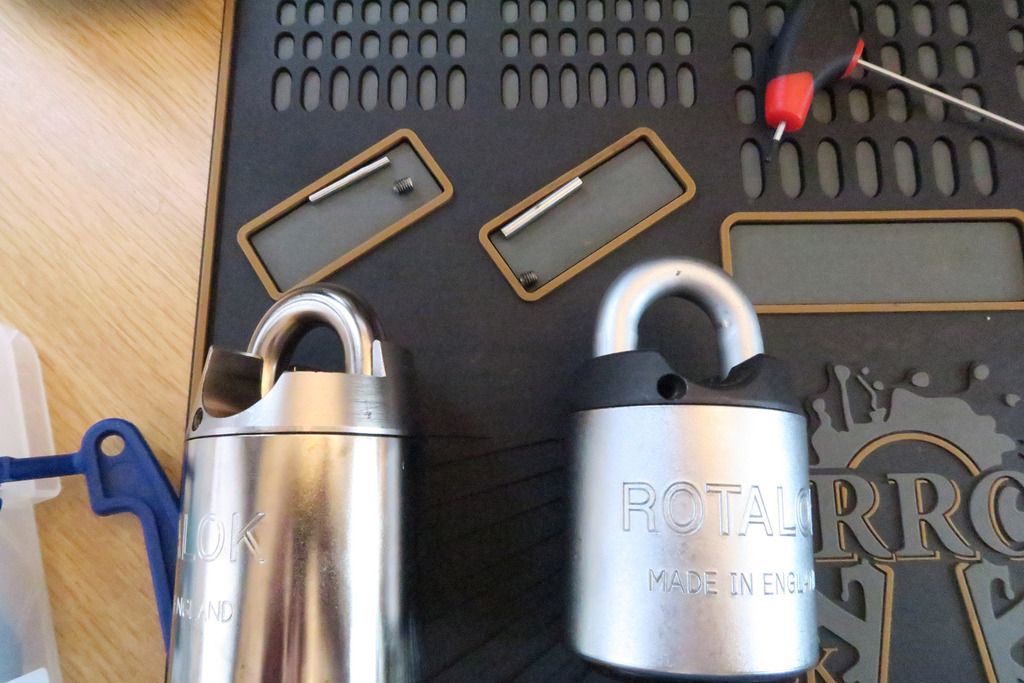

Here I've removed the set screw and retaining bar from the shackle retention hole. Notice that like the shackle, the retaining bar on the right lock is thicker than the left one. The set screw is also different - shorter and fatter.
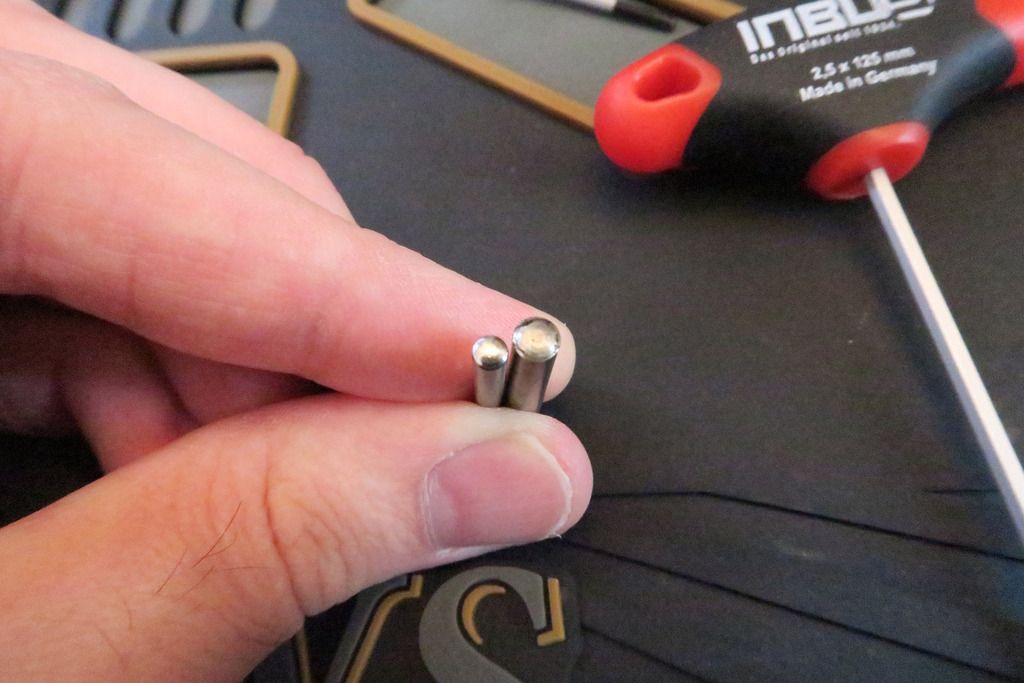
From the end you can see that the open-shackle lock's retaining bar is quite a bit thicker.
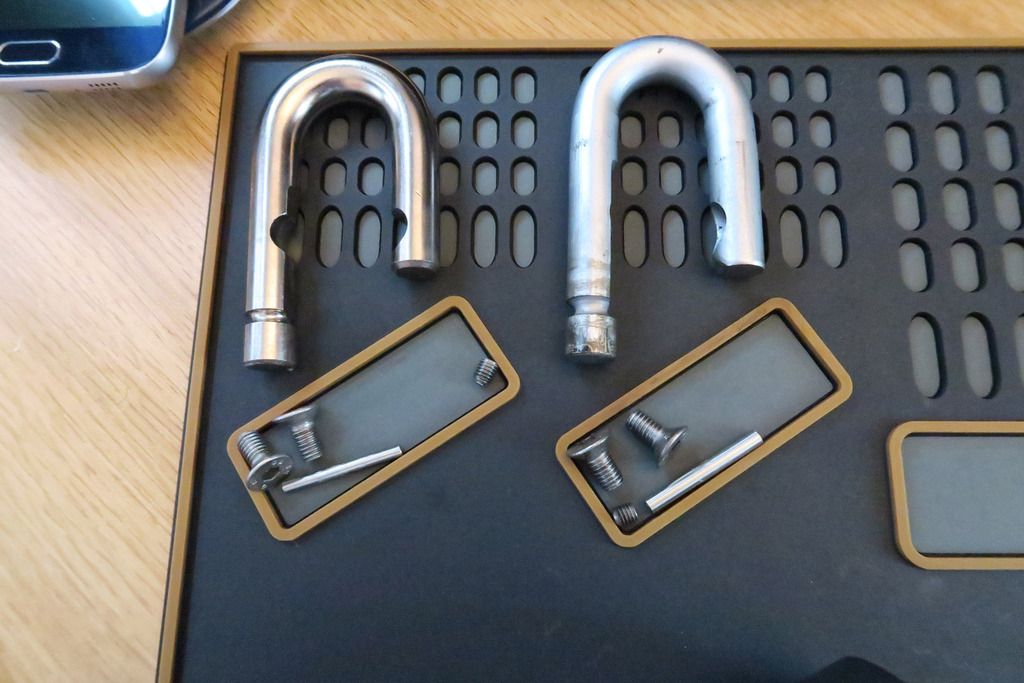
Shackles, Shackle retaining bars, and bottom plate screws removed.

Inside of the locks. As noted in my last Rotalok post, the right Rota has a lot of extra cutouts which I haven't been able to discern the purpose for - odd triangular cutout shapes and such. Note also that the left lock is silver inside whereas the right lock is Black. This is similar to another Rotalok post that I've seen, but different as that one had two stepped height cylinder cutouts, and not those weird side triangles. The rearmost actuators seem more or less the same.

Both bottom plates and cylinders from the side. Note the rear cam interface on the upper (open shackle) cylinder. We'll get to that!
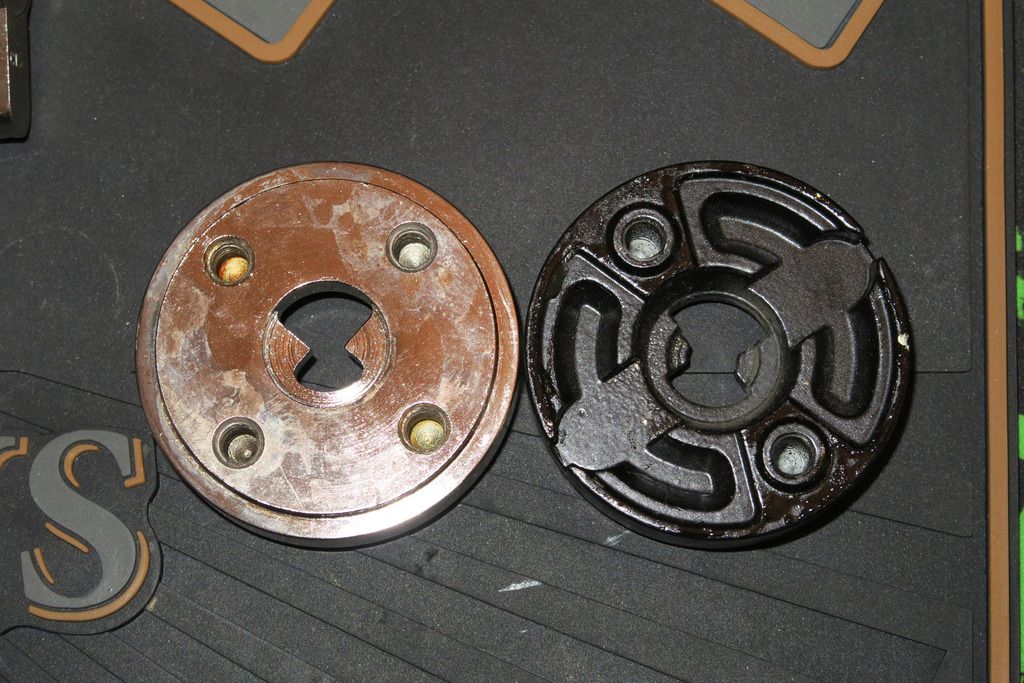
Noth bottom plates, side-by-side. The black/right one (open shackle lock) is at least similar, if not identical to the other one of these I've seen on the web. I've not seen one like my left hand bottom plate - the problem is that because it doesn't include a Euro profile cutout, cylinders cannot sit flush in here without either having a very sticky-out cylinder end, or filing away at the front of the bible, as is the case on the cylinder that came with mine.
The black bottom plate clearly makes more sense, and I'm wondering if the left one is an "alpha build" before they'd figured out what worked, whereas the right one was created after feedback concerning adding cylinders to these. I'd be very curious to take a look at Insight's identical all-silver semi-closed locks, since they look the same as this one from the outside yet the site reckons will take those cam modules, which I don't believe this one will.
I'm not 100% sure of the purpose of those semu-circular cutouts on the black plate which intersect with the cylinder cutouts. I'm guessing it's something to do with the strange triangular cutouts in the body.
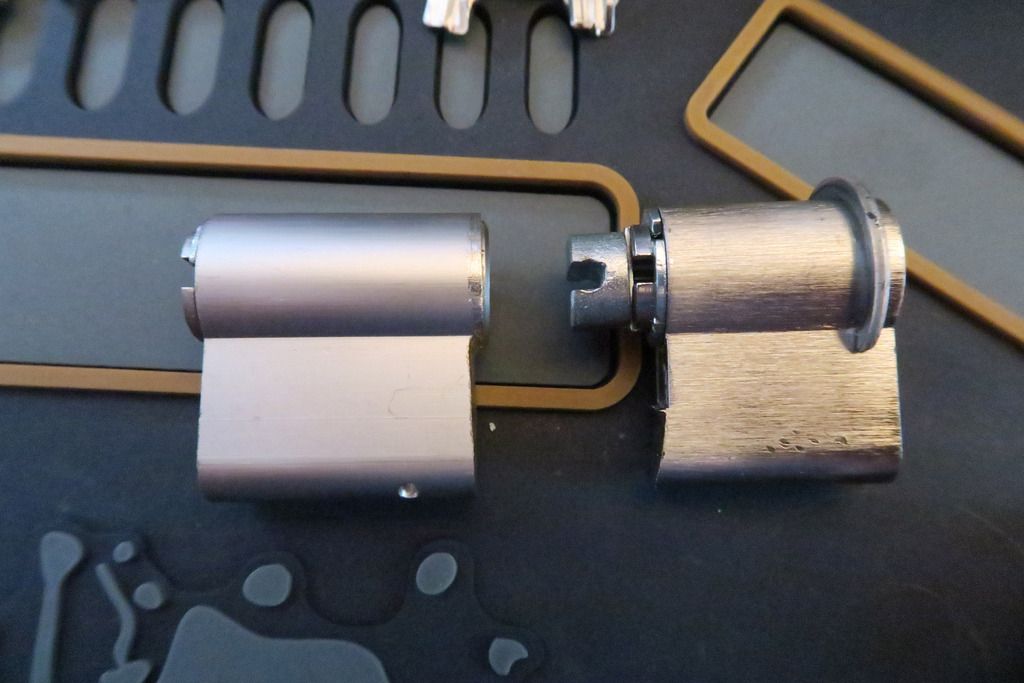
Both cylinders next to each other - left is from the semi-closed and right is from the Open. From here we can tell a few things:
1. The right Rota takes a Cam interface as seen here. The left one cannot and does not fit one of these.
2. You can tell from the slanted back of the bible on the right cylinder that it has been cut to size - either from a double Euro or a single Euro with standard Euro actuator. It does fit fine though. Although you can't really tell in this pic, the same is true of the left cylinder.
3. Near the front of the right cylinder on the plug area you can see a metal "halo" ring has been added, likely some kind of C clip or similar. I'm not sure if this was added at the Cisa factory, is an official addon piece at the Rotalok factory (or cylinder fitting kit supplied by them), or was simply DIY'd on by a third party. It serves the purpose of holding the front of the cylinder steady in the bottom plate, whose cutout is not quite the right size or shape for this. It seems that no matter which Rota I examine, they all need a bit of DIY and bodging to work!
4. You'll notice that material has been removed from the front of the bible on the left cylinder whereas the right one has not been filed at all. I assume that's due to the cylinder cutouts in the bottom plate.
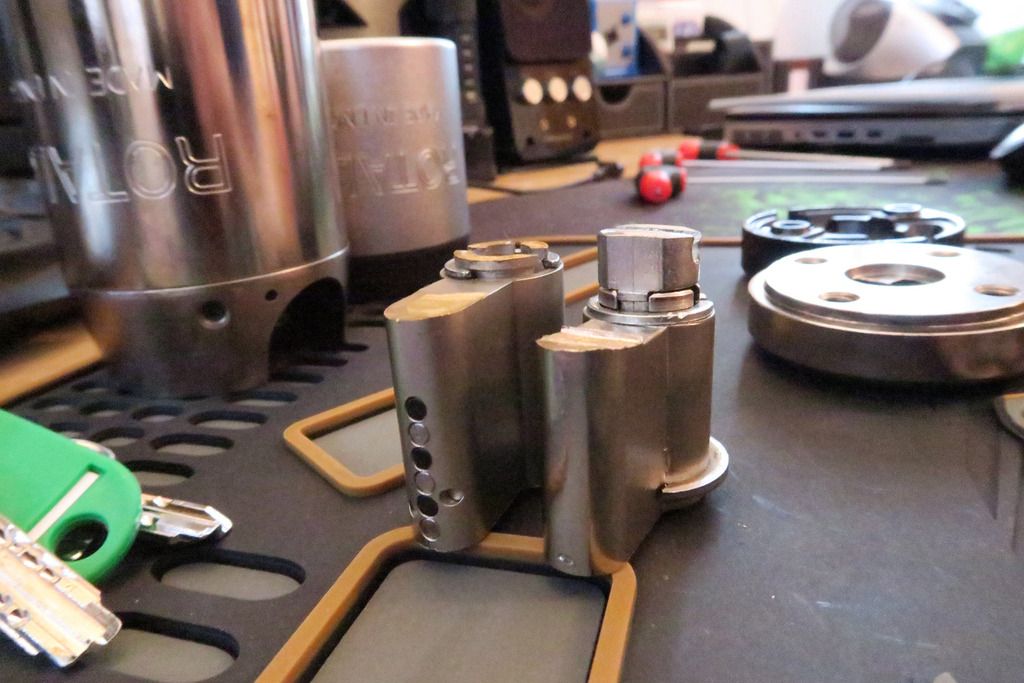
From the back you can see the flatter but still filed away rear of the left cylinder vs the also filed down right one.
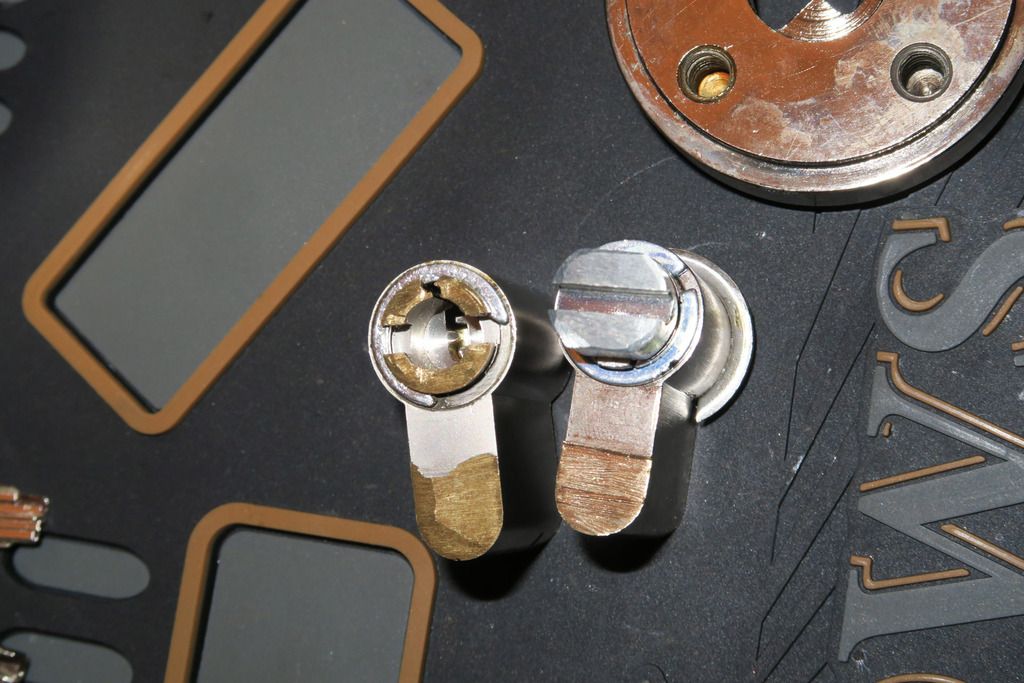
Backs of the cylinders, where you can also see how they have been filed down. You can also see that the rear of the left core's actuator has been filed down, whereas due to the cam interface this wasn't needed for the right cylinder.
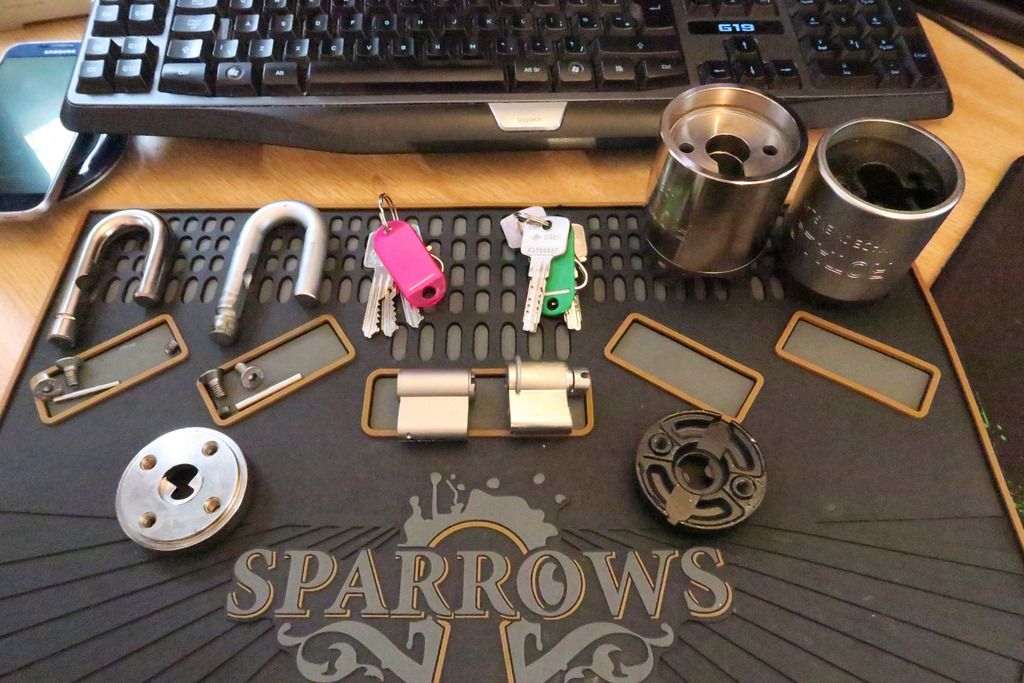
Everything laid out - semi closed shackle / silver / older Rotalok stuff on the left and open shackle / silver and black / newer Rotalok stuff on the right.
And that's it for this update - and is my last update for now! I do have other ideas in the works as well as other locks on the way so keep a keen eye out as I hope to be covering more stuff in the future!
For now though, thank you for following my progress and I look forward to sharing more with you in the future!




